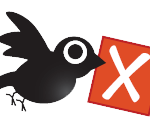Team Accountability – Workshop 6 (Eagle Part 2)

The Appleton Greene Corporate Training Program (CTP) for Team Accountability is provided by Mr. Teschner MBA BA Certified Learning Provider (CLP). Program Specifications: Monthly cost USD$2,500.00; Monthly Workshops 6 hours; Monthly Support 4 hours; Program Duration 12 months; Program orders subject to ongoing availability.
If you would like to view the Client Information Hub (CIH) for this program, please Click Here
Learning Provider Profile

Mr. Teschner is a transformational Leadership Coach and Trainer and Founder & CEO of VMax Group. VMax Group is a St Louis-based Leadership Development company specializing in teaching accountable leadership and high-performing teamwork to businesses across the globe. VMax Group has centered much of its signature training around the proper practice of Accountability. Real Accountability—positive, forward-focused Accountability centered around the process of taking Absolute Ownership for the outcomes the team achieves—is something Mr. Teschner and his team lived during their collective time as member of high-performance military teams. Now they’ve made it their mission to teach what they know to those who need to learn it.

A decorated graduate of the U.S. Air Force Academy, Air University, and the National War College, Mr. Teschner is also both a Distinguished Graduate and former F-15 Instructor at the USAF Weapons School – the Air Force version of “TOP GUN”. It was there that he honed his craft of teaching accountable leadership to the top practitioners in the world. Additionally, Mr. Teschner was privileged to command an operational F-22 “Raptor” squadron, flying America’s most advanced air supremacy platform. Mr. Teschner was ultimately honored to be promoted to the rank of full Colonel but retired early as a result of a battle with colon-rectal cancer. Mr. Teschner has over 20 years of hands-on leadership experience in High-Performance, High-Reliability Organizations and brings all of that experience with him wherever he speaks, teaches or coaches.

Mr. Teschner has a special way of connecting with his audiences, blending high-impact stories of fighter aviation and personal humility to achieve the intended outcome. In addition, his story of his personal fight with cancer serves as the launch pad for talks about humility, growth, motivation, and constant improvement. Mr. Teschner is the author of the #1 bestselling book, Debrief to Win: How High-Performing Leaders Practice Accountable Leadership, and released his newest bestselling book Aiming Higher: A Journey Through Military Aviation Leadership, a book co-authored with 4 other former Air Force pilots, in May of 2022. His next book, Building Resilience, is due out in the Spring of 2023.
MOST Analysis
Mission Statement
This will be an EAGLE planning practicum, an opportunity for the team to plan and provide feedback to one another. Outcome: the team is comfortable with tactical planning IAW EAGLE. Desired Learning Objectives. We are able to apply the EAGLE Planning Process to a practical example. We are able to provide meaningful feedback on how EAGLE was applied.
Objectives
01. Importance Of Feedback: departmental SWOT analysis; strategy research & development. Time Allocated: 1 Month
02. Feedback In Planning: departmental SWOT analysis; strategy research & development. Time Allocated: 1 Month
03. Feedback System: departmental SWOT analysis; strategy research & development. Time Allocated: 1 Month
04. Employee Feedback: departmental SWOT analysis; strategy research & development. Time Allocated: 1 Month
05. Customer Feedback: departmental SWOT analysis; strategy research & development. Time Allocated: 1 Month
06. Continuous Feedback: departmental SWOT analysis; strategy research & development. Time Allocated: 1 Month
07. Outcomes of Tactical Planning: departmental SWOT analysis; strategy research & development. 1 Month
08. Formal Review: departmental SWOT analysis; strategy research & development. Time Allocated: 1 Month
09. Feedback Culture: departmental SWOT analysis; strategy research & development. Time Allocated: 1 Month
Strategies
01. Importance Of Feedback: Each individual department head to undertake departmental SWOT analysis; strategy research & development.
02. Feedback In Planning: Each individual department head to undertake departmental SWOT analysis; strategy research & development.
03. Feedback System: Each individual department head to undertake departmental SWOT analysis; strategy research & development.
04. Employee Feedback: Each individual department head to undertake departmental SWOT analysis; strategy research & development.
05. Customer Feedback: Each individual department head to undertake departmental SWOT analysis; strategy research & development.
06. Continuous Feedback: Each individual department head to undertake departmental SWOT analysis; strategy research & development.
07. Outcomes of Tactical Planning: Each individual department head to undertake departmental SWOT analysis; strategy research & development.
08. Formal Review: Each individual department head to undertake departmental SWOT analysis; strategy research & development.
09. Feedback Culture: Each individual department head to undertake departmental SWOT analysis; strategy research & development.
Tasks
01. Create a task on your calendar, to be completed within the next month, to analyze Importance Of Feedback.
02. Create a task on your calendar, to be completed within the next month, to analyze Feedback In Planning.
03. Create a task on your calendar, to be completed within the next month, to analyze Feedback System.
04. Create a task on your calendar, to be completed within the next month, to analyze Employee Feedback.
05. Create a task on your calendar, to be completed within the next month, to analyze Customer Feedback.
06. Create a task on your calendar, to be completed within the next month, to analyze Continuous Feedback.
07. Create a task on your calendar, to be completed within the next month, to analyze Outcomes of Tactical Plannings.
08. Create a task on your calendar, to be completed within the next month, to analyze Formal Review.
09. Create a task on your calendar, to be completed within the next month, to analyze Feedback Culture.
Introduction
Since at least the mid-twentieth century, the subject of how to motivate employees to develop has sparked considerable debate and research. Nonetheless, the debate has recently become more heated. Bridgewater Associates’ ongoing experiment in “radical transparency” and Netflix’s culture, which the Wall Street Journal recently described as “encouraging harsh feedback” and subjecting workers to “intense and awkward” real-time 360s, are just two examples of the overarching belief that the way to increase performance in companies is through rigorous, frequent, candid, pervasive, and often critical feedback.
How should feedback be given and received? We are perplexed. How much, how frequently, and with which new app? And, given the uproar over Bridgewater’s and Netflix’s methods, how hard-edged and fearlessly open should we be? Yet, there is another question that we are ignoring, and it is a critical one. The pursuit of better ways to give and receive feedback assumes that feedback is always beneficial. But we’re just interested in it because we want to help people achieve better. And when we investigate it, asking ourselves, “How can we help each person thrive and excel?” we discover that the answers lead us in a different route.
To be clear, instruction—telling people what steps to take or what facts they lack—can be quite beneficial: That is why checklists are used in airplane cockpits and, more lately, operating rooms. There is a proper manner for a nurse to safely administer an injection, and if you, as a new nurse, miss one of the steps or are uninformed of key data regarding a patient’s condition, someone should notify you. However, the instances in which the actions or knowledge required to accomplish a job can be objectively stated in advance are few and increasing rarer. What we mean by “feedback” differs greatly. Feedback is about telling individuals what we think of their performance and how they may improve it, whether it’s giving an effective presentation, leading a team, or developing a strategy. Yet the evidence is unambiguous on this point: telling individuals what we think of their performance does not help them grow and excel, and telling people how they should better actually hampers learning.

The Influence Of Feedback
With organizations under pressure and budgets even more so, picking someone to grow and advance has never been more difficult, vital, or financially scrutinized. Human resources departments are responsible for delivering focused and accountable training programs, developing up-to-date succession plans, and managing talent pools, and they are increasingly being challenged to perform more, faster, and for less money.
Feedback is a very successful and surprisingly low-cost method of assessing and developing individuals, teams, and the organization as a whole. Cost-effective ‘talent’ technologies are now available for businesses of all sizes, and the broader benefits can be realized without the requirement for full-fledged enterprise systems. When used properly, these technologies enable employees to receive organized and relevant feedback on their performance, create focused training plans and work experience opportunities, and set realistic career goals. Collecting outcomes for the organization can assist inform the overall skills development plan, training, and succession planning. This article investigates the role and contribution of feedback to the development of individual and organizational capabilities.
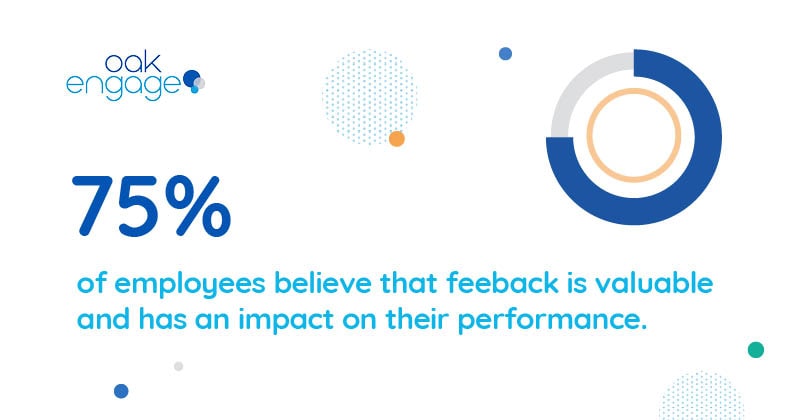
Without feedback, the individual is unaware of the impact of their decisions and actions on their organization and relationships – it is the key to self-awareness. Feedback can originate from a variety of formal and unstructured sources, such as financial, business process, or HR data (staff turnover, for example), as well as subjective sources such as comments or ratings from managers, colleagues, or consumers. Because of the relationship and potential damage to their self-identity, senior personnel frequently fear receiving feedback. Yet, feedback can include both good and negative features, and it is increasingly being sought and used for purposes other than developing self-awareness.

Feedback Collection And Reporting
Aside from seeking feedback for personal learning and development plans, common causes for launching a feedback program include HR activities such as:
• selection for progression and promotion
• performance evaluation
• selection for leadership and management development programs
These feedback programs involve the collection of structured and unstructured input (usually utilizing a questionnaire as a diagnostic) from colleagues who work with and around the individual, hence the phrases ‘360° reviews’ or, in the United States,’multi-rater feedback’. Gathering feedback from individuals with whom an individual works can be particularly cost-effective when compared to other evaluation approaches, such as assessment centers.
A 360° evaluation often results in a personal report that compiles comments from these sources into a single document for the individual. The report’s analysis emphasizes important strengths and development areas, frequently pointing to accessible development options. The worth of such a report is determined by the measures taken as a result of its investigation. It is best practice (though unfortunately not consistently practiced) for a trusted person to assist an individual in interpreting the data, framing the feedback to suit their own perspective, and identifying development solutions that can contribute to the individual’s overall development plan.

Giving Useful Feedback
As managers, HR experts, and psychologists, we should be used to providing feedback on a daily basis, and we are frequently asked to act as feedback facilitators, assisting employees in understanding and utilizing their 360°feedback reports. We may also be requested to provide input to people on subjects that others may avoid, or to persons who have shown to be particularly difficult. This simple FEED model will help guarantee you make a worthwhile contribution in these scenarios, as well as in any situation where you need to provide feedback to someone else:
• FACTS
Explain what the person actually does – how does the behavior appear? What did they have to say?
• EXAMPLE
Please provide a recent example or case where this was critical.
• EFFECT
What impact does this have (on other people’s impressions, the individual’s work, you, the team, and clients)?
• DIFFERENT
Offer an alternate strategy, or ask the person what they could have done differently. This paradigm is applicable to any type of feedback and should be a primary consideration when creating and implementing 360° programs.
Responding To Feedback
How we react to good and negative feedback is heavily influenced by our genetic make-up. People who are driven to succeed and achieve goals (‘positively wired’) interpret and internalize positive and negative feedback very differently from those who are driven to avoid failure and punishment (‘negatively wired’). A highly motivated goal-driven employee, for example, will view positive feedback as validation and reinforcement of present behavior. This generates a virtuous loop in which the individual strives harder. Negative feedback has little effect on these people unless it is brought to their notice with clear repercussions. The opposite is true for people who dread failure: negative feedback motivates them to try more, whereas positive input has no impact on their motivation levels. People frequently believe they have ‘escaped’ whatever consequences they dreaded. When individuals receive feedback without guidance or assistance from an experienced coach or facilitator, it will only act to reinforce current behaviors (some desirable, some less so) and will have very little impact other than maintaining the status quo or exacerbating matters: we have all seen highly successful people derail themselves due to a lack of awareness of the downsides to their behaviors. Although some people dislike input, others appreciate it, but soliciting feedback can be dangerous.
Negative peer reactions might add to the psychological cost of seeking feedback for persons who are not offered assistance. People that have a positive feedback orientation (that is, they seek it out and enjoy receiving it) understand how beneficial it can be, and they tend to be both resilient and sensitive to how others perceive them. They also feel responsible for taking action based on feedback for their own growth and development. These people are also commonly labeled as ‘constant learners’.
Therefore, while it is well acknowledged that feedback is crucial for the learning process, many of us still find it difficult to respond constructively, particularly to input that is regarded as negative. Other people, on the other hand, are uncomfortable when they are given praise. Well-thought-out and properly crafted feedback (as stated in the preceding section) can assist overcome less-than-enthusiastic responses to performance or behavior reviews. Some people are more naturally responsive to comments than others, but timing is also important in achieving a positive response. While there are no hard and fast rules, the following recommendations may be helpful:
When to Provide Feedback
• When the individual requests it;
• Immediately after the individual has completed a 360° review process, assessment, or development center; and
• Quickly after a key event in which the individual either performed exceptionally well or might have done better.
• When the individual appears to be unaware of an issue that is harming their performance or restricting their possibilities of advancement
• When the individual’s performance or behavior is affecting others
• During coaching sessions or informal discussions about the individual’s performance
When Not To Provide Feedback
• When the individual is not ready to hear it (for example, if they are agitated or angry)
• When there are distractions or other people around (particularly if the feedback is of a critical nature)
• When there is insufficient information to provide meaningful feedback;
• When an individual has already received appropriate feedback but is avoiding taking responsibility for doing anything about it; and
• When the individual is demonstrating resistance to the overall development program.
Overcoming Defense And Resistance Mechanisms
In their book Behavioural Coaching, Suzanne Skiffington and Perry Zeus emphasize the need of knowing defense mechanisms while offering feedback. They use the example of someone who claims to enjoy both positive and negative feedback but is actually guarding themselves against rejection or hurt. When given bad news, most of us experience some discomfort, and it is critical that both the feedback source and the recipient realize this when discussing performance. The feedback provider’s responsibility is to be sensitive and vigilant to the recipient’s feelings and reactions, and the recipient’s job is to be as open-minded as possible: everyone’s views can differ, and other people’s perspectives are valuable, even if they don’t always match our own.
When you are forced to provide feedback, it is also important to remember that few people are completely comfortable doing so; nevertheless, with practice, preparation, and certain principles to follow, the experience does not have to be unpleasant for either you or the recipient.

The Quantitative Significance Of Feedback
According to a Top Employers Institute research of 600 firms from 99 countries, experts believe that feedback is the best way to gauge performance.
According to the data gathered, the standard yearly performance review is insufficient for most workers, who demand speedier and more consistent feedback as well as more transparent goal-setting methods.
Brazilian enterprises, in this regard, provide a solid insight into how it appears to be in line with the worldwide trend.
Brazil had 26 participating firms with a combined workforce of 300,000 experts.
According to the poll, all of these organizations offer management training programs that emphasize open, constructive, and continuing feedback.
Brazil has a higher rate than several wealthy countries, including Italy (87%), the United Kingdom (90%), and France (79%).
Goal openness is another intriguing phenomenon. Managers have totally transparent communication on performance objectives with collaborators reporting directly to them in 79% of the Brazilian firms studied. In France, this figure is only 13%, whereas in Germany, it is 43%.
The study indicated that organizations recognized by the Top Employers Institute have matured and begun to redefine their employees’ performance goals by shifting them from once-a-year assessments to processes of continuous and transparent communication carried out on a daily basis.
What Benefits Can Providing Feedback Bring To Your Company?
Some people associate feedback with scolding and negative emotions such as fear and hurt.
Criticism is frowned upon in some cultures. When it comes to correcting something that does not match standards, hostility is the most commonly used resource.
To modify such perceptions, the feedback process must be elevated to the level of organizational culture. And should be pushed as a key activity for personal development as well as for starting and running a business.
Being appraised is typical when providing services or selling items. Unfortunately, the answer may not be as positive as expected, leading to disappointment.
Knowing how to deal with negative feedback is critical for seizing growth chances.
It comes down to a choice: either move forward or retreat in rage.
Establishing a feedback culture and fostering it among managers and subordinates maintains the organization’s dual path. In time, the ability to accept critique will come naturally, bringing harmony to the workplace.
Respect becomes mutual with the adoption of feedback as a culture, resulting in more synchronous and dynamic communication and relationships. Everyone benefits: the team, the leader, the firm, and the customer.
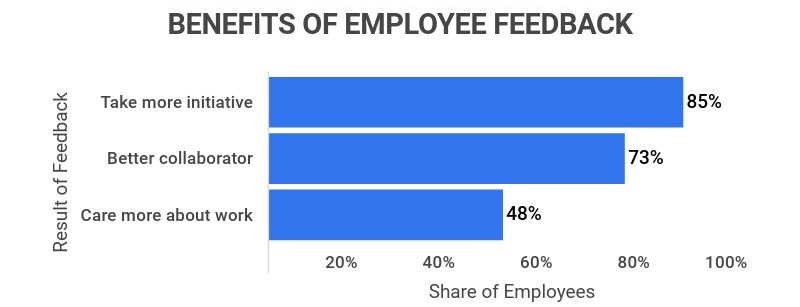

The Impact of Technology
Technology plays a key role in both managing the feedback provision process and assisting in identifying ways for people to act on their comments. Following a feedback loop, a set of development alternatives closely aligned with the objectives of the individual’s work can be a crucial pillar of support, and these development options are frequently available within Learning Management Systems (LMSs) or newly emerging career planning systems.
There is a clear and direct relationship between the use of feedback and diagnostic tools and an organization’s capacity to provide much needed focus and clarity on how to invest scarce development resources. Feedback tools such as 180° appraisals and 360° reviews, combined with career planning tools, can not only provide a rich source of feedback and a foundation for constructive dialogue between a line manager and a staff member, but they can also provide valuable insights for the overall skills portfolio, training plan, and succession planning process when used effectively across an organization.
Larger organizations have had the benefits of fully integrated HR systems for some time, but they do not always take full advantage of them. As the trend toward a more integrated approach to HR, training, recruitment, succession, and so on (commonly referred to as talent management) gains traction, the tools are more likely to be fully utilized. Yet, the obstacles have been larger for small and medium-sized businesses. Many organizations have dabbled in LMS and 180° and 360° feedback, but these programs are frequently based on onerous manual procedures and, most unfortunately, are not used successfully as feedback mechanisms for workers and the organization as a whole.

The Significance Of Feedback In The Digital Age
Examples of the irrefutable digital era include online resume repositories, corporate social networks, and recruiting portals. Yet, technological advancements present ongoing issues for human resource departments and general personnel management.
Because some catching up is required, resigning departments in charge of the connection between firms and the internal public is a source of concern and controversy among specialists.
Some businesses, particularly the younger ones, are adapting more swiftly.
Traditional corporations, on the other hand, may offer some resistance and struggle to conform into a new framework.
All businesses will succumb to technology at some point because it is an inherent aspect of society’s progress.
After all, individuals are becoming more linked every day, whether through social media, online banking, or internet purchasing.
To stand out or remain active in the market, organizations must follow and align with such shifts.
Businesses must understand their own demands and select the appropriate resource from among several options.
Digital transformation must encompass the entire organization, which entails adopting solutions that streamline procedures across many industries.
Expenses should be viewed as investments with both short and long-term returns.
Leadership must also be involved and adopt a fresh perspective.
Leaders must encourage change and view it as an innovation that will benefit themselves, their staff, customers, and suppliers.
In the digital age, thinking about feedback means imagining positive developments that will put the business one step ahead of its competition.
Putting technology projects into action lifts the company out of obscurity and elevates it to the status of a reference.
Feedback System
Internal communication is no longer merely a helpful resource for a firm. It has evolved into a strategic area.
Viewing people as a corporation’s most valuable resource has made a significant difference in supporting such change.
People are no longer happy with stale information and untrustworthy media. Employees want to learn about a company and its processes, but they also want to be involved in decision-making.
Employees who carry out projects within organizations are increasingly demanding open conversation and frequent engagement. Such openness and inclusiveness are essential for a healthy atmosphere and a strong culture.
As a result, specific platforms emerged with the goal of facilitating communication between leaders and partners. On smartphones or tablets, feedback is as simple as a few clicks.
It’s a simple and effective solution. Information flows in real time through systems that are open to all employees and ensure their opinions are heard.
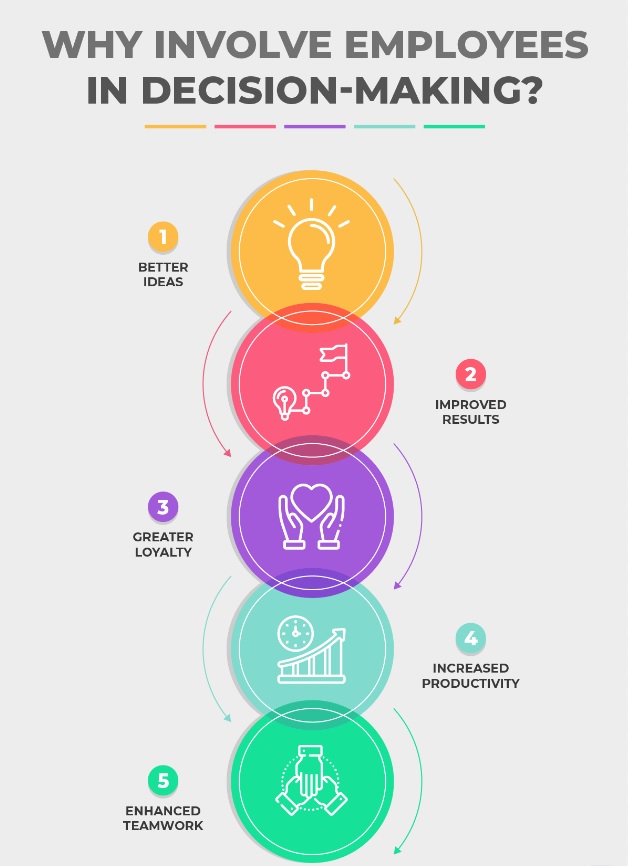

Creating A Vision For The Future
Performance improvement as a result of feedback programs is invariably dependent on the manager’s skills, and tragically, the manager’s growth is sometimes disregarded in the implementation of such systems and processes. The manager and employee have access to and comprehension of the organization’s advancement options. Internal job boards make inroads, but they fail to let employees determine any direction for themselves (or place their development in any perspective) other than that provided by the current crop of openings. Career planning tools go well beyond simply advertising current openings on the intranet by providing a comprehensive perspective of the skills and expertise required for all roles within the organization. Employees can evaluate their skills against prospective new jobs and design a personal growth pathway within a framework of realistic expectations on both sides with the proper support and coaching from their line manager and the Learning & Development team.
Learning and Development’s Contribution
The function of training manager takes on a new significance and an altogether more exciting perspective in the world of integrated talent management. The key to success is understanding where the firm is heading conceptually and then translating that understanding into talent requirements. The training manager must then use HR systems to guarantee that the right skills are recruited, trained, and developed, as well as that sufficient internal skills and experience are built up for the future and fed into the succession planning process.
When properly positioned, this positions Learning and Development as an added value function, a critical component of HR, and a critical contribution to the organization’s future competitiveness.
Executive Summary
Chapter 1: Importance of Feedback
Why Is Feedback Crucial At Work?
It is critical for employees to receive feedback on how they are performing and where they may improve in their roles. We will look at four reasons why feedback is vital.
A feedback-rich culture, in which employees feel comfortable asking for and receiving feedback from their coworkers and management, can significantly alter how a business runs.
However, too often, feedback occurs only once a year, at annual reviews or appraisals. Do you recall the last time you received comments on your work performance? It was probably too long ago if you had to think about it for more than a few seconds.
Receiving feedback can be intimidating for some people, but it is very necessary if you want to build motivated and high-performing teams.
This is why.
It instigates change and promotes growth.
People can look at themselves differently after receiving feedback. It enables them to observe how others see them and the impact their behavioral style and working methods have on others on the team. This is especially useful for leaders, since it allows them to identify how they can better engender trust and inspire improved performance from their team.
Furthermore, because most individuals naturally desire to succeed at work, they are generally quite responsive to constructive input. According to the Harvard Business Review, 72% of people believe that if their supervisors provided critical feedback, their performance would increase. According to the same survey, 57% of respondents prefer corrective criticism to pure praise and appreciation.
Even if they aren’t actively supporting it, an employee may get constructive criticism that resonates with them and prompts a change that allows them to become more productive workers and better colleagues.
It provides them with a sense of purpose.
We all want to feel like we belong and are valued as individuals. In the workplace, this involves feeling valued for what we do and what we provide to the company, as well as understanding that we are part of a larger team working toward the same goals.
We get a sense of purpose when we realize we are valuable and cherished. It demonstrates that what we do has meaning. This is what motivates people to come to work every day and give their all. We may demonstrate employees that they are valued and helpful by providing regular feedback. Even negative feedback can motivate people to do better. Any feedback, good or poor, will reinforce to your staff that their efforts are worthwhile.
It boosts staff engagement.
According to an Officevibe survey, 4 out of 10 workers are actively disengaged when they receive little or no feedback. The study also emphasized the importance of employees receiving regular feedback. Only 18% of employees with low engagement receive feedback at least once a week, compared to 43% of highly engaged employees.
Employees want feedback, even if they don’t express it. With the ambitious and growth-driven younger generations of Millennials and Gen Y now constituting a sizable section of the workforce, feedback will only become more important for businesses. Millennials, dubbed the “most ambitious generation,” aspire to constantly learn and improve.
It aids in the improvement of working relationships.
Peer to peer feedback facilitates communication among employees. This is especially effective when there is dispute or tension among colleagues. Giving feedback is an opportunity to get things out in the open so that problems may be resolved and better ways of working together can be found. Furthermore, regular feedback can help to avoid conflict in the first place. Small difficulties can be resolved before they grow into larger ones.
It is critical for employees to receive feedback on how they are performing and where they may improve in their roles. But we’re not talking about annual reviews or appraisals here. Organizations, on the other hand, require a healthy, open culture in which employees provide and receive feedback on a regular and fluid basis.

Chapter 2: Feedback in Planning
Why Is Feedback Important?
When it comes to planning, integrating feedback can be really beneficial.
For starters, it increases team communication and collaboration. When you ask colleagues, stakeholders, or employees what they thought of a session, you might gain a better picture of what they need to take away. This means that group meetings, interviews, and catch-ups are more productive, effective, and efficient since you are not distracted by tangents and can focus on what is important.
You’ll also notice that making decisions becomes easier. Feedback will provide you with a broader range of ideas and opinions, allowing you to consider both sides of a debate before reaching a final decision. Furthermore, when team members believe their voices are being heard and their opinions are valued, they are more inclined to support the decisions you make. They will prepare for your meetings and contribute since they understand how important it is.
This brings us to our final point. Employees who feel heard will take more responsibility and ownership for their actions. They’ll be happier at work and less likely to burn out. They will feel more confidence in completing their tasks if they know they can come to you with concerns or proposals for improvement. They speak up in meetings, which should improve the efficiency with which they provide results.
How to Collect Feedback
Now that we understand why feedback is required, how do we collect the necessary data to make a difference?
A post-meeting survey or questionnaire for scheduling a follow-up is useful for receiving a rapid reaction to what just happened.
If you’re working with a large group of people, chatting to them one-on-one isn’t always feasible. A brief survey allows you to maintain your finger on the pulse and ensure you’re on the correct track. It’s also a terrific way to gather anonymous feedback, which is important if some members of your team are reluctant to speak up in person.
If you want anonymous feedback, create some questions in your Forms linked to a Google Calendar account and don’t ask for any identifying information like email or name.
Of course, if you really want or need specific input, 1:1 meetings or focus groups are always ideal. Using a company scheduling app can help you locate a time that works for everyone.
If you’ve just ended a huge meeting, splitting it up into smaller groups or even individual catch-ups might help everyone feel more at ease sharing their ideas and opinions – without having to do so in front of a large group.
Finally, if you’ve planned a meeting agenda, you can include time for real-time input. Allow people to score the meeting as a group using Mentimeter or Sli.do. Alternatively, simply ask them what went well for them and what didn’t, and take note of what they say.
How To Make Your Feedback Matter
The first crucial lesson is to not solicit feedback from others unless you intend to act on it. Prioritize the most pressing issues and concerns stated and devise a strategy to address them.
If the meeting is recurrent, try designating some time to discuss the problem and see if there is a way to solve it. This might be a dedicated time block at the start of the session for open discussion or a special agenda item that addresses specific feedback.
Another thing to remember is that feedback does not always have to be negative. It also includes new ideas and suggestions, in addition to complaints and difficulties. Encourage active involvement and engagement from all attendees, and follow up with anyone who has presented an idea that you do not have time to investigate. This could imply using your calendar to allow them to book time with you following the meeting.
In addition to the follow-up, keep track of the feedback you’ve received so that its progression may be tracked over time. Determine what is and is not working, then make any required changes.

Chapter 3: Feedback System
Plan. Brief, Execute, Debrief (PBED)
PBED is meant to be integrated into all routine and non-routine processes. In this regard, PBED-style implementation has the potential to incorporate more individuals and perspectives in continuous improvement initiatives, particularly frontline workers who are closest to work-related difficulties and possibilities. Greater iterations and participation help to strengthen the cultural characteristics of continuous improvement throughout the organization.
Plan
In PBED, the planstage typically begins with the current best-known practice and expressly includes formal risk management in the plan. It’s worth noting that this applies to both routine and non-routine activity of various complexity. Less planning time can be devoted to well-known circumstances and surroundings, whereas more time can be devoted to complicated, dynamic, or innovative tasks, including dedicated contingency planning.
Brief
A key brief phase is included in PBED. Providing a pre-job brief allows the task leaders and team to account for concerns that were unforeseen at the time of planning or undetected by planners who are frequently different than the operators conducting the task. Briefing helps the team to account for changeable settings, conflicting operations, and human aspects such as weariness, skill/experience, proficiency, disability, and other concerns. By identifying and recognising roles and responsibilities, which is a crucial enabler of mutual support, plans can be altered to maximize the likelihood of success while also increasing collaboration and teamwork.
Execute
The execute phase focuses on task completion reliability, i.e. getting the job done right the first time. PBED stresses intelligent teams and the use of cognitive and collaborative non-technical skills to meet the planners’ objective in the face of changing conditions and unforeseen events. This necessitates a grasp of intent developed during planning and expressed during the brief, as well as adaptive capacity – the ability and willingness to adapt to changing situations in measurable terms in order to achieve success.
This, like the PLAN stage, can be tailored to suit routine and non-routine tasks of various complexity. The greater the activity’s novelty, complexity, or risk, the more mutual performance monitoring, assistance, or controls are added into task execution.
Debrief
The next stage is to create a dedicated debrief. Debriefing provides an opportunity for leadership, humble self-reflection, performance ownership, and the ability to improve team connections and trust.
Recognizing that poor planning, briefing, or individual or team performance could be to blame for poor results, the debrief reviews each area for potential improvement by bringing each individual’s unique perspective to bear. When leaders provide a humble self-critique, it fosters psychological safety for others to provide critiques of themselves and teammates, promoting future self-imposed discipline and dedication to the team and the greater organization.
PBED tries to assess goals and performance in order to learn from previous steps in the cycle. Conversations should avoid assigning blame for failures to individuals, instead concentrating on what and why inquiries to better understand how things may be improved. Learning is scalable and can range from improving individual knowledge, ability, and competency to improving team interaction and leadership skills to making procedural or policy changes that will benefit the entire business or industry.
This stage entails connecting workers executing the activity with other staff who have control over the system, as well as following through on updating procedures and rules and communicating changes and their rationale to all affected employees.
When carried out appropriately, each cycle provides the opportunity for continual development and serves to better inform the business about the intended work as conceived and the necessary variance in work as done.

Chapter 4: Employee Feedback
Everyone has heard about the significance of employee feedback. It is a requirement for every work team. You feel more engaged in your workplace when you know what others are doing and feeling. Continuous work feedback assists in the formation of stronger teams as well as the reduction of staff turnover, which is a big problem for every organization. Managers must pay greater attention to employee feedback; the questions today are how and why.
At first, feedback is a simple notion to grasp. It’s expressing your feelings and thoughts regarding something that happened in the past. Putting that into practice in the job may be a little more difficult. The difficult aspect is determining what each piece of input implies. When discussing this subject, further questions begin to arise.
What kind of feedback should you expect? How can you apply that knowledge to help you achieve your objectives? Is there positive and negative feedback? How can I receive unbiased feedback?
When it comes to feedback, there are a lot of crucial questions you should ask because it’s a highly complex topic. When referring to employee input, we attempted to address the key concerns so that we could present you with an informative approach to this topic, answering the main questions.
Let’s start with the fundamentals.
Why is it significant?
Employee feedback can be defined as sharing positive ideas regarding the workplace environment with your peers or higher-ups. It can and should originate at all levels of the organization. Employee feedback is extremely significant because it allows you to get information from various angles.
Feedback is, by definition, a reaction. It arises from what happens around you, and you begin to form an opinion about it at the same time. Feedback is vital in any organization for everyone to be productive and attain their full potential.
Important Takeaways
Employee feedback is a multifaceted topic that touches on a variety of concerns that have a direct impact on employee engagement and company productivity. This guide addressed many of those concerns and addressed the most often asked questions about employee engagement. We emphasized the essential points after much thought about what we presented to you.
Emphasized Important Takeaways
• Employee feedback is valuable because it represents a collection of diverse opinions on the organization and provides helpful insights into the workplace environment.
• Feedback must have a clear aim in order to help employees grow and to initiate a debate about work challenges.
• It is critical to receive both good and negative criticism so that you are aware of your strengths and flaws.
• Honest, timely, and valuable insights about your work performance are the foundation of good feedback.
• Negative feedback is limited in its analysis and lacks an optimistic outlook on the future.
• Employee feedback provides various advantages, including increased self-awareness. It promotes discussion and connections, as well as helping you grow and feel more accountable for your efforts.
• The concept of feedforward is the idea of using input to chart a course for the future.
• Employee feedback helps you perform better at work by informing you of areas for improvement and recognizing your efforts.
• Traditional performance assessments are out of date since they do not represent the daily changes and workplace environment of your workforce.
• Feedback should be ongoing since it helps you improve on a daily basis by offering specific information about your performance.
• You should concentrate on soliciting useful recommendations from your staff and using that input to continually enhance your performance.
• Use feedback to gain valuable insights for your personal development as well as useful information to improve your office environment.
• Your response to employee feedback should show your desire to assist others and yourself in growing and developing trusting connections with your peers.

Chapter 5: Customer Feedback
Effective client engagement provides insights about how to make a firm more efficient, productive, and profitable.
You may fine-tune your firm to match client wants and expectations by observing what works and what doesn’t.
Customer Reactions in a New Business
While our corporate vision thinks that customer feedback is more powerful than any other kind of consumer voice, it is multiplied 100x in your early weeks and months of operation. It is critical to learn what your early consumers believe. It is, in fact, everything.
You don’t have any precedent, and this may be your first foray into running your own business, so you need to know how your customers felt about working with you. Did they enjoy the options? Did they think the service was fantastic? Was the payment wait time excessive? You must be aware.
Understanding where you fall short is essential. These are the things you can immediately improve in a new business to ensure that your consumers become repeat customers who tell their friends and neighbors about you.
In particular, in our product, our feedback method will assist you in capturing the following:
• Net Promoter Score – Determine how likely your early customers are to recommend you to others. This “word of mouth index” will be your most effective promotional tool in helping you grow.
• Survey questions – Our lightweight surveys can assist you in gathering client feedback in areas like as value, experience, customer service, and more.
• Open text consumer feedback – By asking the customer about their experience, you can learn a lot about what’s right, just average, and incorrect so you can take action.
Aside from the commercial benefits of collecting all of this useful data and insight, you can also post consumer comments as reviews on your own website to improve your SEO efforts on Google and convert web traffic into shop visitors.
Choose The Best Combination Of Feedback
There are numerous ways to gather client feedback, and it is critical to determine which sources are most aligned with your goals.
Surveys generate statistical data that can be used to compare performance. Conversations in person allow for more detailed, qualitative input. Online reviews are useful for understanding the big picture, but they can be unreliable unless there is a large volume.
When using client feedback, it is critical to decide how it will be used. Is the goal to revamp a certain aspect of your service or to gain insights into product development? Companies may then determine which types of feedback are most effective and how to handle them in tandem.
When it comes to using consumer feedback, it’s critical to share data with your team so that everyone may contribute their opinions and learn from one another. After all, the customer experience has an impact on everything from finance and human resources to new product development.

Chapter 6: Continuous Feedback
There’s a lot of talk about psychological safety right now, mostly in regard to Google’s Aristotle project, which discovered it to be “by far the most important” component in team success.
Amy Edmondson defines psychological safety as “a shared conviction that the team is safe for interpersonal risk taking.” What kind of dangers exist? expressing ideas, concerns, feedback, and so on without fear of penalties. The notion is that when everyone’s opinion is shared, the team may learn from all of these perspectives and perform at its best.
A team has psychological safety to the extent that team members can speak openly about their thoughts and feelings without fear of repercussions.
It’s vital because if people can’t express themselves, they can’t relax and be totally themselves in their team, and as a result, they can’t produce their best work. It means that the team is missing out on their perspective, which is critical. We know that diverse teams outperform more homogeneous teams – and this cannot be due to differences in people’s thinking or the color of their skin…. It must be accepted into the team’s communication.
This course manual will focus on techniques to make it simpler to provide and receive feedback, hence increasing the psychological safety of the team. The goal is to provide you with insights, models, structures, and practical ideas to attempt in order to encourage feedback that increases psychological safety in your team (s).
Why Psychological Safety Is Important
There is a lot of evidence that psychological safety improves team performance significantly. Google notably conducted a study dubbed “Aristotle,” in which they discovered that psychological safety was the primary factor distinguishing low- and high-performance teams.
The psychological literature provides a more complete and sophisticated perspective. Collective intelligence is not connected with individual intellect, but it is correlated with (a) social perceptiveness (empathy), (b) equality in conversational turn-taking (psychological safety), and (c) gender diversity.
Yet, psychological safety necessitates subtle abilities. Sure, people should be able to express their true feelings – but only if they do it in a way that hurts everyone and destroys trust. Individuals must be able to express comments in a way that is easy to receive.
Make It Safer To Provide Feedback
Therefore, how can we empower people to provide feedback in a way that increases (rather than degrades) psychological safety?
It is critical to understand the nature of feedback. Sometimes people talk about delivering feedback when they genuinely want someone else to change or when they insist that someone change. That is not actual feedback; it is a request or demand. I propose nonviolent communication (NVC) for requests and demands (amongst many others).
Feedback is just delivering information from our point of view – and it’s best if it’s for the benefit of the individual or people to whom we’re providing feedback.

Chapter 7: Outcomes of Tactical Planning
Every business and organization makes strategies for their operations in order to give the team an action plan and produce the desired outcomes. Your team will learn about tactical planning in Eagle Part 2. Tactical planning is a kind of short-term planning and is associated with actions that demand immediate results. Middle-level departments use it to give their teams assignments to complete. Your team won’t go back once they are introduced to tactical planning and see its advantages!
What is tactical planning?
Strategic planning is long term, whereas tactical planning is short time and breaks down long-term goals. It stands out because it can be used to accomplish goals quickly. It is adaptable and can be improved as needed. Unlike strategic planning, which is of an essential nature and from which a business cannot stray. The adaptability of tactical planning makes it less hazardous since if something goes wrong, the business is not harmed. Middle departments use tactical planning to assign work to specific teams in order to accomplish long-term objectives.

Elements of Tactical Planning
There are various elements involved in tactical planning. For example: further breaking down organization goals which are more than two or three years long, having a goal-oriented timeline with short term targets, like, target for next three months or six months.
Other elements of a tactical plan are resources of the company, key performance indicators (KPIs), objectives, actions, goals of the company, flexibility and timeline determine the success or failure of tactical planning.
When Is Tactical Planning Employed?
Some factors determine when to use tactical planning in an organization.
Such as:
• When immediate action is required.
• The business or organization is about to take a significant action or decision.
• When strategic planning is complete and it is time to implement it.
• When the organization needs to achieve goals in the short term rather than the long term.

Chapter 8: Formal Review
Equipping your team to win
For business teams to emerge from the COVID-19 pandemic stronger than ever, companies need to ensure that their workforce is fully equipped with the necessary skills to manage the changing landscape and stay competitive. A recent survey by McKinsey highlights that 87% of executives are experiencing a skills gap in their workforce or are expecting one within the next few years. As a result, it has now become even more essential to develop existing expertise.
Setting the Standards for your Team
A company’s performance standards outline the expectations of its employees, including their roles and how they should act while in the workplace. Employers typically give new employees these standards while they’re onboarding to explain common employee goals and requirements. You may be interested in learning what performance standards are so that you can make or revise your employee guidelines to incorporate performance standards. In this course manual, we discuss what performance standards are by defining them, explaining why they’re important and listing different types of them, along with tips.
How to be a supportive teammate
Having a supportive working environment is good for everybody. In the UK, for example, people spend an average of 1,877 hours a year at work – that’s over a quarter of your waking hours! Feeling like you can rely on your colleagues makes a huge difference to your experience at work and can have an impact on your physical and mental wellbeing as well as your performance and that of your team.
The benefits of a supportive work culture
You have a deadline looming and you’re running behind, you can feel your stress levels rising sharply. In one scenario, you and your colleagues only ever focus on your own work and don’t get involved with each other or even talk much. In the other scenario, you regularly check in with each other and offer support when it’s needed – whether it’s simply a listening ear, or a spare hour to help.
Feeling supported at work is good for your psychological wellbeing. Humans are social creatures who need healthy human connection to thrive. Without this connection, we’re much more likely to suffer from depression and poor mental health, as well as unhealthy levels of stress which can affect physical health and productivity.
Conversely, having supportive relationships helps us feel secure and can reduce those feelings of stress. Also, helping and supporting others can have a positive effect on mental wellbeing, so actively playing a part in supporting your colleagues can give you both a boost.

Chapter 9: Feedback Culture
Creating a Culture of Feedback
You should be a firm believer in the importance of interpersonal feedback. People who want to be more effective and fulfilled at work must recognize their impact on others and the amount to which they are reaching their goals in their working relationships. Direct feedback is the most efficient approach for them to acquire and learn from this information.
However, the format of most interpersonal feedback — a discussion between two people — might deceive us into thinking it is a product of the relationship when it is as (if not more) a product of the surrounding culture. When working in a feedback-rich atmosphere, even people who aren’t interested in or adept at giving or receiving feedback will participate in the process (and develop). Even the most ardent and capable feedback champions will abandon their efforts if the organizational or team culture does not support them.
So, as leaders, how can we foster a culture of feedback? What does it take to develop a consistent commitment to interpersonal feedback? Here are four critical components:
1. Trust and safety
People must feel comfortable and trusted in order to provide and receive truly candid feedback. Judy Willis, a neurologist and educator, emphasizes the link between good feeling and performance, which we as leaders must promote in order for colleagues to learn from feedback. It is important to note that this does not imply avoiding conflict or merely providing support and comfort. It does imply being acutely aware of people’s preparation for a challenge as well as their emotional condition throughout a specific contact.
2. Harmony
We frequently believe that excellent feedback is genuine criticism, yet this is just half the picture. The other half is genuine positive feedback, which is often lacking in organizations. You can’t have one without the other, but there are so many barriers that keep us from providing and accepting positive feedback. We are concerned that it will come across as insincere. We are concerned that it is not genuine. We’re afraid it’ll make us look like jerks. We are concerned that it will make us appear weak. We’re not very good at it because we don’t do it very often. However, new research from Ghent University in Belgium suggests that positive feedback encourages self-development. Furthermore, as University of Washington psychologist John Gottman discovered in his study of long-term partnerships, the ratio of positive to negative exchanges is 5:1 even when there is disagreement. Strong relationships are built on genuine positive feedback, thus we must practice.
3. Normalcy
Trainings and workshops can provide an environment for people to be receptive to new ideas and experiment with new ways of communicating, but everyone returns to the real world the next day. To mainstream the desired behaviors within the organization’s culture, you must integrate them into your team’s everyday routines. If feedback is only given in unusual circumstances (such as a performance review or when something goes wrong), it will never become an organic part of the organizational culture. It must manifest itself in daily life – on a walk down the hall, at the end of a meeting, over a cup of coffee.
4. Individual Accountability
We must do the walk every day as leaders who want to build a feedback-rich culture. According to Lynn Paine and colleagues’ research at Harvard Business School, employees are more sensitive than executives to differences between organizations’ espoused ideals and actual actions. Our teams will take our lead on what is acceptable, and if we don’t take some risks in this area, they won’t either. What’s the point? This does not imply that we will always get it properly. If we’re taking significant risks, we’re certain to make blunders. The idea is to fail forward and see your failures as valuable learning experiences. Let individuals around us know that we’re working on improving our ability to provide and receive feedback, and solicit their comments on how we’re doing.
Curriculum
Team Accountability – Workshop 6 – Eagle Part 2
- Importance Of Feedback
- Feedback In Planning
- Feedback System
- Employee Feedback
- Customer Feedback
- Continuous Feedback
- Outcomes of Tactical Planning
- Formal Review
- Feedback Culture
Distance Learning
Introduction
Welcome to Appleton Greene and thank you for enrolling on the Team Accountability corporate training program. You will be learning through our unique facilitation via distance-learning method, which will enable you to practically implement everything that you learn academically. The methods and materials used in your program have been designed and developed to ensure that you derive the maximum benefits and enjoyment possible. We hope that you find the program challenging and fun to do. However, if you have never been a distance-learner before, you may be experiencing some trepidation at the task before you. So we will get you started by giving you some basic information and guidance on how you can make the best use of the modules, how you should manage the materials and what you should be doing as you work through them. This guide is designed to point you in the right direction and help you to become an effective distance-learner. Take a few hours or so to study this guide and your guide to tutorial support for students, while making notes, before you start to study in earnest.
Study environment
You will need to locate a quiet and private place to study, preferably a room where you can easily be isolated from external disturbances or distractions. Make sure the room is well-lit and incorporates a relaxed, pleasant feel. If you can spoil yourself within your study environment, you will have much more of a chance to ensure that you are always in the right frame of mind when you do devote time to study. For example, a nice fire, the ability to play soft soothing background music, soft but effective lighting, perhaps a nice view if possible and a good size desk with a comfortable chair. Make sure that your family know when you are studying and understand your study rules. Your study environment is very important. The ideal situation, if at all possible, is to have a separate study, which can be devoted to you. If this is not possible then you will need to pay a lot more attention to developing and managing your study schedule, because it will affect other people as well as yourself. The better your study environment, the more productive you will be.
Study tools & rules
Try and make sure that your study tools are sufficient and in good working order. You will need to have access to a computer, scanner and printer, with access to the internet. You will need a very comfortable chair, which supports your lower back, and you will need a good filing system. It can be very frustrating if you are spending valuable study time trying to fix study tools that are unreliable, or unsuitable for the task. Make sure that your study tools are up to date. You will also need to consider some study rules. Some of these rules will apply to you and will be intended to help you to be more disciplined about when and how you study. This distance-learning guide will help you and after you have read it you can put some thought into what your study rules should be. You will also need to negotiate some study rules for your family, friends or anyone who lives with you. They too will need to be disciplined in order to ensure that they can support you while you study. It is important to ensure that your family and friends are an integral part of your study team. Having their support and encouragement can prove to be a crucial contribution to your successful completion of the program. Involve them in as much as you can.
Successful distance-learning
Distance-learners are freed from the necessity of attending regular classes or workshops, since they can study in their own way, at their own pace and for their own purposes. But unlike traditional internal training courses, it is the student’s responsibility, with a distance-learning program, to ensure that they manage their own study contribution. This requires strong self-discipline and self-motivation skills and there must be a clear will to succeed. Those students who are used to managing themselves, are good at managing others and who enjoy working in isolation, are more likely to be good distance-learners. It is also important to be aware of the main reasons why you are studying and of the main objectives that you are hoping to achieve as a result. You will need to remind yourself of these objectives at times when you need to motivate yourself. Never lose sight of your long-term goals and your short-term objectives. There is nobody available here to pamper you, or to look after you, or to spoon-feed you with information, so you will need to find ways to encourage and appreciate yourself while you are studying. Make sure that you chart your study progress, so that you can be sure of your achievements and re-evaluate your goals and objectives regularly.
Self-assessment
Appleton Greene training programs are in all cases post-graduate programs. Consequently, you should already have obtained a business-related degree and be an experienced learner. You should therefore already be aware of your study strengths and weaknesses. For example, which time of the day are you at your most productive? Are you a lark or an owl? What study methods do you respond to the most? Are you a consistent learner? How do you discipline yourself? How do you ensure that you enjoy yourself while studying? It is important to understand yourself as a learner and so some self-assessment early on will be necessary if you are to apply yourself correctly. Perform a SWOT analysis on yourself as a student. List your internal strengths and weaknesses as a student and your external opportunities and threats. This will help you later on when you are creating a study plan. You can then incorporate features within your study plan that can ensure that you are playing to your strengths, while compensating for your weaknesses. You can also ensure that you make the most of your opportunities, while avoiding the potential threats to your success.
Accepting responsibility as a student
Training programs invariably require a significant investment, both in terms of what they cost and in the time that you need to contribute to study and the responsibility for successful completion of training programs rests entirely with the student. This is never more apparent than when a student is learning via distance-learning. Accepting responsibility as a student is an important step towards ensuring that you can successfully complete your training program. It is easy to instantly blame other people or factors when things go wrong. But the fact of the matter is that if a failure is your failure, then you have the power to do something about it, it is entirely in your own hands. If it is always someone else’s failure, then you are powerless to do anything about it. All students study in entirely different ways, this is because we are all individuals and what is right for one student, is not necessarily right for another. In order to succeed, you will have to accept personal responsibility for finding a way to plan, implement and manage a personal study plan that works for you. If you do not succeed, you only have yourself to blame.
Planning
By far the most critical contribution to stress, is the feeling of not being in control. In the absence of planning we tend to be reactive and can stumble from pillar to post in the hope that things will turn out fine in the end. Invariably they don’t! In order to be in control, we need to have firm ideas about how and when we want to do things. We also need to consider as many possible eventualities as we can, so that we are prepared for them when they happen. Prescriptive Change, is far easier to manage and control, than Emergent Change. The same is true with distance-learning. It is much easier and much more enjoyable, if you feel that you are in control and that things are going to plan. Even when things do go wrong, you are prepared for them and can act accordingly without any unnecessary stress. It is important therefore that you do take time to plan your studies properly.
Management
Once you have developed a clear study plan, it is of equal importance to ensure that you manage the implementation of it. Most of us usually enjoy planning, but it is usually during implementation when things go wrong. Targets are not met and we do not understand why. Sometimes we do not even know if targets are being met. It is not enough for us to conclude that the study plan just failed. If it is failing, you will need to understand what you can do about it. Similarly if your study plan is succeeding, it is still important to understand why, so that you can improve upon your success. You therefore need to have guidelines for self-assessment so that you can be consistent with performance improvement throughout the program. If you manage things correctly, then your performance should constantly improve throughout the program.
Study objectives & tasks
The first place to start is developing your program objectives. These should feature your reasons for undertaking the training program in order of priority. Keep them succinct and to the point in order to avoid confusion. Do not just write the first things that come into your head because they are likely to be too similar to each other. Make a list of possible departmental headings, such as: Customer Service; E-business; Finance; Globalization; Human Resources; Technology; Legal; Management; Marketing and Production. Then brainstorm for ideas by listing as many things that you want to achieve under each heading and later re-arrange these things in order of priority. Finally, select the top item from each department heading and choose these as your program objectives. Try and restrict yourself to five because it will enable you to focus clearly. It is likely that the other things that you listed will be achieved if each of the top objectives are achieved. If this does not prove to be the case, then simply work through the process again.
Study forecast
As a guide, the Appleton Greene Team Accountability corporate training program should take 12-18 months to complete, depending upon your availability and current commitments. The reason why there is such a variance in time estimates is because every student is an individual, with differing productivity levels and different commitments. These differentiations are then exaggerated by the fact that this is a distance-learning program, which incorporates the practical integration of academic theory as an as a part of the training program. Consequently all of the project studies are real, which means that important decisions and compromises need to be made. You will want to get things right and will need to be patient with your expectations in order to ensure that they are. We would always recommend that you are prudent with your own task and time forecasts, but you still need to develop them and have a clear indication of what are realistic expectations in your case. With reference to your time planning: consider the time that you can realistically dedicate towards study with the program every week; calculate how long it should take you to complete the program, using the guidelines featured here; then break the program down into logical modules and allocate a suitable proportion of time to each of them, these will be your milestones; you can create a time plan by using a spreadsheet on your computer, or a personal organizer such as MS Outlook, you could also use a financial forecasting software; break your time forecasts down into manageable chunks of time, the more specific you can be, the more productive and accurate your time management will be; finally, use formulas where possible to do your time calculations for you, because this will help later on when your forecasts need to change in line with actual performance. With reference to your task planning: refer to your list of tasks that need to be undertaken in order to achieve your program objectives; with reference to your time plan, calculate when each task should be implemented; remember that you are not estimating when your objectives will be achieved, but when you will need to focus upon implementing the corresponding tasks; you also need to ensure that each task is implemented in conjunction with the associated training modules which are relevant; then break each single task down into a list of specific to do’s, say approximately ten to do’s for each task and enter these into your study plan; once again you could use MS Outlook to incorporate both your time and task planning and this could constitute your study plan; you could also use a project management software like MS Project. You should now have a clear and realistic forecast detailing when you can expect to be able to do something about undertaking the tasks to achieve your program objectives.
Performance management
It is one thing to develop your study forecast, it is quite another to monitor your progress. Ultimately it is less important whether you achieve your original study forecast and more important that you update it so that it constantly remains realistic in line with your performance. As you begin to work through the program, you will begin to have more of an idea about your own personal performance and productivity levels as a distance-learner. Once you have completed your first study module, you should re-evaluate your study forecast for both time and tasks, so that they reflect your actual performance level achieved. In order to achieve this you must first time yourself while training by using an alarm clock. Set the alarm for hourly intervals and make a note of how far you have come within that time. You can then make a note of your actual performance on your study plan and then compare your performance against your forecast. Then consider the reasons that have contributed towards your performance level, whether they are positive or negative and make a considered adjustment to your future forecasts as a result. Given time, you should start achieving your forecasts regularly.
With reference to time management: time yourself while you are studying and make a note of the actual time taken in your study plan; consider your successes with time-efficiency and the reasons for the success in each case and take this into consideration when reviewing future time planning; consider your failures with time-efficiency and the reasons for the failures in each case and take this into consideration when reviewing future time planning; re-evaluate your study forecast in relation to time planning for the remainder of your training program to ensure that you continue to be realistic about your time expectations. You need to be consistent with your time management, otherwise you will never complete your studies. This will either be because you are not contributing enough time to your studies, or you will become less efficient with the time that you do allocate to your studies. Remember, if you are not in control of your studies, they can just become yet another cause of stress for you.
With reference to your task management: time yourself while you are studying and make a note of the actual tasks that you have undertaken in your study plan; consider your successes with task-efficiency and the reasons for the success in each case; take this into consideration when reviewing future task planning; consider your failures with task-efficiency and the reasons for the failures in each case and take this into consideration when reviewing future task planning; re-evaluate your study forecast in relation to task planning for the remainder of your training program to ensure that you continue to be realistic about your task expectations. You need to be consistent with your task management, otherwise you will never know whether you are achieving your program objectives or not.
Keeping in touch
You will have access to qualified and experienced professors and tutors who are responsible for providing tutorial support for your particular training program. So don’t be shy about letting them know how you are getting on. We keep electronic records of all tutorial support emails so that professors and tutors can review previous correspondence before considering an individual response. It also means that there is a record of all communications between you and your professors and tutors and this helps to avoid any unnecessary duplication, misunderstanding, or misinterpretation. If you have a problem relating to the program, share it with them via email. It is likely that they have come across the same problem before and are usually able to make helpful suggestions and steer you in the right direction. To learn more about when and how to use tutorial support, please refer to the Tutorial Support section of this student information guide. This will help you to ensure that you are making the most of tutorial support that is available to you and will ultimately contribute towards your success and enjoyment with your training program.
Work colleagues and family
You should certainly discuss your program study progress with your colleagues, friends and your family. Appleton Greene training programs are very practical. They require you to seek information from other people, to plan, develop and implement processes with other people and to achieve feedback from other people in relation to viability and productivity. You will therefore have plenty of opportunities to test your ideas and enlist the views of others. People tend to be sympathetic towards distance-learners, so don’t bottle it all up in yourself. Get out there and share it! It is also likely that your family and colleagues are going to benefit from your labors with the program, so they are likely to be much more interested in being involved than you might think. Be bold about delegating work to those who might benefit themselves. This is a great way to achieve understanding and commitment from people who you may later rely upon for process implementation. Share your experiences with your friends and family.
Making it relevant
The key to successful learning is to make it relevant to your own individual circumstances. At all times you should be trying to make bridges between the content of the program and your own situation. Whether you achieve this through quiet reflection or through interactive discussion with your colleagues, client partners or your family, remember that it is the most important and rewarding aspect of translating your studies into real self-improvement. You should be clear about how you want the program to benefit you. This involves setting clear study objectives in relation to the content of the course in terms of understanding, concepts, completing research or reviewing activities and relating the content of the modules to your own situation. Your objectives may understandably change as you work through the program, in which case you should enter the revised objectives on your study plan so that you have a permanent reminder of what you are trying to achieve, when and why.
Distance-learning check-list
Prepare your study environment, your study tools and rules.
Undertake detailed self-assessment in terms of your ability as a learner.
Create a format for your study plan.
Consider your study objectives and tasks.
Create a study forecast.
Assess your study performance.
Re-evaluate your study forecast.
Be consistent when managing your study plan.
Use your Appleton Greene Certified Learning Provider (CLP) for tutorial support.
Make sure you keep in touch with those around you.

Tutorial Support
Programs
Appleton Greene uses standard and bespoke corporate training programs as vessels to transfer business process improvement knowledge into the heart of our clients’ organizations. Each individual program focuses upon the implementation of a specific business process, which enables clients to easily quantify their return on investment. There are hundreds of established Appleton Greene corporate training products now available to clients within customer services, e-business, finance, globalization, human resources, information technology, legal, management, marketing and production. It does not matter whether a client’s employees are located within one office, or an unlimited number of international offices, we can still bring them together to learn and implement specific business processes collectively. Our approach to global localization enables us to provide clients with a truly international service with that all important personal touch. Appleton Greene corporate training programs can be provided virtually or locally and they are all unique in that they individually focus upon a specific business function. They are implemented over a sustainable period of time and professional support is consistently provided by qualified learning providers and specialist consultants.
Support available
You will have a designated Certified Learning Provider (CLP) and an Accredited Consultant and we encourage you to communicate with them as much as possible. In all cases tutorial support is provided online because we can then keep a record of all communications to ensure that tutorial support remains consistent. You would also be forwarding your work to the tutorial support unit for evaluation and assessment. You will receive individual feedback on all of the work that you undertake on a one-to-one basis, together with specific recommendations for anything that may need to be changed in order to achieve a pass with merit or a pass with distinction and you then have as many opportunities as you may need to re-submit project studies until they meet with the required standard. Consequently the only reason that you should really fail (CLP) is if you do not do the work. It makes no difference to us whether a student takes 12 months or 18 months to complete the program, what matters is that in all cases the same quality standard will have been achieved.
Support Process
Please forward all of your future emails to the designated (CLP) Tutorial Support Unit email address that has been provided and please do not duplicate or copy your emails to other AGC email accounts as this will just cause unnecessary administration. Please note that emails are always answered as quickly as possible but you will need to allow a period of up to 20 business days for responses to general tutorial support emails during busy periods, because emails are answered strictly within the order in which they are received. You will also need to allow a period of up to 30 business days for the evaluation and assessment of project studies. This does not include weekends or public holidays. Please therefore kindly allow for this within your time planning. All communications are managed online via email because it enables tutorial service support managers to review other communications which have been received before responding and it ensures that there is a copy of all communications retained on file for future reference. All communications will be stored within your personal (CLP) study file here at Appleton Greene throughout your designated study period. If you need any assistance or clarification at any time, please do not hesitate to contact us by forwarding an email and remember that we are here to help. If you have any questions, please list and number your questions succinctly and you can then be sure of receiving specific answers to each and every query.
Time Management
It takes approximately 1 Year to complete the Team Accountability corporate training program, incorporating 12 x 6-hour monthly workshops. Each student will also need to contribute approximately 4 hours per week over 1 Year of their personal time. Students can study from home or work at their own pace and are responsible for managing their own study plan. There are no formal examinations and students are evaluated and assessed based upon their project study submissions, together with the quality of their internal analysis and supporting documents. They can contribute more time towards study when they have the time to do so and can contribute less time when they are busy. All students tend to be in full time employment while studying and the Team Accountability program is purposely designed to accommodate this, so there is plenty of flexibility in terms of time management. It makes no difference to us at Appleton Greene, whether individuals take 12-18 months to complete this program. What matters is that in all cases the same standard of quality will have been achieved with the standard and bespoke programs that have been developed.
Distance Learning Guide
The distance learning guide should be your first port of call when starting your training program. It will help you when you are planning how and when to study, how to create the right environment and how to establish the right frame of mind. If you can lay the foundations properly during the planning stage, then it will contribute to your enjoyment and productivity while training later. The guide helps to change your lifestyle in order to accommodate time for study and to cultivate good study habits. It helps you to chart your progress so that you can measure your performance and achieve your goals. It explains the tools that you will need for study and how to make them work. It also explains how to translate academic theory into practical reality. Spend some time now working through your distance learning guide and make sure that you have firm foundations in place so that you can make the most of your distance learning program. There is no requirement for you to attend training workshops or classes at Appleton Greene offices. The entire program is undertaken online, program course manuals and project studies are administered via the Appleton Greene web site and via email, so you are able to study at your own pace and in the comfort of your own home or office as long as you have a computer and access to the internet.
How To Study
The how to study guide provides students with a clear understanding of the Appleton Greene facilitation via distance learning training methods and enables students to obtain a clear overview of the training program content. It enables students to understand the step-by-step training methods used by Appleton Greene and how course manuals are integrated with project studies. It explains the research and development that is required and the need to provide evidence and references to support your statements. It also enables students to understand precisely what will be required of them in order to achieve a pass with merit and a pass with distinction for individual project studies and provides useful guidance on how to be innovative and creative when developing your Unique Program Proposition (UPP).
Tutorial Support
Tutorial support for the Appleton Greene Team Accountability corporate training program is provided online either through the Appleton Greene Client Support Portal (CSP), or via email. All tutorial support requests are facilitated by a designated Program Administration Manager (PAM). They are responsible for deciding which professor or tutor is the most appropriate option relating to the support required and then the tutorial support request is forwarded onto them. Once the professor or tutor has completed the tutorial support request and answered any questions that have been asked, this communication is then returned to the student via email by the designated Program Administration Manager (PAM). This enables all tutorial support, between students, professors and tutors, to be facilitated by the designated Program Administration Manager (PAM) efficiently and securely through the email account. You will therefore need to allow a period of up to 20 business days for responses to general support queries and up to 30 business days for the evaluation and assessment of project studies, because all tutorial support requests are answered strictly within the order in which they are received. This does not include weekends or public holidays. Consequently you need to put some thought into the management of your tutorial support procedure in order to ensure that your study plan is feasible and to obtain the maximum possible benefit from tutorial support during your period of study. Please retain copies of your tutorial support emails for future reference. Please ensure that ALL of your tutorial support emails are set out using the format as suggested within your guide to tutorial support. Your tutorial support emails need to be referenced clearly to the specific part of the course manual or project study which you are working on at any given time. You also need to list and number any questions that you would like to ask, up to a maximum of five questions within each tutorial support email. Remember the more specific you can be with your questions the more specific your answers will be too and this will help you to avoid any unnecessary misunderstanding, misinterpretation, or duplication. The guide to tutorial support is intended to help you to understand how and when to use support in order to ensure that you get the most out of your training program. Appleton Greene training programs are designed to enable you to do things for yourself. They provide you with a structure or a framework and we use tutorial support to facilitate students while they practically implement what they learn. In other words, we are enabling students to do things for themselves. The benefits of distance learning via facilitation are considerable and are much more sustainable in the long-term than traditional short-term knowledge sharing programs. Consequently you should learn how and when to use tutorial support so that you can maximize the benefits from your learning experience with Appleton Greene. This guide describes the purpose of each training function and how to use them and how to use tutorial support in relation to each aspect of the training program. It also provides useful tips and guidance with regard to best practice.
Tutorial Support Tips
Students are often unsure about how and when to use tutorial support with Appleton Greene. This Tip List will help you to understand more about how to achieve the most from using tutorial support. Refer to it regularly to ensure that you are continuing to use the service properly. Tutorial support is critical to the success of your training experience, but it is important to understand when and how to use it in order to maximize the benefit that you receive. It is no coincidence that those students who succeed are those that learn how to be positive, proactive and productive when using tutorial support.
Be positive and friendly with your tutorial support emails
Remember that if you forward an email to the tutorial support unit, you are dealing with real people. “Do unto others as you would expect others to do unto you”. If you are positive, complimentary and generally friendly in your emails, you will generate a similar response in return. This will be more enjoyable, productive and rewarding for you in the long-term.
Think about the impression that you want to create
Every time that you communicate, you create an impression, which can be either positive or negative, so put some thought into the impression that you want to create. Remember that copies of all tutorial support emails are stored electronically and tutors will always refer to prior correspondence before responding to any current emails. Over a period of time, a general opinion will be arrived at in relation to your character, attitude and ability. Try to manage your own frustrations, mood swings and temperament professionally, without involving the tutorial support team. Demonstrating frustration or a lack of patience is a weakness and will be interpreted as such. The good thing about communicating in writing, is that you will have the time to consider your content carefully, you can review it and proof-read it before sending your email to Appleton Greene and this should help you to communicate more professionally, consistently and to avoid any unnecessary knee-jerk reactions to individual situations as and when they may arise. Please also remember that the CLP Tutorial Support Unit will not just be responsible for evaluating and assessing the quality of your work, they will also be responsible for providing recommendations to other learning providers and to client contacts within the Appleton Greene global client network, so do be in control of your own emotions and try to create a good impression.
Remember that quality is preferred to quantity
Please remember that when you send an email to the tutorial support team, you are not using Twitter or Text Messaging. Try not to forward an email every time that you have a thought. This will not prove to be productive either for you or for the tutorial support team. Take time to prepare your communications properly, as if you were writing a professional letter to a business colleague and make a list of queries that you are likely to have and then incorporate them within one email, say once every month, so that the tutorial support team can understand more about context, application and your methodology for study. Get yourself into a consistent routine with your tutorial support requests and use the tutorial support template provided with ALL of your emails. The (CLP) Tutorial Support Unit will not spoon-feed you with information. They need to be able to evaluate and assess your tutorial support requests carefully and professionally.
Be specific about your questions in order to receive specific answers
Try not to write essays by thinking as you are writing tutorial support emails. The tutorial support unit can be unclear about what in fact you are asking, or what you are looking to achieve. Be specific about asking questions that you want answers to. Number your questions. You will then receive specific answers to each and every question. This is the main purpose of tutorial support via email.
Keep a record of your tutorial support emails
It is important that you keep a record of all tutorial support emails that are forwarded to you. You can then refer to them when necessary and it avoids any unnecessary duplication, misunderstanding, or misinterpretation.
Individual training workshops or telephone support
Please be advised that Appleton Greene does not provide separate or individual tutorial support meetings, workshops, or provide telephone support for individual students. Appleton Greene is an equal opportunities learning and service provider and we are therefore understandably bound to treat all students equally. We cannot therefore broker special financial or study arrangements with individual students regardless of the circumstances. All tutorial support is provided online and this enables Appleton Greene to keep a record of all communications between students, professors and tutors on file for future reference, in accordance with our quality management procedure and your terms and conditions of enrolment. All tutorial support is provided online via email because it enables us to have time to consider support content carefully, it ensures that you receive a considered and detailed response to your queries. You can number questions that you would like to ask, which relate to things that you do not understand or where clarification may be required. You can then be sure of receiving specific answers to each individual query. You will also then have a record of these communications and of all tutorial support, which has been provided to you. This makes tutorial support administration more productive by avoiding any unnecessary duplication, misunderstanding, or misinterpretation.
Tutorial Support Email Format
You should use this tutorial support format if you need to request clarification or assistance while studying with your training program. Please note that ALL of your tutorial support request emails should use the same format. You should therefore set up a standard email template, which you can then use as and when you need to. Emails that are forwarded to Appleton Greene, which do not use the following format, may be rejected and returned to you by the (CLP) Program Administration Manager. A detailed response will then be forwarded to you via email usually within 20 business days of receipt for general support queries and 30 business days for the evaluation and assessment of project studies. This does not include weekends or public holidays. Your tutorial support request, together with the corresponding TSU reply, will then be saved and stored within your electronic TSU file at Appleton Greene for future reference.
Subject line of your email
Please insert: Appleton Greene (CLP) Tutorial Support Request: (Your Full Name) (Date), within the subject line of your email.
Main body of your email
Please insert:
1. Appleton Greene Certified Learning Provider (CLP) Tutorial Support Request
2. Your Full Name
3. Date of TS request
4. Preferred email address
5. Backup email address
6. Course manual page name or number (reference)
7. Project study page name or number (reference)
Subject of enquiry
Please insert a maximum of 50 words (please be succinct)
Briefly outline the subject matter of your inquiry, or what your questions relate to.
Question 1
Maximum of 50 words (please be succinct)
Maximum of 50 words (please be succinct)
Question 3
Maximum of 50 words (please be succinct)
Question 4
Maximum of 50 words (please be succinct)
Question 5
Maximum of 50 words (please be succinct)
Please note that a maximum of 5 questions is permitted with each individual tutorial support request email.
Procedure
* List the questions that you want to ask first, then re-arrange them in order of priority. Make sure that you reference them, where necessary, to the course manuals or project studies.
* Make sure that you are specific about your questions and number them. Try to plan the content within your emails to make sure that it is relevant.
* Make sure that your tutorial support emails are set out correctly, using the Tutorial Support Email Format provided here.
* Save a copy of your email and incorporate the date sent after the subject title. Keep your tutorial support emails within the same file and in date order for easy reference.
* Allow up to 20 business days for a response to general tutorial support emails and up to 30 business days for the evaluation and assessment of project studies, because detailed individual responses will be made in all cases and tutorial support emails are answered strictly within the order in which they are received.
* Emails can and do get lost. So if you have not received a reply within the appropriate time, forward another copy or a reminder to the tutorial support unit to be sure that it has been received but do not forward reminders unless the appropriate time has elapsed.
* When you receive a reply, save it immediately featuring the date of receipt after the subject heading for easy reference. In most cases the tutorial support unit replies to your questions individually, so you will have a record of the questions that you asked as well as the answers offered. With project studies however, separate emails are usually forwarded by the tutorial support unit, so do keep a record of your own original emails as well.
* Remember to be positive and friendly in your emails. You are dealing with real people who will respond to the same things that you respond to.
* Try not to repeat questions that have already been asked in previous emails. If this happens the tutorial support unit will probably just refer you to the appropriate answers that have already been provided within previous emails.
* If you lose your tutorial support email records you can write to Appleton Greene to receive a copy of your tutorial support file, but a separate administration charge may be levied for this service.

How To Study
Your Certified Learning Provider (CLP) and Accredited Consultant can help you to plan a task list for getting started so that you can be clear about your direction and your priorities in relation to your training program. It is also a good way to introduce yourself to the tutorial support team.
Planning your study environment
Your study conditions are of great importance and will have a direct effect on how much you enjoy your training program. Consider how much space you will have, whether it is comfortable and private and whether you are likely to be disturbed. The study tools and facilities at your disposal are also important to the success of your distance-learning experience. Your tutorial support unit can help with useful tips and guidance, regardless of your starting position. It is important to get this right before you start working on your training program.
Planning your program objectives
It is important that you have a clear list of study objectives, in order of priority, before you start working on your training program. Your tutorial support unit can offer assistance here to ensure that your study objectives have been afforded due consideration and priority.
Planning how and when to study
Distance-learners are freed from the necessity of attending regular classes, since they can study in their own way, at their own pace and for their own purposes. This approach is designed to let you study efficiently away from the traditional classroom environment. It is important however, that you plan how and when to study, so that you are making the most of your natural attributes, strengths and opportunities. Your tutorial support unit can offer assistance and useful tips to ensure that you are playing to your strengths.
Planning your study tasks
You should have a clear understanding of the study tasks that you should be undertaking and the priority associated with each task. These tasks should also be integrated with your program objectives. The distance learning guide and the guide to tutorial support for students should help you here, but if you need any clarification or assistance, please contact your tutorial support unit.
Planning your time
You will need to allocate specific times during your calendar when you intend to study if you are to have a realistic chance of completing your program on time. You are responsible for planning and managing your own study time, so it is important that you are successful with this. Your tutorial support unit can help you with this if your time plan is not working.
Keeping in touch
Consistency is the key here. If you communicate too frequently in short bursts, or too infrequently with no pattern, then your management ability with your studies will be questioned, both by you and by your tutorial support unit. It is obvious when a student is in control and when one is not and this will depend how able you are at sticking with your study plan. Inconsistency invariably leads to in-completion.
Charting your progress
Your tutorial support team can help you to chart your own study progress. Refer to your distance learning guide for further details.
Making it work
To succeed, all that you will need to do is apply yourself to undertaking your training program and interpreting it correctly. Success or failure lies in your hands and your hands alone, so be sure that you have a strategy for making it work. Your Certified Learning Provider (CLP) and Accredited Consultant can guide you through the process of program planning, development and implementation.
Reading methods
Interpretation is often unique to the individual but it can be improved and even quantified by implementing consistent interpretation methods. Interpretation can be affected by outside interference such as family members, TV, or the Internet, or simply by other thoughts which are demanding priority in our minds. One thing that can improve our productivity is using recognized reading methods. This helps us to focus and to be more structured when reading information for reasons of importance, rather than relaxation.
Speed reading
When reading through course manuals for the first time, subconsciously set your reading speed to be just fast enough that you cannot dwell on individual words or tables. With practice, you should be able to read an A4 sheet of paper in one minute. You will not achieve much in the way of a detailed understanding, but your brain will retain a useful overview. This overview will be important later on and will enable you to keep individual issues in perspective with a more generic picture because speed reading appeals to the memory part of the brain. Do not worry about what you do or do not remember at this stage.
Content reading
Once you have speed read everything, you can then start work in earnest. You now need to read a particular section of your course manual thoroughly, by making detailed notes while you read. This process is called Content Reading and it will help to consolidate your understanding and interpretation of the information that has been provided.
Making structured notes on the course manuals
When you are content reading, you should be making detailed notes, which are both structured and informative. Make these notes in a MS Word document on your computer, because you can then amend and update these as and when you deem it to be necessary. List your notes under three headings: 1. Interpretation – 2. Questions – 3. Tasks. The purpose of the 1st section is to clarify your interpretation by writing it down. The purpose of the 2nd section is to list any questions that the issue raises for you. The purpose of the 3rd section is to list any tasks that you should undertake as a result. Anyone who has graduated with a business-related degree should already be familiar with this process.
Organizing structured notes separately
You should then transfer your notes to a separate study notebook, preferably one that enables easy referencing, such as a MS Word Document, a MS Excel Spreadsheet, a MS Access Database, or a personal organizer on your cell phone. Transferring your notes allows you to have the opportunity of cross-checking and verifying them, which assists considerably with understanding and interpretation. You will also find that the better you are at doing this, the more chance you will have of ensuring that you achieve your study objectives.
Question your understanding
Do challenge your understanding. Explain things to yourself in your own words by writing things down.
Clarifying your understanding
If you are at all unsure, forward an email to your tutorial support unit and they will help to clarify your understanding.
Question your interpretation
Do challenge your interpretation. Qualify your interpretation by writing it down.
Clarifying your interpretation
If you are at all unsure, forward an email to your tutorial support unit and they will help to clarify your interpretation.
Qualification Requirements
The student will need to successfully complete the project study and all of the exercises relating to the Team Accountability corporate training program, achieving a pass with merit or distinction in each case, in order to qualify as an Accredited Team Accountability Specialist (APTS). All monthly workshops need to be tried and tested within your company. These project studies can be completed in your own time and at your own pace and in the comfort of your own home or office. There are no formal examinations, assessment is based upon the successful completion of the project studies. They are called project studies because, unlike case studies, these projects are not theoretical, they incorporate real program processes that need to be properly researched and developed. The project studies assist us in measuring your understanding and interpretation of the training program and enable us to assess qualification merits. All of the project studies are based entirely upon the content within the training program and they enable you to integrate what you have learnt into your corporate training practice.
Team Accountability – Grading Contribution
Project Study – Grading Contribution
Customer Service – 10%
E-business – 05%
Finance – 10%
Globalization – 10%
Human Resources – 10%
Information Technology – 10%
Legal – 05%
Management – 10%
Marketing – 10%
Production – 10%
Education – 05%
Logistics – 05%
TOTAL GRADING – 100%
Qualification grades
A mark of 90% = Pass with Distinction.
A mark of 75% = Pass with Merit.
A mark of less than 75% = Fail.
If you fail to achieve a mark of 75% with a project study, you will receive detailed feedback from the Certified Learning Provider (CLP) and/or Accredited Consultant, together with a list of tasks which you will need to complete, in order to ensure that your project study meets with the minimum quality standard that is required by Appleton Greene. You can then re-submit your project study for further evaluation and assessment. Indeed you can re-submit as many drafts of your project studies as you need to, until such a time as they eventually meet with the required standard by Appleton Greene, so you need not worry about this, it is all part of the learning process.
When marking project studies, Appleton Greene is looking for sufficient evidence of the following:
Pass with merit
A satisfactory level of program understanding
A satisfactory level of program interpretation
A satisfactory level of project study content presentation
A satisfactory level of Unique Program Proposition (UPP) quality
A satisfactory level of the practical integration of academic theory
Pass with distinction
An exceptional level of program understanding
An exceptional level of program interpretation
An exceptional level of project study content presentation
An exceptional level of Unique Program Proposition (UPP) quality
An exceptional level of the practical integration of academic theory
Preliminary Analysis
Online Article
By Gong & Zhang,
Frontier Psychology,
Aug 15, 2017.
“Using a Feedback Environment to Improve Creative Performance: A Dynamic Affect Perspective
Prior research on feedback and creative performance has neglected the dynamic nature of affect and has focused only on the influence of positive affect. We argue that creative performance is the result of a dynamic process in which a person experiences a phase of negative affect and subsequently enters a state of high positive affect that is influenced by the feedback environment. Hierarchical regression was used to analyze a sample of 264 employees from seven industry firms. The results indicate that employees’ perceptions of a supportive supervisor feedback environment indirectly influence their level of creative performance through positive affect (t2); the negative affect (t1) moderates the relationship between positive affect (t2) and creative performance (t2), rendering the relationship more positive if negative affect (t1) is high. The change in positive affect mediates the relationship between the supervisor feedback environment and creative performance; a decrease in negative affect moderates the relationship between increased positive affect and creative performance, rendering the relationship more positive if the decrease in negative affect is large. The implications for improving the creative performances of employees are further discussed.
Introduction
The creative performance of employees is the primary means for promoting innovation, enhancing competitiveness, and developing an enterprise’s competitive advantage (Zhou and Shalley, 2008). Because environmental factors are more likely to promote intervention and the effect of environments can be perceived within a short period, environmental factors have become the current research hotspot in the field of creativity performance. Among the mechanisms of environmental influence on creative performance, affective states are prominent as factors that can be influenced and that have consistently been identified as links between environment and creative performance (Baas et al., 2008). Prior research has confirmed that feedback is an important environmental factor (Ford, 1996; Zhou and George, 2001) that can influence creative performance through the mediating role of affect; however, the results are inconsistent. For example, some studies have shown that feedback can positively influence creative performance via the mediating role of positive affect, which encompasses feelings such as happiness and enthusiasm (Madjar et al., 2002). Other studies have found that feedback can positively influence creative performance through the mediating role of negative affect (Baumann and Kuhl, 2002). This inconsistency in research results may suggest that managers are unaware of the need to give employees feedback to influence positive or negative affect and thus improve creative performance; thus, resolving the inconsistent results regarding the affect mechanism between feedback and creative performance has become a key research focus.
Researchers have identified several gaps in the results regarding the affect mechanism between feedback and creative performance. First, it is questionable whether feedback intervention can reflect the entire relationship between feedback and affect. Researchers should consider the broader psychological feedback context in which these feedback interventions occur as a single complex process (Ashford and Northcraft, 2003; Levy and Williams, 2004). It is difficult to fully understand how feedback affects work-related outcomes through affect when focusing on only isolated feedback interventions. Second, it is questionable whether static affect can reflect the actual influence mechanism. A person’s affect continuously changes in response to feedback, and changes in positive and negative affect have critical effects on creative performance (Judge and Ilies, 2004). If this is the case, a study focusing on only static affect may fail to explain the mechanism. Third, it is also questionable whether positive affect alone promotes creative performance. As one of the most complex mental functions, creative performance may draw from the entire spectrum of affective experiences (George and Zhou, 2007), thus a one-sided focus on positive affect may not fully explain creative performance.”
If you would like to know more, Click Here

Online Article
By Ivanisevic,, Katic, Buchmeister & Leber,
Advances in Production Engineering & Management Journal,
Sep, 2016.
“Business plan feedback for cost effective business processes
Abstract
Business planning encompasses all the goals, strategies and actions to ensure company’s business survival, prosperity, and growth. Literature review and analysis of business processes of production systems show that the business plan is considered as a rigid system, even though it is being prepared in a world of constantly changing business conditions. The possibility of correction of a business plan that is being realized in the course of a year is only a theoretical possibility, and the introduction of a feedback system as an element of correction remains only as an idea. The aim of this paper is to pro‐ pose and introduce a system in the business technology that would be similar to the designing principles for automated technical systems. In the paper an original business planning model with feedback is presented. The model includes planning, monitoring and harmonization of business operations. It is appropriate for unstable conditions too, regarding the essential influences from the business environment, thus adapting the company’s operations. It could be used in small‐ and medium‐sized companies, in industries of all types. The model enables the assessment of present and future business results. Verification of the model has been successfully carried out at three levels.
Introduction
Changes of business conditions affect the mechanism of income formation. This results in lower profit which sometimes leads to the loss and, not so rarely, to the shutting down of the production system. The consequences of deteriorating business conditions can be measured and, based on this, changes of some business conditions can ensue. The result of the changed business operation is calculated and if the correction is not satisfactory, the next correction is automatically proceeded with. The main elements that require correction are: cost reduction, production in‐ crease, reduction of staff, reduced salaries, etc. The preparatory work included the analysis of business operation of fifteen small and medium‐sized enterprises, and a model was made based on their financial plans, planning systems, and business results. One of these companies was subjected to a test (theoretical) calculation of model application
The main question of this research is: is it possible to develop a new model of planning, monitoring and coordination of industrial enterprises in the course of the fiscal year, as a function of the character and intensity of the impact of changes in the environment?
In accordance with the defined problem, the subject of the research presented in this paper is business planning of the industrial enterprises in the conditions of dynamic changes, and harmonization of business operations with the changes taking place in the everyday environment.
The objectives of the present study were to:
• identify the key influences from the environment and mechanisms of business operation corrections for each influence separately, providing the appropriate mathematical calculations,
• defines the procedures of harmonization of plan and business operations,
• propose a scientific description of the new model of planning, monitoring and harmonization of business operations.
The goal of the research activities was to develop a model of planning, monitoring and harmonization of operations which will apply the feedback mechanism to harmonize the operations with influences from the environment, thus adapting the company’s operations with negative or positive impacts from the environment.”
If you would like to know more, Click Here

Online Article
By Gnepp, Klayman, Williamson & Barlas,
PLoS One,
Jun 19, 2020.
“The future of feedback: Motivating performance improvement through future-focused feedback
Abstract
Managerial feedback discussions often fail to produce the desired performance improvements. Three studies shed light on why performance feedback fails and how it can be made more effective. In Study 1, managers described recent performance feedback experiences in their work settings. In Studies 2 and 3, pairs of managers role-played a performance review meeting. In all studies, recipients of mixed and negative feedback doubted the accuracy of the feedback and the providers’ qualifications to give it. Disagreement regarding past performance was greater following the feedback discussion than before, due to feedback recipients’ increased self-protective and self-enhancing attributions. Managers were motivated to improve to the extent they perceived the feedback conversation to be focused on future actions rather than on past performance. Our findings have implications for the theory and practice of performance management.
Introduction
Once again, Taylor Devani is hoping to be promoted to Regional Manager. Chris Sinopoli, Taylor’s new boss, has arranged a meeting to provide performance feedback, especially regarding ways Taylor must change to succeed in a Regional Manager position. Like Taylor’s previous boss, Chris is delighted with Taylor’s award-winning sales performance. But Taylor was admonished in last year’s performance appraisal about cavalier treatment of customers and intolerant behavior toward employees. Taylor was very resistant to that message then and there have been no noticeable improvements since. What can Chris say to get through to Taylor?
This vignette highlights three points that will be familiar to theorists, researchers, and practitioners of performance feedback. First, the vignette reflects that performance feedback often includes a mix of both positive and negative feedback. Second, it reflects the common experience that the recipients do not always accept the feedback they get, let alone act on it. Third, it raises the question of what a feedback provider should say (and perhaps not say) in order to enable and motivate the feedback recipient to improve.
The present research focuses on feedback conversations in the context of work and career, but it has implications far beyond those contexts. Giving feedback about performance is one of the key elements of mentorship, coaching, supervision, and parenting. It contributes to conflict resolution in intimate relationships [1] and it is considered one of the most powerful activities in education [2]. In all these instances, the primary goal is to motivate and direct positive behavior change. Thus, a better understanding of where performance feedback conversations go wrong and how they can be made more effective is an important contribution to the psychology of work and to organizational psychology, but also to a broad range of psychological literatures, including education, consulting, counseling, and interpersonal communications.
Across three studies, we provide the first evidence that performance feedback discussions can have counterproductive effects by increasing the recipient’s self-serving attributions for past performance, thereby decreasing agreement between the providers and recipients of feedback. These unintended effects are associated with lower feedback acceptance and with lower motivation to change. Our studies also provide the first empirical evidence that feedback discussions promote intentions to act on the feedback to the extent they are perceived as focusing on future performance, rather than past performance. These findings suggest a new line of investigation for a topic with a long and venerable history.”
If you would like to know more, Click Here

Online Article
By Wout Frees, Wouter van Acker and Geert Bouckaert,
LIPSE,
2014.
“The role of Feedback, Accountability and Learning in Organizational Change and Innovation: A theoretical framework
Introduction
Working Group 3 of the LIPSE project1, of which this working paper is a result, focused on innovations in public administrations on the one hand, and policy recommendations by Supreme Audit Institutions (SAIs) and Ombudsmen on the other. Concerning these research goals, we focused on the research question: How do Ombudsmen and SAIS influence public sector innovation? The policy recommendations these institutions publish, based on their respective investigations or audits, form an external stimulus for change and innovation. However, these recommendations in itself will not cause any change, and won’t be any kind of inspiration, if internal structures for change in the public sector organizations under scrutiny are not susceptible for change and innovation. The literature suggests that three processes and mechanisms play an important role in the initiation of change, and thus the effectiveness of SAIs and Ombudsman recommendations: feedback, accountability and learning. We are interested to know if they play a decisive role in sustaining or regenerating change, and if so, in what way? By investigation the influence of these factors, we will be able to say when and how Ombudsmen and SAIs recommendations will have any effect in constituting change and fostering innovation.
On the basis of an extensive literature review, on which we will further expand in chapter two, we have found theoretical and empirical arguments supporting the thesis that feedback, accountability and learning might play a decisive role in the patterns of change and innovation within public sector organizations. In short, these arguments come down to this:
– Feedback information allows an organization to correct its errors, to adjust its goals, to restore its performance levels, and to align itself with its environment (Van der Knaap, 1995; Fiol & Lyles, 1985; Morgan, 2006; Katz & Kahn, 1978; Downs, 1967; Walker, 2013).
– Accountability mechanisms, more specifically the public nature of the account giving and the possibility of sanctions, may provide the incentive for public officials to actually make changes in order to improve the performance of their organization (Bovens et al., 2008; Wynen et al., 2014).2
– Finally, an organization which is characterized by a learning culture, has an open and receptive attitude towards different opinions and alternative ways of doing things, and has a tolerance for errors and risk-taking. Ideally, this open mindset is supplemented with structural and procedural arrangements that allow organizations to actively search for and process relevant feedback information, and to share this information within the organization and beyond (Garvin et al., 2008; Popper & Lipshitz, 2000; Greiling & Halachmi, 2013).
Our expectation is that different constellations of these three dimensions (together called the FALmodel) at the level of the organization will lead to different patterns of change and innovation. These factors form the fertile ground in which the seeds, policy recommendations by Ombudsmen and SAIs for example, can blossom into successful social innovation.”
If you would like to know more, Click Here
Course Manuals 1-9
Course Manual 1: Importance of Feedback
What is feedback, exactly? We hear the phrase all the time, but do we really understand what it means and why it is so important?
Feedback Defined
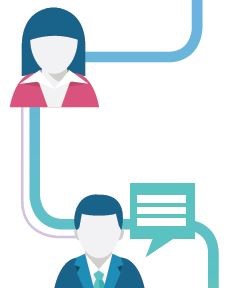
The term “feedback” refers to useful information or criticism regarding earlier actions or behaviors transmitted by a person to another individual (or group) who can use that knowledge to alter and improve current and future actions and behaviors.
When an environment reacts to an activity or behavior, this is referred to as feedback. For example, ‘consumer feedback’ refers to buyers’ reactions to a company’s products, services, or regulations; while ’employee performance feedback’ refers to employees’ reactions to feedback from their management – the information exchange includes both expected and shown performance.
Who would argue that feedback is a good thing? Everyone can benefit from feedback. Feedback and opportunities to use feedback help to improve and enhance, whether an individual, group, business, business unit, firm, or organization, and that information may be used to make more informed decisions. It also enables us to establish and maintain relationships with others.
5 Reasons Why Feedback Is Essential
Good and negative feedback, both positive and negative, is quite beneficial. Feedback is crucial information that will be utilized to make critical decisions. Top performing companies are top performing because they are constantly looking for ways to improve on their finest. ‘Continuous improvement’ is more than simply a mantra for top-performing companies. It is a genuine emphasis based on feedback from all levels of the organization, including consumers, clients, workers, suppliers, vendors, and stakeholders. Top-performing companies not only receive feedback well, but they actively seek it. And they understand that feedback is only useful when it highlights both strengths and faults.
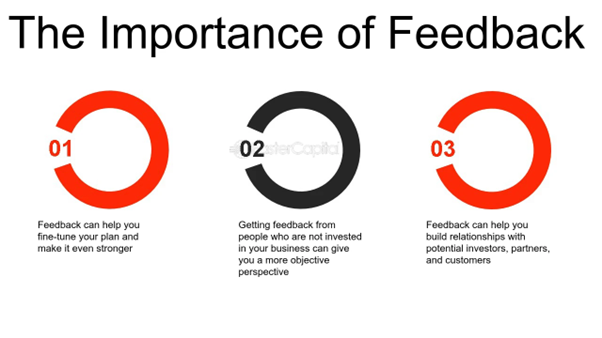
Effective feedback benefits the giver, the receiver, and the organization as a whole. Here are five reasons why feedback is essential.
1. There is always feedback available.
If you ask someone in your company When they receive feedback, they usually reference an employee survey, performance appraisal, or training review. In reality, we are constantly bombarded with input. We communicate feedback every time we speak to a person, employee, client, vendor, etc. In reality, it is impossible not to provide input.
2. Effective listening is enhanced by feedback.
Whether the feedback is given directly or through a feedback survey, the individual giving it needs to know that they have been understood (or received) and that their feedback is valuable. When conducting a survey, always explain why the responses are essential and how they will be used.
3. Feedback can be motivating.
It is possible to motivate staff to perform better through soliciting comments. Employees want to feel appreciated, and they love being solicited for opinion that can help shape corporate decisions. Furthermore, input from clients, suppliers, vendors, and stakeholders can be used to motivate employees to improve working relationships.
4. Feedback can help to increase performance.
Feedback is frequently misinterpreted as criticism. In truth, what is perceived as negative criticism is actually constructive criticism, and it is the best source of input for making better decisions to improve and raise performance.
5. Feedback is a tool for lifelong learning.
Spend time asking and learning about how others have worked with your organization. Continuous feedback is essential across the entire organization in order to stay on track with goals, establish strategies, enhance products and services, and build connections, among other things. Continuous learning is the key to progress.

Case Study
Google is a perfect illustration of the advantages of cultivating a more favorable working culture. They increased employee satisfaction by 37% after initiating a range of various programs to boost staff engagement and pleasure. This resulted in improved workplace performance, lower attrition rates, and other benefits.
5 Reasons Why Feedback Is Important
When you work in human resources, you may feel as if you are the primary driver of performance and growth processes. While you are responsible for establishing a feedback culture inside the firm, your success is totally dependent on managers and employees accepting and owning it.
When employees feel comfortable expressing, asking for, and getting performance analysis, you should expect significant changes in how your organization runs. Here are five positive changes you might expect as an example of the value of feedback.
1. Increased performance across the board
Feedback is a vital component in increasing organizational performance and is a two-way street. It is critical for managers to provide regular feedback to their direct reports, but employees should also share it with their superiors and peers.
As the amount of feedback exchanged grows, managers gain insight into how their leadership skills are faring. It also provides employees with views regarding their work from those with whom they have the most direct contact. Favorable feedback has been shown to have a positive impact on company outcomes.
As a result, everyone is able to make better judgments, perform better, and generally excel in their roles.
2. transferred professional development ownership
Because everyone has a unique blend of skills and developmental areas, applying a “one-size-fits-all” paradigm to professional development is problematic. There are numerous learning techniques available, such as asynchronous learning or in-person workshops.
You deliberately place people in the driver’s seat of their development by establishing an easy and structured mechanism to get feedback when it matters most, rather than having to constantly initiate the process.
Some of the most successful people may ask for feedback at the end of a large meeting or project to ensure they acquire useful insights in a timely and contextualized manner.
With this transformation, individuals become accustomed to requesting feedback anytime they want or need it, resulting in an empowered workforce while relieving HR of the burden.
3. Preventing office conflicts from occurring
A strong feedback culture also provides employees with the tools they need to resolve concerns before they escalate. When people do not feel comfortable sharing criticism with one another, even on minor issues, it can lead to workplace conflict.
People who are used to constantly sharing feedback, on the other hand, feel more comfortable with having these unpleasant conversations.
This implies they won’t be concerned about asking their coworkers to speak more quietly on the phone or to be more consistent about completing their portion of a project on time.
By developing the habit of providing feedback, they will be better prepared to deal with any circumstance rather than bottle it up.
4. Greater employee involvement
Employee engagement and feedback sharing have a high association. Not only does it have the ability to resolve difficulties quickly and promote information exchange, but it also creates a mechanism for team and individual triumphs to be recognized more frequently.
Remember that feedback is about more than just personal progress. It’s also a chance to celebrate both major and minor victories.
People are naturally motivated and engaged when they feel valued and recognized for their work. According to a recent survey, 72% of employees identified recognition as having the biggest impact on engagement.
5. Providing your employees with something they genuinely want
According to PwC, nearly 60% of employees polled said they would want daily or weekly input – a figure that jumped to 72% for employees under the age of 30.
There are numerous reasons why people may not receive the input they seek: it is time-consuming and stressful to provide constructive feedback, and it is difficult at first.
You may, however, tear down some of these barriers by focusing on developing an employee-driven feedback culture. With coaching and additional training and tools, you may build a process in which employees can openly communicate feedback with everyone in the business.

Case Study
Google is shifting its emphasis to the individual.
Google has always been a corporation that takes the less traveled path. While Google is known for giving employees company time to work on their particular projects — a practice replicated by other companies such as DreamWorks — the corporation has also never participated in the typical annual performance evaluation.
Instead, constant feedback, combined with employee goal-setting, has been a key component of the organization since its inception, with the objective that both employee and company time would be better spent building employees’ talents than than worrying about end-of-year reviews.
Managers at Google work with their direct reports to develop and achieve goals while coaching them along the way. This technique extends all the way to the top, with Larry Page, one of the company’s co-founders, writing down desired goals for himself and the firm each quarter.
The end result? Google has routinely been ranked one of the greatest places to work by Fortune magazine and the Great Place to Work Institute. According to the historic Partners In Leadership “Happiness at Work” survey, when employees are happy at work, they take more initiative, are better collaborators, and nearly half care more about their work.
How Frequently Should Employees Be Given Feedback?
It is critical to consider frequency while designing a feedback system. As previously said, many employees want to receive feedback on a weekly, if not daily, basis. However, it is critical that the feedback remains relevant and helpful to the employee.
Managers may make the maximum effect by asking the following questions before providing feedback:
• Is this a critical juncture in the project or role?
• Are they learning a new skill that requires delicate or dangerous execution? (For example, submitting a budget request before the board.)
• Do you only want to check in? (For example, your team is working on a significant project with their peers, and there is a lot of change going on at the same time.)
Managers and teams should have a solid understanding whether or not to provide feedback once these questions have been addressed.
Try Using Feedback To Empower Your Organization
It is obvious that effective feedback provides advantages. By utilizing this mode of communication, teams might feel more confident, powerful, and involved in their job. Once you’ve established a cadence that works for the team, you’ll begin to see some of these advantages permeate your firm.
True accountability cannot exist without feedback and rewards, two areas where most organizations fall short.
Unfortunately, most managers are afraid to provide feedback since it has such a negative connotation in our society. Regardless of how many negative comments are balanced by favorable ones, recipients continue to obsess over perceived slights. This is a physiological tendency: Our minds are hardwired to be biased toward negativity, which can erode trust and rapport.
Needless to say, if your feedback is all favorable, you will be unable to provide constructive comments. Excessively critical feedback, on the other hand, will discourage employees’ efforts. Leaders must achieve the proper balance.
Here’s another way to look at the feedback spectrum:
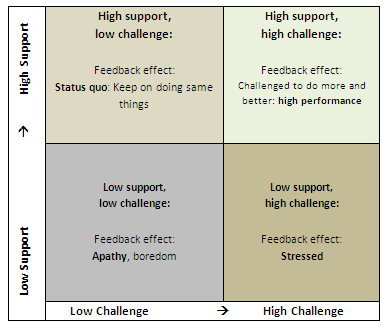
When providing feedback, you can offer varying degrees of support and challenge, with relatively predictable outcomes.
Your employee has little motive to change if you, for example, provide positive but unchallenging feedback. Employees who are not challenged may become complacent, bored, or disengaged.
Employees will sense a difficult command-and-control environment if they are given a challenge but receive little help. Why should they give their all if they don’t have supervision or good reinforcement?
The majority of feedback goes into one of the matrix’s two quadrants:
1. There is too much help and not enough challenge (enforcing the status quo).
2. Excessive critical feedback causes undue stress (low support/high challenge).
The most effective managers, leaders, and coaches deliver high-support/high-challenge feedback, which raises employee awareness while encouraging improved performance. “Your most recent report was fantastic,” for example. You covered all of the fundamentals and supported them with research. Consider the following: How can this report be improved? “How would you go about doing that?” Reward good work while avoiding complacency, and ensure that expectations are always apparent. Setting specific goals and checking in on a regular basis is another effective strategy to provide assistance without creating dependency.

Exercise 6.1: Feedback Practice
Time:
Group Size:
Materials:
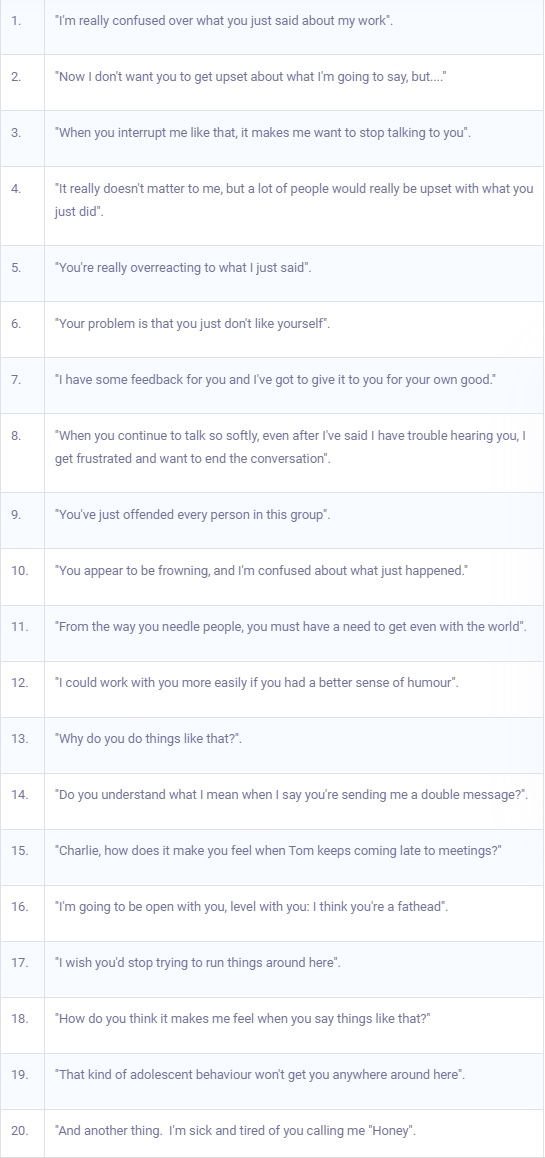
Course Manual 2: Feedback In Planning
Why You Should Get Business Plan Feedback
The Value of Feedback
You’ve worked on your business plan for hours, days, weeks, and possibly months. You’ve done your homework, you know your stuff, and you’re confident in your business concept. So, why should you seek input on your company plan?
There are several causes for this. First, comments might help you fine-tune and strengthen your plan. Second, collecting comments from those who are not invested in your company might provide you with a more objective viewpoint. Third, feedback can assist you in developing relationships with possible investors, partners, and clients.
Let’s look at each of these arguments in more detail.
1. Feedback can help you fine-tune and strengthen your plan.
You may believe that your company plan is flawless, but there is always space for improvement. When it comes to pursuing outside financing, you want to make sure your plan is as solid as possible.
Feedback can help you uncover any flaws in your plan and provide suggestions for how to improve it. It can also assist you in clarifying your views and ensuring that your argument is clear and convincing.
2. Getting feedback from people who are not invested in your company can provide you with a more impartial viewpoint.
It’s critical to seek opinions from people who aren’t emotionally invested in your company. These individuals can provide an unbiased viewpoint and assist you in seeing your business plan more objectively.
3. Feedback can aid in the development of relationships with possible investors, partners, and customers.
When looking for outside funding, it’s critical to cultivate relationships with possible investors. One approach to accomplish this is to solicit their feedback on your company plan.
Requesting feedback demonstrates that you are open to constructive criticism and value the opinions of others. It also demonstrates that you’re serious about your business and prepared to put in the effort to see it succeed.
Receiving input on your business plan is a critical stage in the process of obtaining outside funding. It can assist you in fine-tuning your strategy, gaining an objective perspective, and developing relationships with possible investors, partners, and customers. Don’t be hesitant to solicit input!
Why You Should Get Business Plan Feedback
If you’re like most entrepreneurs, you’ve certainly spent a significant amount of time and energy developing your company strategy. But have you taken the effort to solicit input on your strategy from people who can provide significant insights?
There are several reasons why you should seek feedback on your company strategy before pursuing external funding. First, comments might assist you in identifying any flaws in your plan. Second, it might provide you with an opportunity to fine-tune your pitch and ensure that you’re effectively articulating your vision. Third, it can aid in the development of relationships with possible investors, which may boost your chances of receiving finance.
So, how do you solicit feedback on your business plan? One approach is to attend entrepreneur events or meetups and propose your business idea to the group. You might also contact people who have worked in the field you’re interested in or who are knowledgeable in company planning and analysis.
Another approach is to submit your company plan to online resources that provide expert feedback. From the executive summary to the financial predictions, these resources can provide extensive input on every part of your strategy.
After you’ve obtained input, take some time to consider what you’ve learned. Determine any recurring themes or areas of concern that were raised. These are the areas you should concentrate on when modifying your plan.
When you’re ready to seek outside funding, keep in mind that investors want to see a well-thought-out business plan that has been reviewed and updated in response to feedback. You’ll boost your chances of acquiring the money you need to establish and expand your firm if you take the time to solicit input and adjust your plan accordingly.

Case Study: Screwfix: Developing the Two-Way Road to Feedback in the Workplace
This hardware business has turned the feedback script on its head. Employees submit feedback to their managers on a bi-weekly basis, in addition to ensuring that superiors provide feedback to their direct subordinates. The organization values candid feedback on anything from general temperature checks to business changes to management practices.
This consistent, two-way communication paradigm has resulted in employee-driven initiatives that improve the customer experience by keeping talks about the firm alive and continuing. It also offers employees with a purpose to invest in the company’s operations and culture and connect more deeply with their work.
According to Gallup, “those in the top quartile of engagement experience significantly better customer engagement, higher productivity, better retention, fewer accidents, and 21% higher profitability.”
The Advantages of Obtaining Feedback on Your Business Plan
You’ve spent many hours perfecting your company plan. You know your industry inside and out, and you’re certain you have a winning plan. However, before you present your company plan to a bank or investors, you must solicit input.
Obtaining input on your business plan has numerous advantages. For starters, it might assist you in identifying any areas that require clarification or extra explanation. It’s also a terrific method to obtain a fresh perspective on your company. Finally, feedback can help you fine-tune your company plan to make it as effective as possible.
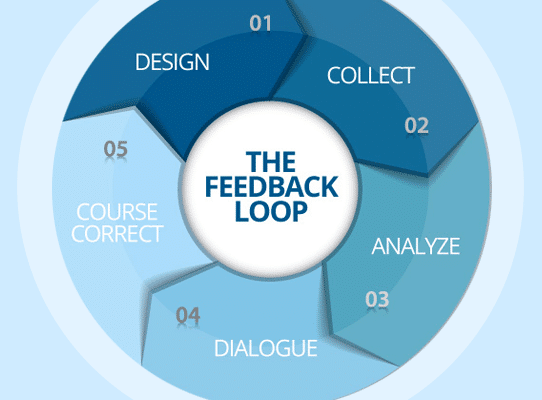
Let’s take a deeper look at each of these advantages one by one.
1. Feedback can assist you in identifying areas that require clarification or additional explanation.
When you’re so close to your company, it’s tempting to assume that everyone else understands what you’re saying. However, most people do not have the same amount of understanding about your company that you do. This is why feedback is so critical.
Feedback from others might assist you in identifying sections of your business strategy that want further clarification. It might also assist you in clarifying any ambiguous topics. This is vital information that can help to strengthen and improve your company plan.
2. Feedback can provide you with an outsider’s perspective on your company.
“It takes two to tango,” as the phrase goes. It’s easy to get caught up in your own thoughts and opinions while working on your business plan. However, it is critical to take a step back and consider the viewpoints of others.
Feedback from others might assist you in seeing your company through their perspective. This outside perspective can be quite helpful in finding strengths and shortcomings that you may not have considered previously. It can also assist you in developing a more realistic vision of your company’s future.
3. Feedback can assist you in fine-tuning your business strategy.
It’s time to put your business strategy to use now that you’ve received feedback on it. Use the input to improve and fine-tune your plan. Remember that you want to write a business plan that is clear, simple, and persuasive.
Obtaining input on your business plan can be really beneficial. It can assist you in clarifying topics, gaining an outsider’s perspective, and fine-tuning your approach. So, when you work on your company strategy, don’t be afraid to solicit criticism from others. It could mean the difference between your venture’s success and failure.
Obtaining Feedback on Your Business Plan
You’ve worked for hours, days, weeks, or even months to create your company plan. You know your company inside and out and are confident in its ability to flourish. However, before you take your company strategy to the next level by seeking outside funding, you should solicit feedback from others.
There are several reasons why gaining input on your business strategy is critical. For starters, it can assist you in identifying any potential flaws in your strategy. Others may see aspects you haven’t considered, and their feedback might help you strengthen your plan.
Second, receiving input might assist you in fine-tuning your business plan in order to make it more appealing to possible investors. If you’re looking for venture capital or other sorts of outside funding, your business plan must be flawless. Getting comments from others might assist you in doing so.
So, how do you solicit feedback on your business plan? Here are a few suggestions:
1. Consult with your mentors, advisors, and trusted advisors. These are folks that have previously gone through the startup process and have a plethora of expertise and knowledge. They can offer useful insights into your business plan.
2. Meet with prospective consumers and clients. These are the individuals who will eventually use your goods or service. What are their thoughts on your company plan? Do they anticipate any issues?
3. Speak with prospective partners and suppliers. These are the people with whom you will collaborate to bring your product or service to market. What are their thoughts on your company plan? Are there any red flags they notice?
4. Meet with potential investors. These are the folks who will invest money in your company. What are their thoughts on your company plan? Is there anything that worries them?
5. Communicate with your competitors. These are the ones that are attempting to replicate your efforts. What are their thoughts on your company plan? What are their assessments of your strengths and weaknesses?
Receiving input on your company strategy is an essential part of the startup process. It’s an opportunity to get candid, unbiased advice from experts who know a thing or two about business. Don’t be hesitant to solicit input!
Who Should You Consult for Feedback on Your Business Plan?
You’ve created an excellent company plan. The next stage is to solicit feedback from people who can assist you in improving it. But who should you solicit input from? Here are a few ideas.
1. Your intended market. Find out if your target market would buy a product or service you’re selling. Conduct market research or conduct surveys to gather input on your company idea.
2. Potential clients or customers. Find out if potential customers or clients would utilize your service if you are beginning a firm that will provide one. Inquire about their thoughts on your business idea and whether there is anything they would change.
3. Subject matter experts in your field. Find professionals who can provide comments on your business plan if you’re beginning a firm in a specific field. Ask them if your plan is practical and what you should modify.
4. Family and close friends. Family and friends can be an excellent source of feedback, particularly if they are candid with you. They can tell you what they think of your business concept and whether or not it is a good one. Just be ready for them to be truthful!
5. Mentors or counselors in business. Ask someone you know who is already successful in business for comments on your company strategy. They can provide you with perspectives and recommendations that you may not have considered.
6. Investors or prospective investors. It’s a good idea to solicit feedback from possible investors if you’re looking for outside finance for your firm. They can tell you what they think of your business concept and whether or not they would invest in it.
7. Business accelerators or incubators. If you want feedback on your business strategy, consider pitching it to a business incubator or accelerator. These organizations assist new firms in getting started by providing comments and tools.
8. Small business development centers (SBDCs) (SBDCs). SBDCs provide small businesses with counseling, training, and services. They can also offer advice on your business plan.
9. Your accountant or lawyer. Ask an accountant or attorney for feedback on your business strategy if you have a professional relationship with them. They could be able to provide insights that you hadn’t considered.
Receiving input on your company plan is a critical stage in the startup process. You can increase your chances of success by soliciting feedback from people who are familiar with your industry, target market, or potential investors.
What Kind of Feedback Should You Get on Your Business Plan?
When developing a business plan, it is critical to solicit feedback from a range of sources. You want people who will offer you an honest evaluation of your plan, highlighting its strengths and faults. Here are a few people you should think about asking for comments on your business plan:
1. Your intended market. These are the folks to whom you intend to sell your goods or service. Inquire about their thoughts on your company idea. Do they believe it is a suitable fit for their requirements? Would they be interested in what you’re selling?
2. Your adversary. Find out what your competition think about your company idea. What are their assessments of your strengths and weaknesses? What do they believe you should work on?
3. Your counselors and mentors. If you have mentors or advisers, they can provide valuable comments on your company strategy. They can assist you in identifying areas for development and provide suggestions on how to make your plan more effective.
4. Your workers. Employees can be a terrific source of feedback if you have them. Inquire about their thoughts on your company concept. Do they have any suggestions for how to enhance it?
5. Industry professionals. If you know specialists in your area, they can provide you valuable comments on your company plan. They can assist you in identifying areas for development and provide suggestions on how to make your plan more effective.
Take some time after gathering feedback from all of these sources to sit down and study it. What do these people all have in common? What do their ideas have in common? This will assist you in identifying the parts of your company strategy that require the greatest attention.
Don’t be disheartened if you receive a lot of bad criticism. It’s actually a good thing because it implies people are interested in your company and providing you honest feedback. Use this input to improve your company plan.
When Should You Seek Feedback on Your Business Plan?
As an entrepreneur, you are constantly seeking input on your business idea. It is critical to acquire opinions from people who are knowledgeable about business planning and financing before pursuing outside investment. Here are four reasons why you should solicit feedback on your company strategy before seeking external funding:
1. Make certain that your company plan is clear and simple.
People who are educated about company planning and financing will be able to tell you if your business plan is clear and concise when you seek comments. If it isn’t, they’ll be able to assist you fix it.
2. To confirm that your business plan is feasible.
It is critical to solicit feedback on your company plan to ensure that it is feasible. If your business strategy is unrealistic, potential investors may be hesitant to invest in your company.
3. To secure the completion of your business plan.
Another reason to get feedback on your business plan before seeking outside funding is to ensure that it is complete. If there are any gaps in your business strategy, it may be more challenging to secure finance.
4. To guarantee that your business strategy is persuasive.
The third reason you should seek feedback on your company plan before seeking outside financing is to establish its credibility. Potential investors may not believe in your business idea and may not invest if your business strategy is not persuasive.

Exercise 6.2: Predictions
Time:
Group Size:
Materials:
Introduction:
Briefing:
The task:

Course Manual 3:Feedback System
Consider one of the best teams you’ve ever been a part of. It could be a work team or a team from somewhere else. Was that team great from the start? We’ve asked thousands of individuals this question throughout the years, and very few teams are outstanding when they initially form. The finest teams become great by learning from their mistakes and making adjustments. They correct themselves. While some teams and team leaders appear to achieve this effortlessly, the majority require some structure and supervision. Fortunately, there is a relatively basic, low-cost strategy known as a team debrief that, when used correctly, has been found to reliably improve team effectiveness. This article discusses what you need to know to perform effective team debriefs.
Although not all teams are made equal, almost any team can benefit from a debrief-focused approach. The approach was originally created for military usage in the 1970s1, but it has subsequently been demonstrated to be beneficial in a variety of scenarios. The initial debriefs were quite complicated and thorough affairs (picture debriefing a recent fight), but most modern debriefs, especially those in business settings, are fairly efficient, often lasting 15 to 60 minutes.
Well-conducted debriefs work, and there is substantial meta-analytic evidence to back up that claim. A meta-analysis is a statistical study of all earlier empirical investigations on a specific issue. A meta-analysis’ findings are generally more reliable than any one study’s findings. Tannenbaum and Cerasoli evaluated debriefing in a meta-analysis of 46 earlier research populations.
Teams that undertake debriefs outperform those that do not by more than 20% on average. That’s a significant increase for such a basic solution. A debrief is simply a team’s reflection and discussion of previous experiences, highlighting what went well and where changes may be feasible. They achieve an agreement on the precise changes they intend to make and then return to work. In the process, they frequently fill up team members’ knowledge gaps (“I didn’t know that happened”); identify areas where they may require further support (which their leader may seek); and construct shared mental models about goals, duties, or what to do in particular situations (“if-then”).
The debrief-Focused Approach
In this course manual, we will go over the four things that all successful teams accomplish. As many of you are aware, our debrief-focused approach is powered by four steps: Plan, Brief, Execute, and Debrief. We explain why each of these four phases is necessary:
Plan – Why is it vital to have each member of the team present during the planning process?
Briefly – how do you ensure that each team member is on the same page when you begin plan execution?
Execute – How do you discover execution holes throughout the mission?
Debrief – What is the secret to a nameless and rankless Debrief?
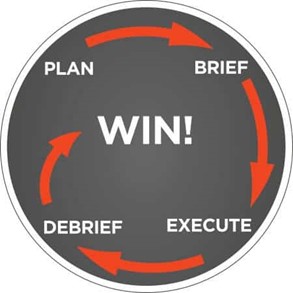
For decades, US military aviation and special forces have used the iterative Plan-Brief-Execute-Debrief (PBED) Cycle (which also includes an assess stage) to generate continuous improvement and increase mission execution and success. From early individual training through real-world elite team operations to strategic global incident response, this method is profoundly ingrained in their culture. Because of its success, it has been adopted as a means of optimizing safety and performance by other elements within all military branches, civilian first responders, and many corporate groups.
1. Plan
In the US airforce, before we fly the mission, we must plan our actions utilizing a shared, quick, and scalable structure. Your organization may have a planning framework, but does it provide alignment and is understood by all? Does it promote scale responsibility within the organization? These are the characteristics that distinguish our model.
2. Brief
After we plan, we brief the plan to the team members who will be held accountable for carrying it out. As we prepare to execute, everyone must understand who will do what and by when. So, how should we Brief? And what exactly is it? In the Army, they use the five paragraph operations order from a mechanical aspect. This can be summarised as:
• Brief the Situation
• Restate the Mission Goal
• Determine the Top Threats and Resources
• Execute the Final Plan
• Plan Evaluation
We want to make sure that we consider those “What ifs” when we start to encounter those external circumstances that we didn’t foresee but knew would be present, so that we can rapidly pivot the plan.
3. Execute
We are now ready to execute. Nevertheless, no matter how carefully we planned and briefed, there is one element that always has the ability to stymie flawless execution. Saturation of Tasks. We are all too familiar with the performance depleting effects of task saturation. When task saturation increases, so do our execution mistakes. And as it rises, so does our performance.
You may not have a problem with Task Saturation, but you are urged to look harder since it exists in your business. It’s part of your work flow. It happens to you when you aren’t even aware of it. Plan, Brief, Execute, and Debrief.
4. Debrief
Businesses who do not Debrief miss out on an important opportunity to improve future performance. As a result, when our mission is complete, we walk into a room and do the nameless and rankless Debrief with the only objective of better future execution. We aim to build on today’s triumphs while avoiding making the same mistakes. This is performed in the presence of superiors, subordinates, and peers. We honestly disclose what worked and what didn’t in order to develop Lessons Learned and accelerate the team’s future performance. We break down communication barriers by creating an environment in which everyone has the opportunity to admit mistakes. A Debrief is a chance for both teaching and learning. This isn’t a blaming session. So, how do you make it work? How do you go about it? How can you ensure it has no name and no rank?
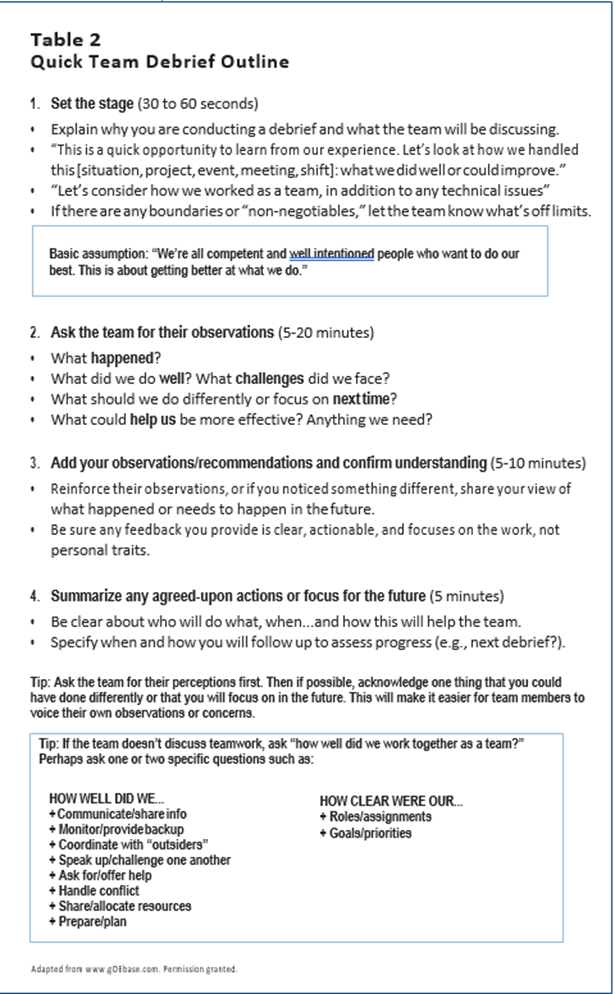
You start by removing your own rank. I know, it’s shocking. One of the most powerful leadership tools in our debrief-focused approach is leadership by example. This is accomplished through inside-outside criticism. “Hey team, here’s where I fell short as your ace, as your leader,” says the inside criticism. ” Here’s where I could have done a better job of serving you.” And the outer part is when you ask your team, “How might I have done better?” Take two or three critiques coming back at you to simulate the desired behavior. If you build a wall the first time someone says you’ve disappointed them as a leader, they’ll build one the next time you criticize a decision they made.
Debriefs at the US Army’s Combat Training Center follow the following format, as outlined by Allen et al (2018) in their excellent study on Team Debriefs:
1. Examines the unit’s objectives, including the general mission and the commander’s aim.
2. Demonstrates that the group comprehended the truth of what occurred (e.g., review moment-bymoment events on the battlefield to ensure accurate sensemaking). This is critical!
3. Investigates the sources of the outcomes, whether positive or negative, and may concentrate on one or a few major themes.
4. Allows the unit to think on what it should learn from the evaluation and how to continue to operate effectively in the future.
5. Ends with a look ahead at the next day’s goal and any challenges that may occur.

Case Study: Sailors at the Naval Surface and Mine Warfighting Development Center
The Navy seizes every opportunity to advance forward, staying on the cutting edge of how they fight and train. The Secretary of the Navy emphasized in his initial guidance to the Fleet that we “must improve our processes in order for our people to meet future challenges.”
Sailors at the Naval Surface and Mine Warfighting Development Center (SMWDC) have embodied this goal by collaborating with Surface Warfare Officers School to incorporate the plan, brief, execute, and debrief (PBED) process into the Basic Division Officers Course (BDOC), a rigorous 9-week course designed to provide prospective surface warfare officers with foundational classroom training.
“I was incredibly enthusiastic when SMWDC shared the PBED model with us,” said BDOC teacher Lt. Cmdr. Tim Cushanick. “It was an awesome opportunity to bring in some outside eyes and minds to get new ideas on our program. I already wanted to, in some way, implement a more deliberate process in the conning officer virtual environment (COVE), and this opportunity provided that deliberate plan, brief, execute and debrief model which is happening in the fleet.”
The COVE is one of the technologies used to help younger officers apply ideas in navigation, seamanship, and ship handling faster. It enables virtual conning of several Navy ship classes through various worldwide commerce lanes, homeports, and routine ports of call. Students learn ways for adapting to and overcoming problems that may arise during at sea evolutions during the simulations.
“Now that we have implemented the PBED process, the students have more attentive eyes to what they are doing.” said Lt. Erik Farney, a BDOC instructor. “The students who are not actively driving the ship during a scenario can sit analyze their classmates and then provide some really valuable peer-to-peer feedback after the evolution.”
BDOC instructors have noted improved peer-to-peer feedback since using PBED, which has resulted in increased self-awareness of mistakes made by students.
“Integrating PBED into their training regimen has had a significant impact,” Farney added. “In the past, it was sometimes dependent to the instructors to provide all of the criticism, which could be a little narrow-minded. Students have been eager to submit comments to one another since we adopted the PBED sheets. With that, I believe the most valuable thing that comes out is self-evaluation. Instead of sitting back and waiting for an instructor to offer them feedback, students may often spot and rectify errors on their own.”
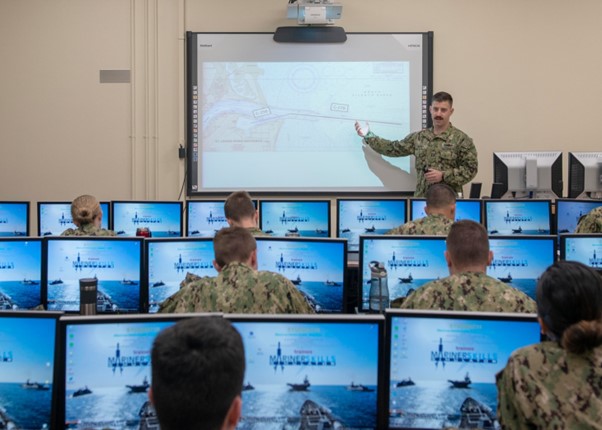
One of the benefits of a technique like PBED is that it supports continuous development. When students are stationed on a ship, they can take what they learned during the process and improve on it with the assistance of their senior chain of command.
Following a Debrief – Best Practices
An effective debrief can reveal where improvements are needed as well as the strategies to them. What happens after the debrief will also have an impact on its effectiveness.
Best Practice #1
Follow up on agreements and communicate progress to increase accountability and willingness to engage in future debriefs. Assume that team members were willing to share their concerns and that the team came to a few concrete agreements during a debrief. But then nothing happens, or at least nothing that the team members can see. What will happen next can be predicted. Members of the team lose interest in participating in subsequent debriefs. Hence, a critical post-debrief phase is to close the loop, checking to see if the team (or individuals) are adhering to the agreements and, if so, determining whether they are operating as intended. This enhances the possibility of improvements occurring and underscores the importance of the debrief as a platform for speaking up. Sometimes the leader might provide important input regarding progress (or lack thereof) to a specific team member or even peer to peer. At times, it is beneficial to work in a group. In the case, the objective is to ensure that there is follow-up and that the team perceives change and growth as a result of their participation.
Best Practice #2
Hold “fit for purpose” debriefings on a regular basis. A one-time debrief is fine, but a series of them provides the most value by allowing the team to make tiny, continuous adjustments so that reflection, debate, and adaptation become part of the team’s natural rhythm. Regrettably, the most common debrief we’ve encountered in corporate settings is a one-time event that takes place at the end of a project. It is also known as a post-mortem examination. This type of debrief can assist bring to light a few lessons learnt for the future, but if it’s the only one you do during the project, you’ve missed out on the potential to make mid-course repairs.
There is no magical, ideal frequency for doing debriefs. In general, the higher the recommended debrief frequency, the more complicated and dynamic the job the team is undertaking. Shorter debriefs can, of course, be done more regularly than longer ones. For example, it can be good to rapidly huddle together after each team presentation or at the end of any team meeting and ask, what did we do well, what should we do differently next time? That takes only five minutes.
We strongly advise senior leadership teams (and other decision-making teams) to do an occasional “decision” debrief. Discuss: a) what the decision was (e.g., what led up to it), b) how we made the decision (e.g., who was involved, decision governance, information considered, speed of decision making, the way it was communicated), c) what we did well, d) what we could have done differently in hindsight, and e) what this means for our future decisions (e.g., lessons learned and agreements).
There are occasions when a bit more detailed debrief is required. For example, the end of a project phase or the occurrence of a “mistake” are frequently excellent opportunities for a slightly deeper, 60-minute debrief conversation. Finally, if you only conduct debriefs after something goes wrong, individuals will associate debriefs with blame sessions, similar to being summoned to the principal’s office as a child. It is something you should avoid.
Conclusion
Structured team debriefs are a straightforward, easy-to-use strategy for improving collaborative behaviors that is neglected. Teams are most likely used frequently in your organization. It’s also no pleasure to be on a losing squad. By using the debriefing best practices listed above, you can improve team effectiveness across your business, from senior leadership teams to project teams to change management teams to sales teams to manufacturing teams. We strongly advise you to give it a shot.

Exercise 6.3: Plan, Brief, Execute, Debrief
Time:
Group Size:
Materials:
The Brief
Instructions
• Plan
• Brief
• Execution
• Debrief

Course Manual 4: Employee Feedback
What Exactly Is Employee Feedback? And Why Is It Significant?
Employee feedback is any information provided (officially or informally) by employees about their performance, talents, or capacity to operate in a team. Feedback can be given by both supervisors and peers, and when done properly, the process can result in a stronger, more peaceful workplace.
Positive and negative feedback is critical because it helps to break bad habits, reinforces positive conduct, and allows teams to work more successfully toward their goals.
Employee Input Is Critical For Firms
Employee feedback is classified into two types: feedback given to an individual employee (typically on their performance) and feedback given to the organization as a whole. Many organizations are well-versed in the former, frequently with elaborate policies and frameworks governing performance talks and evaluation. However, not all of them are as well-organized when it comes to soliciting input from their staff – and the value of feedback is often underestimated.
Employee feedback is all too often an infrequent occurrence; at other organizations, feedback is only requested through an annual engagement survey. While these can be useful, they are sometimes limited in scope, providing simply rating scales with one or two open ended text areas for individual comment. This is a squandered chance. Seeking regular employee input and taking a systematic approach to collecting and analyzing it can result in significant economic benefits.

Case Study: The Hawthorne Study
Elton Mayo, a researcher, conducted a study at the Western Electric Company in 1927 to determine how much working circumstances effect productivity. Mayo adjusted the light intensity to assess the productivity of plant workers.
One group worked in changing light, whereas the other worked in constant potency. Both groups had increased their production by the end of the first phase.
The second phase arrived. The experiment room’s luminance reduced, and decreasing output was expected. However, data showed that production increased.
Researchers were perplexed by their findings and were unable to establish a simple relationship between productivity rate and light intensity in the workplace.
The investigation became known as Hawthorne research.
The finding was that it was the attention the workers received while participating in the experiment, not the luminescence, that influenced productivity.
Employee Voice
Employee voice is the official term used to describe the process by which employees contribute to and influence organizational decision making. Voice also refers to the ability for employees to communicate their ideas and opinions, as well as make suggestions. It is seen as a critical enabler of employee engagement. It can provide leaders with insights into the organization that would otherwise be hidden, stimulate new ideas, and provide possibilities for learning and progress. Finally, soliciting input might help to identify difficulties and obstacles.
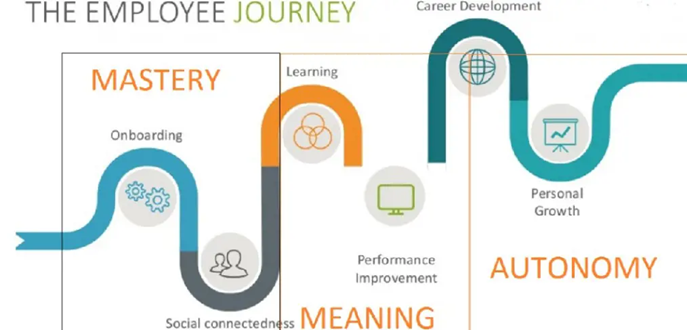
5 methods for providing meaningful, actionable employee feedback
Whatever your function is in your firm, you will have to provide feedback at some time. Giving praise is simple in my experience because everyone enjoys a nice comment. Constructive critique, on the other hand, is much more difficult to provide… and can be equally difficult to hear.
Keeping silent may appear to be the way of least resistance, but it will be more difficult for you and your colleagues in the long term because the problems will only worsen. Rather than choosing the easy way out, take a deep breath and employ the tactics listed below when it comes time to speak up.
1. Provide real-time feedback.
Have you ever kept something to yourself for weeks or months before ultimately telling someone what was on your mind? You wouldn’t be the first to do so, but it’s seldom the greatest option.
When you wait, minor flaws can become huge ones, and the individual getting the criticism is more likely to become defensive if you begin pointing out problems that date back weeks, months, or years. You’ve also deprived them of the opportunity to improve the entire time you’ve withheld your feedback.
Furthermore, dealing with problems promptly makes them easier to fix. We call it ‘pulling off the BAND-AID’ in the United States. The concept is that slowly pulling off a BAND-AID is significantly more painful (both physically and emotionally) than giving it a strong tug.
Of course, don’t be so impatient that you send the message via email or text. Written communication contains significantly less nuance than spoken communication, while vocal communication, in my experience, can convey more information. That way, they won’t interpret your statements in ways you didn’t mean. Instead, if at all possible, engage in a live conversation (in person, over video chat, or on the phone).
2. Be diplomatic, but don’t sugarcoat anything.
Sandwiching is a popular strategy for offering constructive feedback, but it is one that we should discourage. The goal is to mix criticism with compliments to soften the blow of criticism.
Honestly? That comes across as insincere, and most people can see right through it. The Radical Candor approach is our preference.
Kim Scott’s blockbuster book Radical Candor has evolved into a technique and a movement. It encourages employees to challenge one another directly, but it requires that you do it with discretion. Challenging without personal concern leads in ‘obnoxious violence’, and avoiding to challenge might result in ‘ruinous empathy’ or ‘manipulative insincerity’.
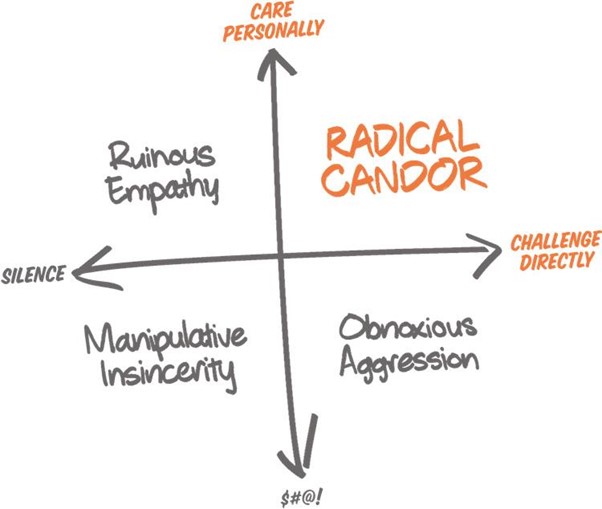
So, instead of sandwiching your critique, deliver it directly… and with caution!
Let your coworkers know you’re not criticizing them as people, and if you’re their boss, make sure they know their job isn’t in jeopardy (unless, of course, their job is in jeopardy… but if that’s the case, it shouldn’t be the first time you’ve addressed the issue).
3. State unequivocally that you are on the same team.
You can approach employee feedback in two ways:
You vs. them: you could sit them down with a severe expression on your face and treat the encounter as if it were a zero-sum game, with only one of you walking away as the victor.
** or **
You + them vs. the issue: You can approach it as a potential win-win situation in which you come together to confront an issue and work together to resolve it.
Obviously, the latter option provides the most room for advancement. It provides the psychological protection needed to foster an open environment, paving the door for genuine transformation.
4. Provide context and be specific
When addressing a problem, it is critical to provide clear examples of where the problem occurred. Be as specific as possible about when and where you noticed the problem, as well as why it’s bothersome.
Here’s a comparison of general, non-actionable feedback with particular, actionable input.
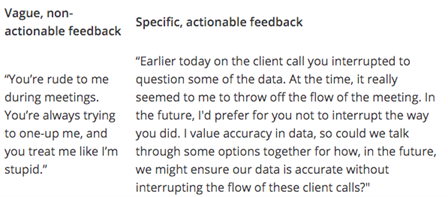
The ambiguous feedback may sound familiar because, let’s face it, that’s how most of us debate. We do it with friends, family, and love partners, but it rarely results in anything productive.
Specific, concrete input is considerably more beneficial, pushing everyone toward a real solution. That is the purpose of feedback.
5. Be conscious of any power disparities.
You know that sinking sensation in your stomach when your employer asks, “Can I see you in my office?”
When your brain detects a threat, your adrenal glands release cortisol (the stress hormone). Blood rushes to the primal areas of your brain, preparing you to flee or fight, and your mind closes off to new ideas. We’ve all been there, and it’s easy to forget what it’s like to be the one with greater power in a situation.
We should also be mindful that the world is rife with unconscious biases and unwritten power systems. While we don’t often talk about it, it’s important to recognize that some groups have greater social influence than others.
That is why, when you prepare to deliver feedback, remember your social standing, especially if you are in a position of power. Taking this into consideration allows you to give better psychological safety, allowing you to bring out the best in everyone on your team.
3 Ways For Calmly Absorbing And Applying Feedback
What happens if the roles are reversed? When you are the recipient of feedback (whether favorable or negative)? You are not alone if you find it difficult to listen with an open mind at times.
We all have defenses that get the best of us at times, but the three tactics below will help you listen with an open mind—so you can maximize your potential as an employee and as a human being.
1. Be aware of your own defenses.
Whether a coworker has no tact or does everything perfectly, you may feel your defenses rise when they sit you down to offer you feedback. So, what do you do when this occurs?
The first stage is to become aware of how you’re feeling. We snap back and defend ourselves if we feel threatened. At moments like these, it’s essential to pause and consider before replying. When we are intimidated, our first ideas are usually not our best thoughts, so attempt to study their point of view with an open mind.
After spending time with your emotions, you may realize that your colleague has some fair arguments. Or perhaps not? In either situation, a quick retort will do nothing. Zingers only work for politicians, which is not what we’re after here.
2. Confirm the attempt to provide feedback.
Let’s say they completely missed the mark. You can tell they’re being insane. So, what do you do now? Thank them for taking the time to provide feedback to you.
You’re not simply agreeing with their assessment—you’re applauding their attempt to provide feedback, which is something you need to improve.
All input is a gift, and by thanking them for their time, you open yourself up to more in the future. And the next piece of advise they give you could be the one that improves your connections and propels your career (or life) forward.
Furthermore, the person providing the comments will reap the benefits of being heard. As a result, they may elect to stay with the company longer, and their experience working with you may improve.
Tip for managers and executives: It might be difficult for people to give feedback to a boss or someone with more social influence than them, so if you’re on the receiving end, remember that it’s more vital to affirm their gift of feedback when it comes from someone less powerful. It may have taken extra guts for them to offer it.
3. Take action on the feedback
When you receive feedback, make a note of it and follow up at the next meeting. Do some deep introspection in between meetings and evaluate what you can learn from the criticism, even if it’s modest. Consider sharing the comments with trustworthy coworkers to see whether others see your conduct the same way you do.
When the next meeting comes around, check in and tell the feedback provider what you learned and how you’ve tried to change (if that’s true).
Following up will show them that you value them, that you have taken their input seriously, and will allow you to fine-tune your attempts to improve yourself.

Case Study
How to Get Employee Feedback

Employers can solicit and encourage employee input in a variety of ways. The first is the previously mentioned regular employee engagement survey, which allows for the collection of significant volumes of data at once. These huge surveys can be supplemented with smaller, more targeted ‘pulse’ surveys.
Pulse Surveys
Pulse surveys can be used to investigate a certain issue or to solicit input from a specific group of employees, such as new hires or people managers. Surveys frequently have the advantage of being anonymous, allowing employees to freely express their opinions and feelings. They can provide simple data and comparisons to past survey replies.
Focus Groups
Focus groups can be another useful approach for gathering employee feedback for deeper examination of subjects or themes. They do require more time to run and analyze their outputs, but they can be a rich source of data and insight.
Exit Interviews
Exit interviews and suggestion schemes are two more common methods for gathering employee feedback. Exit interviews, of course, are designed to elicit information about why people choose to quit a company. Suggestion schemes provide employees with a method for submitting their own ideas. While these may appear dated in today’s world, they can provide valuable information and should not be neglected when building a strategic approach to feedback and listening.
Stay Interviews
The ‘stay interview,’ a possibly less well-known strategy, is aimed to discover why an employee chooses to stay with an organization as well as what they appreciate about their position. These can serve to bring to light both individual and more general worries and difficulties that may be shared by many employees – but they will only produce helpful insight in an organizational culture where it is psychologically safe to speak up openly.
There is no single optimum method for gathering employee input. To elicit the most benefits for the organization as well as the broadest potential knowledge, a combination of approaches will be required. Above all, soliciting employee feedback must be an ongoing effort. Listening should be done on a continuous, planned, and regular basis.

Exercise 6.4: Employee Survey
Time:
Group Size:
Materials:

Course Manual 5: Customer Feedback
7 Reasons Why Your Business Needs Customer Feedback
Can Your Customers Tell You Anything Significant?
If you operate a business, you strive to please your consumers, meet their demands, and keep them loyal to your brand. But how can you be certain that your efforts will provide the intended results? You will never be able to provide the finest customer experience if you do not try to find out what your customers think about your service. Their feedback on their interactions with your brand is valuable information that you can utilize to better tailor your business to their needs.
There are numerous ways to capitalize on client feedback and benefit from it. In this post, I’ll discuss why gathering client feedback, whether prompted or unprompted, is critical for managing customer happiness and loyalty, customer retention, developing products and services, and many other aspects of your organization.
What Exactly Is Consumer Feedback?
Customer feedback is information provided by customers regarding whether they are satisfied or dissatisfied with a product or service, as well as their overall experience with a firm. Customer feedback can help you improve the customer experience and tailor your actions to their demands. Surveys can be used to acquire this information (prompted feedback). Still, you can use Internet monitoring technologies to identify and collect the comments and reviews your customers leave online (unprompted feedback). Both sources are required to provide a complete picture of how your customers perceive your brand.
Top-performing businesses recognize the importance of client feedback in business. They regularly pay attention to their clients’ voices. They look for thoughts posted by clients on social media and reviews posted by clients on feedback websites (e.g., TripAdvisor). They purposefully solicit input through several types of surveys. You should never stop listening to customer input, whether favorable or bad, prompted or unprompted, to keep ahead of the competition.

Case Study: A pet protection network’s revenue improves by 53% as a result of survey response.
Huan creates smart tags for pets to help owners find their lost pets. Initially, the company’s site text focused on technological features. The tags, for example, do not produce dangerous radiation, are water-resistant, and have a one-year battery that can be replaced.
According to customer feedback surveys, buyers bought the device because they were afraid they wouldn’t be able to find their pet if it went missing. The team’s messaging was altered as a result of this discovery.
“Keep your pet safe and prevent heartbreak,” stated the new messaging on the webpage. Huan Smart Tags assist you in automatically locating your misplaced pet.”
Following the messaging adjustment, revenue climbed by 53%. “We instantly witnessed an increase in engagement on our website, with a lower bounce rate, higher click-through rate, and higher conversion rate. “A few people messaged us on social media stating how much our new message connected with them,” said Gilad Rom, Huan’s founder.
Here Are The Top Seven Reasons Why Business Needs Client Feedback
1. Customer input aids in the improvement of products and services.
When you launch a new product, brand, or service into the market, you most likely have an idea of what customers want. Market research conducted before to introduction offers you an idea of whether potential clients would be willing to purchase it, and they may also give you suggestions on how to improve it. However, only after your clients have used your product or service can you learn about all of its benefits, drawbacks, and genuine experience. Furthermore, their needs and expectations change throughout time.
Customer feedback provides insight into what works well about your product or service and what needs to be improved. Your professional knowledge may be the greatest in the industry in which your company works, but consumer insights will always be more beneficial to business performance. Their feedback ensures that the final product meets their expectations, solves their problems, and meets their needs.
2. Customer feedback assists in determining customer satisfaction.
Customer happiness and loyalty are important indicators of a company’s financial performance. It is directly related to a variety of advantages, such as increased market share, fewer costs, or better revenue. Many studies have found a strong link between customer satisfaction and corporate performance. As a result, there is no doubt that you want to ensure that your customers are satisfied with your products and services. Naturally, the easiest approach to discover whether you exceed their expectations is to solicit their feedback. You may simply evaluate the level of satisfaction and, as a result, predict your company’s financial health in the future by using rating-based inquiries.
NPS is one of the most accurate approaches that has assisted many businesses in measuring, managing, and improving customer happiness (Net Promoter Score). The measure is based on a simple inquiry that asks how likely a client is to refer a brand to a friend. The loyalty questions have response alternatives based on a 0-10 point rating scale, with 0 signifying severely negative and 10 representing extremely positive. Because this methodology is basic and ubiquitous, it can be used in customer satisfaction management by any business.


Case Study: Speaking with new clients causes SaaS to shift strategy, resulting in an 18% boost in sales.
When Chanty first started, the marketing messages centered on pricing because the SaaS company is half the price of its most well-known competition. When the team began chatting to customers, they discovered that most people had switched from the rival for a variety of reasons, including ease of use, better functionalities in the free plan, a better experience with the customer service team, and a better mobile app.
The team shifted its marketing to emphasize these product features, with pricing provided solely as an added bonus at the end. “It turned out that this was the way to go because we attracted people who wanted a better experience, rather than merely clients who wanted to save money. “Our sales increased by 18% after six months of implementing this new marketing and sales approach,” said Jane Kovalkova, Chief Marketing Officer of Chanty.
3. Gathering client feedback demonstrates that you value their opinions.
By soliciting comments from your clients, you demonstrate that you value their input. You involve them in the development of your business, making them feel more invested in it. Listening to their voice will help you build greater relationships with them. This is the most effective strategy to acquire important brand ambassadors who will spread favorable word of mouth about your company. Their suggestions are most likely the most successful and least expensive strategy to get new consumers and become more trustworthy in the eyes of your current and potential customers.
People always enjoy it when you ask if they are satisfied (or dissatisfied) with your service. It demonstrates that you value their opinion and are there for them, not the other way around. They believe your primary company purpose is to solve their issues and meet their wants, not to make money from them. It places the consumer at the center of your business, which is the correct approach to manage a firm.
4. Client feedback assists you in providing the greatest possible customer experience.
Marketing today is largely influenced by people’s interactions with products, services, and brands. They do not purchase Apple items because they are good. They desire to demonstrate their social standing and allegiance with a specific group. They do not buy Nike clothing since it is long-lasting. They purchase the bravery to push their bounds. Clients will remain loyal to your brand if you focus on giving the finest customer experience at every touchpoint. And, of course, the most efficient method to provide customers with an unforgettable experience is to ask them what they enjoy about your service and what may be better.

5. Customer feedback aids in customer retention
A delighted consumer will return. A dissatisfied customer will eventually find a better alternative to your company and depart. The advantages of customer feedback are substantial. It assists you in determining whether your clients are satisfied with your service and identifying areas for improvement. You can always keep your finger on the pulse by regularly soliciting feedback. When a disappointed consumer voices his displeasure, you can respond quickly and find a solution to the problem. This is an excellent time to win back a client and even raise his degree of loyalty. In many circumstances, a dissatisfied client who faced an issue with your service but was promptly resolved exhibits greater loyalty to your brand than a consumer who has never been dissatisfied with your service.
6. Customer feedback is a trustworthy source of information for other customers.
Consumers no longer believe ads or expert advise in the age of social media. These days, the opinions of other customers who have utilized a product or service are more dependable sources of information. When you hunt for lodging in a new city, or want to find a good new restaurant to dine at with friends, you check reviews first. When you want to buy new shoes, you ask for feedback on Facebook or visit a reputable blog to read a review. Many businesses now use review systems in their services and products. Consider Uber or AirBnB. They are all working hard to ensure that poor service is discovered and eliminated from their company.

Customer feedback is just as important to your business as it is to other customers, so make sure you and your clients have easy access to thoughts and reviews.
7. Customer feedback provides data that can be used to make company decisions.
In a highly competitive market, business decisions based on educated predictions have no place. Successful business leaders collect and manage several types of data that aid in the development of future strategies. Only in this manner can businesses tailor their products and services to precisely meet the wants of their customers.
Customer feedback is one of the most trustworthy sources of concrete data that can be utilized to inform business decisions. Customer insights will assist you better understand your clientele and their needs. Take their advice into account, and you’ll be able to determine where you should spend your money to receive the most return on investment. You may realize, for example, that more product development is not required in your situation, and that you should instead focus on promoting your brand to gain more visibility. Customer feedback is an excellent source of such information, but you must learn how to listen to it and interpret it into practical takeaways for your company.
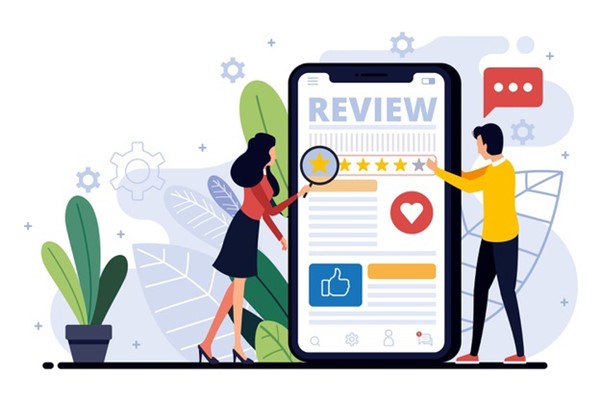
If you want to stay ahead of the competition, put your customers first and treat their input as the most valuable source of information in your firm. They are the ones that use your products and services, thus they are the most knowledgeable about how to make them extra happier.
Never disregard their voice. If you fail to match their expectations, they will look for alternative organizations that will. Use consumer feedback at all corporate levels and in all departments within your organization. Insights will assist you in the development of your products, the improvement of customer service, and the management of consumer happiness.

Exercise 6.5: Feedback Role Reversal
Time:
Group Size:
Materials:

Course Manual 6: Continuous Feedback
What Is Continuous Feedback and What Are Its Benefits?
As businesses strive to improve employee performance and assist employees in meeting individual and team goals, it’s time to rethink and modernize performance management – the approach used by organizations to manage, measure, and improve employee performance.
There is no definite record of the first performance review, although the Harvard Business Review claimed that by the 1940s, 60% of corporations were performing performance reviews. Despite having more than 80 years to develop this approach, most businesses believe their performance management method falls short: According to the 2019 Global Performance Management Report conducted by asset management and research firm Mercer, only 2% of organizations worldwide believe their performance process offers high value, and only 2% believe they have outstanding feedback procedures.
This data begins to address the core issue with traditional annual review performance management systems: the process has typically concentrated on reviewing previous performance rather than giving the feedback, resources, and coaching required to improve performance in the future.
Adding continuous feedback to your performance management process, a system that facilitates the exchange of feedback inside an organization on a frequent basis, is a smart method to construct a better performance management strategy. Let’s dig deeper into continuous feedback, its benefits, and the value it may add to your organization.
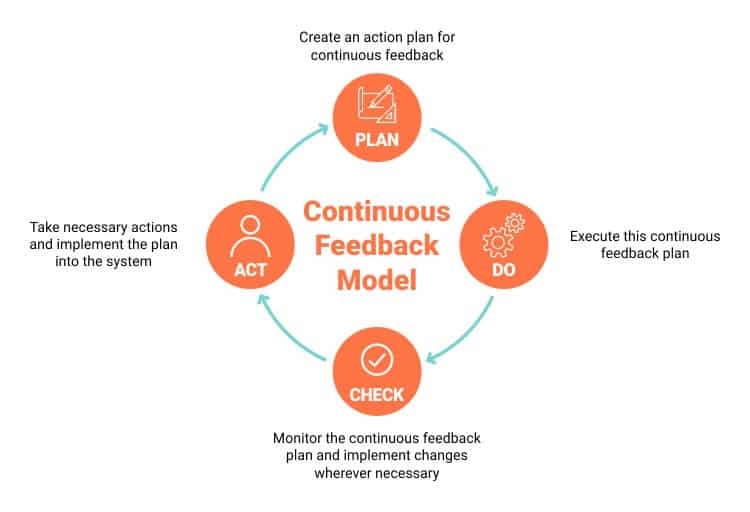
Continuous Feedback: What Is It?
Continuous feedback is a Human Resource approach that encourages and empowers the exchange of feedback on a frequent basis between managers and employees, as well as peer-to-peer. The following are some of the most important characteristics of continuous feedback:
1. It supplements performance appraisals.
Continuous feedback and performance evaluations do not have to be mutually exclusive. “Continuous feedback and annual performance assessments aren’t mutually exclusive,” said Daivat Dholakia, Director of Operations at fleet-tracking software Force by Mojio. “In reality, they’re very compatible.”
Companies that rely on both to better their performance management strategy, according to Dholakia, will benefit from a more streamlined annual and mid-year review process, while also assisting employees in attaining their goals along the way. “Since continuous feedback enables employees to receive information and evaluations about their work on a continuous basis, annual performance reviews can operate more like an overarching long-term retrospective on each employee’s development and goal achievement,” stated Dholakia.
2. It includes, but is not limited to, informal input.
The impromptu “Excellent job!” exchanged in passing is one example of a culture of continuous feedback, but it is not restricted to such informal affirmations. A method that combines goal-setting, constructive feedback, everyday praise, open communication between managers and employees, as well as peer-to-peer, is at the heart of successful continuous feedback programs.
Janelle Owens, Director of HR for online education company Test Prep Insight, said, “Informal continuous feedback methods without a documented framework almost always fail.” “Managers begin skipping evaluations, employees get embarrassed to ask for feedback, and feedback gradually ceases.”
To combat this, Owens advises HR departments to develop a written strategy, much like any other performance management system. “By memorializing the plan in writing, your group is considerably more likely to stay committed,” she said.
3. It is founded on one-on-one interactions.
A continuous feedback system focuses on regular check-ins between managers and staff, both in person and online, while input should be given informally. “You’ve utilized hallway chat to talk about the fantastic [work an employee has done] and the prospects [you see for them], and one-on-one is where you can delve deep on them,” executive coach James Osborn said.
One-on-ones ensure that performance dialogues take place on a frequent basis. “They’re the weekly checkpoint to look at progress and recap what’s happened and what’s coming up,” Osborn explained.
According to Mercer’s 2019 Global Performance Management Research, employee feedback is most effective when it is “particularly related to the employee and targeted to the learning experiences that will accelerate their contribution and acquisition of new abilities.” One-on-ones provide a concentrated time for managers and employees to get to know each other better, allowing managers to provide more tailored feedback to their direct reports, boosting the efficacy of their comments.
4. It aids employees in meeting their goals and OKRs.
The frequency of check-ins is a key aspect of continuous feedback: managers and employees will have regular interactions to discuss performance, progress, and potential for growth, assisting employees in attaining both short- and long-term objectives.
“When there are regular progress check-ins against a set of targets, it’s easier to build action plans on the part of the employee and prioritize objectives to boost productivity,” said Michael Hammelburger, CEO of The Bottom Line Group, a cost-cutting and tax research organization.
Continuous feedback eliminates the lag time of the usual annual review, in which employees receive feedback on events that may have occurred some time ago. Instead, the continuous feedback model’s constant cadence of dialogues and feedback allows employees to change where necessary and gives managers the opportunity to eliminate barriers or provide resources to help employees achieve their goals.
Continuous Feedback: Advantages
Consider augmenting your organization’s performance management system with an ongoing feedback structure to reap the benefits of continuous feedback, which include the following:
1. It promotes staff growth.
A continuous feedback system promotes regular dialogues about staff growth and development. Furthermore, because short- and long-term OKRs are an essential component of any successful continuous feedback framework, employees will actively participate in creating and debating goals with management, which will enhance employee development.
2. It delivers real-time insights.
Because of the open, honest conversations and actionable suggestions that occur on a regular basis between managers and employees, continuous feedback assists in addressing issues and removing barriers before they become problems that threaten project or team success — or, even worse, result in high employee turnover. Because employees receive information on what they’re doing well and where they can improve on a regular basis, continuous feedback reduces the risk of recency bias — when a manager focuses on an employee’s most recent successes or shortcomings — which can be a common pitfall when substantial feedback is only delivered once or twice a year.
3. It increases employee engagement.
According to a Gallup article, “research shows that having talks about development can enhance employee engagement, which in turn can improve productivity and profitability.” We also know that the employee-manager interaction is a crucial component of high employee engagement. According to the Predictive Index’s People Management Research, the amount of feedback an employee receives is closely tied to how highly they rate their manager. Indeed, “when it comes to how much feedback managers give, employees give higher grades to managers who err on the side of giving too much rather than too little,” according to the study.
>u>4. It promotes closer partnerships.
Feedback necessitates sensitivity on the part of both the giver and the receiver. The individual providing feedback must gather the guts to share their observations or experiences, and the receiver must be open to hearing someone else’s judgment of their performance or behavior. But, it is precisely this vulnerability that promotes psychological safety — the perception that an individual will not be punished or humiliated for coming up with ideas, questions, worries, or mistakes — and hence assists staff members in building deeper relationships at work.

Case Study
The Relationship Between Feedback and High-Performance Cultures
Patagonia was able to uncover trends in feedback and performance because Carter was adamant about leveraging technology to encourage feedback. “Before technology, things happened in the dark. “We had no idea what was going on,” Carter remarked in an interview with XM Blog. But, with the use of technology, the company discovered that employees who routinely shared feedback performed at a higher level – and were rewarded accordingly.
According to Carter, employees who routinely exchanged feedback via Patagonia’s digital system were more likely to meet their targets and received 20% greater bonuses. Statistics that, when we consider what we know about continuing feedback — that it helps people learn, gives real-time insights, boosts employee engagement, and strengthens relationships at work — should come as no surprise.
Putting in place a system of continuous feedback is an excellent way for businesses to develop their performance management strategy and create a high-performing workplace culture.
During All Three Stages Of Change, Collect Continuous Feedback
You must first understand the sorts of input required at each step of your project in order to receive valuable continuous feedback during change. I divide change management into three stages: preparation, management, and retention. To ensure success, each phase requires a distinct form of feedback.
1. Preparation Feedback
You set baseline metrics to determine your success measurements throughout the project planning phase. As a result, you’ll have baseline data to utilize throughout the project to measure how effectively the transformation is moving.
These baseline indicators for change communications may include what important stakeholders, change agents, and employees know about the change right now. Consider how frequently your change teams will meet and how frequently communications will be sent out as you plan. To support the continuous input you will receive throughout the project, create a dashboard with everything you need to measure.
During this stage, you will most likely use quantitative data to determine preparedness, such as surveys, change readiness assessments, or other metrics. But don’t overlook the qualitative data you might acquire from more informal channels, such as inter-departmental meetings and interactions employees have with change agents. If your organization has a centralized project or change management office, it’s critical to receive their comments during this stage as well, to avoid potential change fatigue for end users from too many initiatives hitting at the same time.
Now is also the time to identify sponsors, steering committee members, and change agents who will be active in gathering, assessing, and applying input throughout the process. It’s also a good opportunity to start identifying super users and even resistors for frontline level focus groups and feedback in the next stages.
2. Feedback While Managing Change
Continuous input during this stage of the change might make or destroy the entire project. This is frequently the longest step of any change management strategy, therefore it’s critical to arrange for input at various stages during this stage. Some organizations delay input until the end of this step, leaving them with only a go/no-go status check. Insufficient feedback at this point can lead to the failure of the entire project.
The first area you need feedback during this phase is at the design stage. You will need at least one survey to assess progress toward the key metrics for the project that you established during the planning stage. It is also the time to do a change effect assessment for end users so that you can tailor your strategy and training materials to their specific requirements. Following these more detailed surveys and evaluations, it can be beneficial to do more pulse surveys or focus groups before entering the testing and implementation phase to confirm you’re still on the right track.
Once you approach the testing stage, it’s a good idea to conduct another broad poll or focus group to assess how the modification affects different groups and how well you’re progressing toward your goals. During this critical period, a more thorough assessment, followed by a few additional pulse surveys or check-ins with your change agents, can provide valuable continuous feedback.
Now is the time to gather your super users and detractors for focus groups in order to get feedback from both sides of the user spectrum before your product goes live. You can prepare for how the majority of your staff will react to change if you understand how early adopters and laggards will react.
Communication is critical at this period. As you send project updates, you may receive comments or queries from stakeholders and users, which can impact and steer your project. Throughout this stage of the project, keep an eye out for any trends that emerge via informal feedback channels.
3. Reinforcement And Feedback
Many organizations plan their projects from conception to completion and then abandon them. The period following the launch is critical. End users are now actively working in the new system or process. This step encourages the change and helps employees succeed.
At this point, the feedback you receive focuses on reviewing your KPIs and dashboards to ensure that the project is on track to meet its objectives. Surveys and usage stats for any new systems introduced are part of the input at this stage. However, this step of feedback may also include observation.
If your change involves a new call center system, you may need to have change agents observe from the back of the room or sit beside a representative at their desk to see how effectively the rollout is progressing and to answer questions as they emerge in real time. This type of feedback may highlight previously overlooked blind spots that you can address with extra training materials or follow-up conversations for the most common concerns.
By resolving these concerns soon after the launch and offering help, you boost the likelihood of employees sticking with and succeeding with the new system. After-launch feedback can mean the difference between meeting part or all of your project’s objectives.
The project’s success is only as good as the last individual to change. Because the organization is made up of individuals, success is determined by how quickly all of those individuals can complete the change journey.
You may boost the likelihood of having a successful project that is accepted by end users and perceived as a success by leaders by adopting an agile strategy with a plan for continuous input during change.

Exercise 6.6: The Feedback Ladder
Time:
Group Size:
Materials:

Course Manual 7: Outcomes of Tactical Planning
Every business makes plans for every phase of its operations. Long-term strategies, short-term objectives, daily chores or days to be scheduled, and much more are all done behind the scenes.
The many methods of planning and when they should be employed are covered below.

1. Strategic planning:
“Strategy is not the consequence of planning, but the opposite; it’s the starting point.” ~ Henry Mintzberg
Long-term planning for the success and survival of the organization is known as strategic planning. It is a mission that addresses the organization’s purpose. Even ten years of planning is possible. It symbolizes the organization’s vision and is derived from the highest level of the business.
A strategic strategy could be necessary, for instance, if a business wishes to acquire another company. And they would employ various strategies to carry out this task.
2. Tactical Planning:
“Strategy without tactical planning is the slowest route to victory.”
You may understand and implement your strategy more quickly by using tactical planning to divide it into manageable pieces. Tactics are quick, risk-free, and adaptable acts that a business does to advance quickly. This kind of planning is action-oriented and more common in mid-level departments.
For instance, if a business wants to submit a bid, it will need to use marketing campaigns, price reductions, and special offers as strategies. If the company doesn’t win the bid, it wouldn’t hurt the company because it would only be a one-time strategy.
3. Operational Planning:
Any organization’s daily planning is involved. Operational planning aids in motivating the workforce and overcoming obstacles that employees experience on a regular basis.
Operational planning outlines policies, rules, and regulations, outlines what will happen when, who will be involved, how the employees will be managed and trained, etc. It is employed to carry out strategic planning in manageable, quick steps. It enables you to recognize and lessen the hazards and threats that a business typically faces.
Difference between Different Kinds Of Planning
The many forms of planning differ from one another. There are certain plans that are tailored to the aim, such growth plans or contingency plans, in which businesses get ready for unforeseen risks and repercussions like inflation, natural disasters, or accidents. While operational planning, strategic planning, and other forms of ongoing planning help to clarify the organization’s vision and objective.
In order to comprehend their implications, we shall examine a few variations in plannings and their requirements below.
Strategic planning and Tactical planning
Both have a significant effect on the business and are sporadically related. Tactical planning is in charge of bringing the company’s goal to fruition within a set time limit if strategic planning is the company’s vision.
Strategic planning is uncompromising. It is very important for the firm and defines its position in the market. Tactical planning, on the other hand, is risk-free planning that can occasionally be improved or altered.
Strategic planning takes place at the highest level of an organization, whilst tactical planning is handled by the mid-level.
Tactical vs Operational planning
Operational plans specify the tasks that will implement a security policy, whereas tactical plans are utilized to accomplish security and operational plans. Operational planning is ongoing planning that must be done continuously in order to produce desired results.
Tactical vs. Growth planning
The steps you take to achieve any goal or target are referred to as tactical planning. You can create strategies to prevent threats to the organization or strategies to hit a goal. whereas growth planning is intended exclusively for an individual’s or a business’s growth. To expand your firm, you must specify your goals, schedule, and available resources. Growing oneself stronger includes things like marketing strategy, diversification, product development, and market penetration.
Tactical vs. Competitive planning
Knowing your competitor’s strengths and weaknesses is a result of competitive planning. Direct and indirect competitors are also possible. It contains the business plan you can create to gain an advantage over them, etc. The focus of the analysis is on you and your rival. Several elements of competitive planning include having more and reliable resources than your rival, highly skilled workforce, simple access to raw materials, and more.
While competitors are included in tactical planning, they are not the only ones. You can employ tactics to expand and maintain your business while preventing or responding to changes in both the organization’s and the business’s performance.
Tactical planning process
The idea of tactical planning is not vague. It has a clear focus, is very defined, and is goal-oriented. The business must do a SWOT and SMART analysis for tactical planning. Any firm can identify its strengths, weaknesses, opportunities, and threats using the SWOT analysis.
While supporting you in maintaining a set of criteria for your goals, SMART stands for:
• Specific goals: target-oriented
• Measurable goals: helps you identify tangible progress
• Achievable goals: realistic goals
• Relevant goals are industry-specific goals
• Timeline refers to the goals which are time-bound.
Tactical planning steps
The goals and resources of the company are important factors in tactical planning. To plan tactics for a corporation, follow these steps:
1. Keep Vision in Sight
Planning for tactics requires insight into your company’s vision because the activities should be oriented toward the objectives. The organization loses precious time and resources due to hazy planning.
2. Define Goals and Objectives
Make sure the goals are clear so that the teams can execute the strategies. When making plans, managers must consider the output and effort of the team members to avoid setting up unrealistic expectations.
3. Assign Actions
Everyone on the team should be aware of their contribution to achieving the stated objective. It aids in making the most of resources while preventing confusion and distraction.
4. Combine Actions With Objectives
When activities are tied to goals, team members are more likely to fulfill them since the reward—a sense of achievement—is in sight.
5. Determining the KPIs
Important performance indicators direct you toward your objective. They guide you in the proper way and assist you in assessing your development. Clear KPIs and a vision can help employees act appropriately. To keep you on track, use KPIs that are goal-oriented, such as profit, sales targets, quality assurance, etc.
6. Flexibility
The adaptability of tactical planning is its best quality. It reassures the team because stress and intense pressure to perform only hurt overall performance. Every business is different, and when working long term, things can change or slow down. You might be more open to alternatives when the plan is flexible.
7. Plan B
Because nothing ever goes as planned, it is absolutely essential to have a Plan B. Plan B aids you in avoiding dangers, uncertainty, and member demoralization. Also, it minimizes the effects and keeps the business on course. Any business or person should have a plan for emergencies to help them cope with the loss.
8. Who and what are involved in tactical planning
It is strongly advised to immediately involve the affected parties while formulating a plan of action. It not only aids in identifying the SWOT analysis but also in designing the technique in accordance with the department’s needs.
Provide the tasks to the people who are best suited to complete them. With the least amount of resources and work, it helps to obtain optimized results.
Access to the proper training, production platforms, and tools and resources is also very beneficial and produces the required outcomes with excellent financial returns for the firm.
When discussing a tactical strategy, make sure to note everything that is needed and give it to the team right away so they can work efficiently.
Tactical planning examples
Planning your strategy tactically is crucial in any industry or person’s life. It is a course of action to accomplish the objectives. There are several examples that clearly demonstrate tactical planning. Several of them are covered below.
1. Use a conglomerate as an example. They need to grow their business into rural areas, and in order to do that, they must take specific actions. They would employ various strategies for that, such visiting the locals and learning about their problems in order to offer their services, publicizing their product through local TV, and so on. giving away samples for free to promote the goods, etc.
2. During a battle, both sides strive to win over the other side’s citizens. For this, they employ several strategies that address the issues of the target audience while also advancing national goals. To woo the populace and establish themselves, they would construct hospitals, educational facilities, and offer them reasonably priced services.
3. A corporation must utilize strategies in advance to reach its goal within a given time frame if it wants to maximize its output of items for the upcoming year. In order to have the resources for the production, they could adopt the following strategies: purchasing additional equipment, hiring more people, or increasing income.
Every firm uses strategies to reap the greatest rewards. You can accomplish your goals within a set time frame with the use of tactical planning. In order to get the intended results, careful preparation and timing are required.
Advantages of tactical planning
You cannot strategically plan your action without tactical planning. It functions at all levels and aids in maintaining the system inside the company.
The benefits and advantages of tactical planning include:
• It is adaptable and can be modified as circumstances dictate.
• It serves as a platform for short-term accomplishment of long-term objectives.
• It offers the team an action plan.
• It is focused and provides observable outcomes.
• If tactical planning is unsuccessful or not yielding the desired results, it can be altered.
The drawbacks of strategic planning
Every plan includes drawbacks as well. Despite being highly acclaimed, tactical planning can backfire if not used properly. The following are a few drawbacks of tactical planning:
• It slows down the progress of the organization.
• The teams need to work together to deliver results which can sometimes become a hindrance if one of the teams is unable to achieve the benchmark in allocated time.
• It requires a lot of planning and sometimes more time is spent in planning than in doing. Which can hamper the growth of an organization.

Case Study: How Coca-Cola uses tactical planning
Coca-tactical Cola’s choices are driven by expansion, as is typical of most established, major businesses. The tactical planners of Coca-Cola are always considering what new areas the corporation should enter, how to overtake rivals for market share, and how to get more people to buy their goods.
Market Sizing
Finding out the dimensions of distinct global marketplaces is the first stage in tactical planning that works. Companies can prioritize which new markets to pursue first by doing a market size analysis. Coca-Cola will first take into account the population of a market as a whole, the proportion of that population who presently use Coca-product, Cola’s and the potential volume of product that Coca-Cola may sell to non-users when doing this study.
Strategies for entering a new market
The tactical strategists at Coca-Cola must choose the best approach to take once they have decided which market to enter. The best approach will rely on the specific qualities of the target market.

Exercise 6.7: Plan B
Time:
Group Size:
Materials:
Brief:
The task begins as follows:

Course Manual 8: Formal Review
What are performance standards?
Performance standards are instructions that companies provide to their staff members to explain what is expected of them as a member of the team. These outline the responsibilities of the position and the standards of performance that the employee must meet. Although performance standards are used for all employees, new hires are frequently given these instructions to help them grasp their duties and responsibilities. Performance standards are another tool that employers may use to assess team members. All employees should be treated similarly under performance standards, which should be clear, measurable, and simple to comprehend. Three standard tiers of performance management are as follows:
Strategic: This level refers to goals on the organizational, or company, level. Strategic standards should align with the company’s vision, objectives and values.
Operational: This level of performance management emphasizes how departmental activities work to achieve the company’s goals. Employers may make performance standards that apply to the company’s departments.
Individual: This level focuses on the individual employee to ensure that all employees are performing their tasks well. Individual standards evaluate employees’ work and seek to improve the quality of their performances.
While some fundamental performance criteria could be common to many businesses, distinct industries might have varied requirements of their staff members. Performance requirements for teachers, for instance, could be different from those for accountants.
Why are performance standards important?
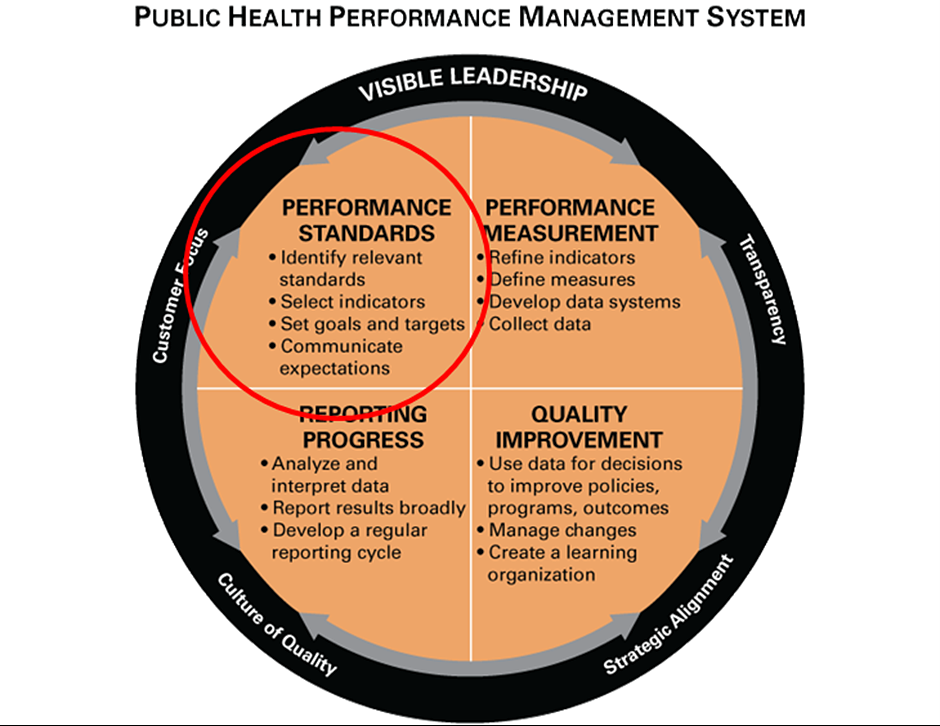
Performance expectations are crucial because they give workers a context for how the business wants them to operate. This enables open dialogue between the employer and the employee, which may aid in the employee’s comprehension of their duties. It also outlines how staff members can achieve these objectives. One performance requirement might be communication, for instance, and the employer might then explain to the employee what communication means to the business and how to satisfy this standard. Because they can be used as tools for evaluation by employers, performance standards are also crucial.
Types of performance standards
Here are some common types of performance standards that you could use for your company:
Professionalism
This standard deals with how a worker conducts themselves at work. Employees should conduct themselves professionally because many businesses place a high emphasis on a respectful and serious workplace. Being collected and composed in the job, pleasant and encouraging to other team members are all examples of professionalism. It might also be used to describe other facets of office behavior, like punctuality and dressing in accordance with business policy. Professionalism might be crucial in a business where employees interact with clients or operate in teams. Teachers should, for instance, conduct themselves professionally when speaking with kids.
Example: The person conducts himself or herself in a professional manner in the workplace, as evidenced by both their actions and words. Also, the employee upholds courteous interactions with customers, management, and other employees.
Teamwork
If employees frequently collaborate, employers may establish performance criteria for cooperation. Teamwork is the capacity to effectively cooperate with others to carry out specific tasks. Teamwork is an important performance requirement to add in a workplace where employees could collaborate on tasks. Employers may be expected to support one another as necessary by companies. Employees must, for instance, be open to sharing project-related knowledge with their team. Companies may stress that staff are committed to supporting one another and that the workplace should be collaborative.
Example: When appropriate and necessary, the employee actively lends a hand to other team members. Workers have the option of soliciting or offering assistance to one another.
Communication
This is the capacity to express ideas or knowledge to others clearly. Writing an email or giving a presentation on a subject fall within the category of communication, as do oral and written conversations. Strong writing abilities and clear language are needed for this. This performance criteria may be used by employers to encourage open communication among staff members. In many circumstances, being able to communicate effectively is a vital ability for an employee to possess because it can boost productivity and teamwork. Employees frequently communicate to finish a task while they work together. Speaking with customers is a form of communication that is crucial for jobs in customer service.
Example: The worker has effective communication with clients, team members, and management. When appropriate, the employee conveys accurate information.
Problem-solving
Companies may also incorporate problem-solving as a requirement for performance. The capacity to evaluate a situation, identify problems, and offer potential solutions is known as problem-solving. This is a widespread requirement since, regardless of the business, the majority of occupations demand problem-solving abilities. For instance, a dietician might need to use problem-solving skills to design a diet that meets the unique needs of a client. In order to build corresponding timetables for several employees, a recruiting manager may apply problem-solving techniques. The way a worker responds to a challenge and finds a solution can be assessed by problem-solving criteria.
Example: The employee demonstrates strong problem-solving skills when faced with an issue. The employee can think of creative solutions and is flexible when problem-solving.
Accountability
This is a reference to accepting accountability for one’s deeds, as was previously discussed. Accountability is a crucial performance criteria because it demonstrates to workers that they are responsible for their choices. Employees are also informed by this performance standard that the organization occasionally wants them to work independently. Companies often appreciate when workers are motivated and capable of finishing jobs without direct supervision. Accountability can also indicate that staff members are aware of their responsibilities on a team. Employers can assess a worker’s independence and capacity for responsibility through accountability.
Example: The worker assumes responsibility at work, which means they accept accountability for their deeds and obligations. The worker can function freely with little direction from management.
Time management
This is the capacity to finish a group of assigned tasks by a specific deadline. Prioritization and organization abilities are frequently needed for time management. Companies might state that they expect workers to finish their tasks by a certain time by including time management as a performance requirement. Because many positions demand individuals to perform and finish several activities during the workday or week, time management is a crucial performance benchmark. This performance criteria can be used by employers to assess how their staff members use their working hours.
Example: The worker completes their work by the deadline. In order to fulfill their projects on schedule, the employee employs prioritization to decide which duties they should perform first.

How to be a supportive teammate
Be a cheerleader
Regardless of pom-poms, recognizing your coworkers’ accomplishments is a wonderful way to express your support. They’ll probably feel more confident as a result, and it shows them that you value them enough to appreciate their effort.
Check in regularly
You need to connect in order to establish good connections. Use whichever method is most suitable to check in with your coworkers, whether it be in person, via instant messenger, over the phone, or via video call. Sometimes all it takes to start a discussion is a simple “how are you?” Small chat is crucial for building relationships and, as a result, for positioning your coworkers for success.
Learn to listen to problems instead of fixing them
You don’t have to solve everyone else’s issues to be a helpful coworker. Listening is and should be sufficient most of the time. By taking the time to hear what they have to say, you can show your coworkers that you value what they have to say while also giving them the freedom to develop their own ideas and conclusions.
Be honest
Building strong and enduring partnerships requires trust. Of course, being honest occasionally entails opposing someone or offering constructive criticism. But even this is significant, and when done with care, it can really deepen relationships. Colleagues can stop worrying that others are thinking differently than they are saying when they know the feedback they receive will be honest, whether it is positive or negative.
Offer your experience
We all have knowledge to share, and helping someone else can be beneficial to both of you. Giving your time and skills, even if it’s just a tiny favor, demonstrates to your coworkers your concern for their success and willingness to go above and beyond to assist them. Also, it will motivate them to assist you in return should the chance present itself.
Respect boundaries
Everyone is unique, therefore it’s critical to understand what your coworkers’ boundaries are. Some prefer to keep work and home life more segregated, while some teams are so tight that they meet regularly on the weekends. Everyone has a different rationale for their position, and there is no correct response. Don’t assume anything; just because a team member doesn’t want to socialize doesn’t mean they don’t value your relationship with them at work.
Long-term benefits can come to you and your coworkers if you are a supportive colleague. By setting an example of what it looks like to be a helpful colleague and encouraging others to follow suit, you may take the lead in developing a supportive workplace culture.
How to Equip Your Team to Achieve More
Training, Tools, Time
Leaders need to equip their team members with Training, Tools and Time.
1. TRAINING
What kind of training is offered to team members in your company when they first assume a role? One of the biggest errors we’ve observed is when people who perform exceptionally well are elevated to managerial positions. Many believe that if someone is good in their current job, they will also be good managers. Some team members became disillusioned with their new roles without any training because they weren’t prepared for how different they would be.
What type of leadership training is provided in your organization?
The most crucial training you should concentrate on is decision-making, good meeting management, and having difficult conversations. When decision-making processes are unclear, dissatisfaction rapidly sets in. Nevertheless, just because there is clarity does not necessarily guarantee that your team members are capable of making the best choices. Utilizing a case study, such as Nut Island from the Harvard Business Review, is a fantastic method to improve your organization’s comprehension of decision-making.
Organizations that foster a culture of continual learning benefit most from training. A conducive learning atmosphere, tangible learning procedures, and reinforcement-giving leadership behaviors are the fundamental building elements of organizational learning. Do you, as a leader, promote continual education and urge others to do the same?

Case Study: Nut Island Effect
The Nut Island effect describes an organizational behavior phenomenon in which a team of skilled employees becomes isolated from distracted top managers resulting in a catastrophic loss of the ability of the team to perform an important mission. The term was coined by Paul F. Levy, a former Massachusetts state official, in an article in the Harvard Business Review published in 2001. The article outlines a situation which resulted in massive pollution of Boston Harbor, and proposes that the name of the facility involved be applied to similar situations in other business enterprises. The work is used as a source in human resources management case studies and is featured on the websites of several business management consulting firms and health care institutions.
2. TOOLS
What resources do your team members need to perform their tasks to the highest standards? The “soft” intangible talents need constant honed with a developing service and knowledge business.
In his most recent book, Creativity Inc., Ed Catmull discusses the effectiveness of methods like brain trusts and post-mortems (meetings held after a project to look at lessons learned). These were the resources that Pixar used to constantly produce box office hits. According to Catmull, a leader’s responsibility is to develop the capacity to recover from failures rather than to eliminate risk. He contends that it must be safe to speak the truth and advises that we should continually question all of our presumptions and look for any weaknesses that could lead to the eradication of our culture. This is made possible by resources like post-mortems and brain trusts.
There are simple tools you can use to evaluate the team culture. Lencioni’s Five Dysfunctions of a Team offers a rapid evaluation and can trigger crucial team discussions. Take a road trip if your team is stuck or having problems coming up with ideas. Visit industry leaders and take note of what they are doing. The query “Would someone invent us if we weren’t here already?” is another useful tool.
3. TIME
Leaders who create enduring teams achieve success by facilitating the success of others. Giving of your time and coaching other leaders in your organization is one of the best methods to do this. By volunteering your time, you may highlight their positive traits, give challenging tasks that will push them beyond their present level of proficiency, and offer feedback.
Training is complemented by mentoring. Our training focuses mostly on practical skills, or the “How To” of our work. Coaching and counseling play a significantly larger role in mentoring. It focuses considerably more on the intangible and qualitative aspects of our work, such as how we handle disappointment, how we handle feedback that might be improved, and how we act with humility and compassion.
We owe it to our organizations to fulfill this obligation. We make sure that our culture thrives and that our teams are long-lasting by investing time in their growth.
Make an Impact: Build to Last!
In the end, we chose leadership in order to have an effect and change things. This can only be done by leaders through the teams they create. Why not build strong, long-lasting teams?
Rewarding your team
Making your employees feel valued and appreciating their efforts through an employee incentives and recognition program is essential for increasing employee engagement. Employee engagement is closely related to well-being since motivated employees have more vigor and dedication to their jobs. And we are aware that the effect is actual. When you make an investment in a worker’s well-being—their emotional, financial, physical, and professional well-being—they make an investment in the business.
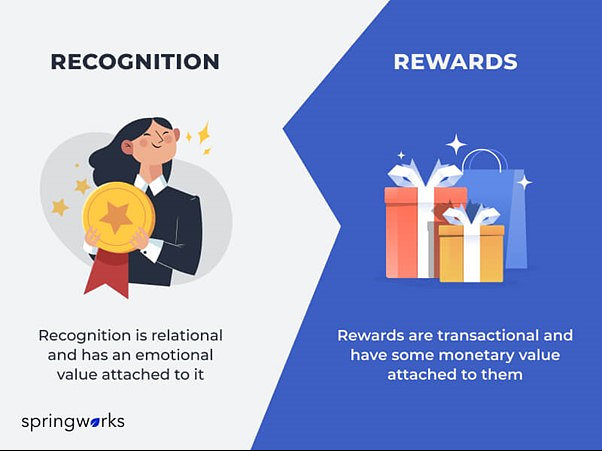
The key to a successful employee rewards and recognition program
Knowing how to recognize and reward people, especially your high achievers, is the not-so-magical formula for increasing employee engagement. The intention is to recognize personnel for their accomplishments, diligence, or a job well done. Each employee incentives and recognition program will be different; the key is to concentrate on genuine employee appreciation. (PS: Giving out money isn’t always required.)
Here are some low-cost ways to reward employees:
1. Express thanks with a public thank you
Sometimes a simple “thank you” can go a long way, especially in a public setting like an email or an all-company meeting. Bcc your corporate alias to prevent sending out a flood of reply-all emails.
2. Give a hand-written note
A straightforward handwritten note stands out in this day and age of emails and texting. Spend a short time expressing your gratitude in a classy card or simply on a colorful piece of paper or sticky note.
3. Offer time off
Consider giving workers an extra day off or allowing them to leave a little early on Friday if they are working overtime or on the weekends to complete a project.
4. Give small gifts
Large monetary gifts don’t need to cost more than you intended. Instead, consider thoughtful yet affordable presents like movie tickets, flowers, or gift cards to a nearby coffee shop or grocery store.
5. Pay for travel expenses
Provide a prize of one month’s free parking, a bus pass, or a petrol card to employees who typically pay for parking or public transportation.
6. Offer chair massages
A large group of employees should be rewarded, so instead of paying for individual massages, think about hiring a masseuse for the day and providing 15-minute chair massages.
7. Highlight outstanding workers in your newsletter or company blog
By highlighting great employees in your company blog or newsletter, you not only offer them the credit they merit but also make it known what your business values in its top workers. This is fantastic for both motivating current workers and recruiting new ones.
8. Schedule an all-company activity
Many businesses host holiday parties, but you can reward outstanding performance all year long by organizing an impromptu event that offers workers a few hours off. A summer field day with a BBQ and outdoor sports or a company-sponsored happy hour are other suggestions for rewarding employees. All workplace events serve to do more than just acknowledge good work; they also raise spirits and foster relationships and departmental collaboration.

Exercise 6.8:
Time:
Group Size:
Materials:
1. How were you rewarded
2. Did the reward match the efforts?
3. Did this reward have any impact on your work, and if so, how?
4. Has this experience influenced how you reward your own employees?

Course Manual 9: Feedback Culture
Psychological Safety and Feedback Culture
Individuals attempt to protect their self-image in any situation, including the workplace. You name it: power dynamics, hierarchy, expert status, “old boys’ clubs,” etc. Because the playing field is not level, the workplace is fraught with threats to our self-esteem, and the stakes — our job and financial security — are high.
As a result, the finest leaders mitigate risks by providing psychological safety for their team members. These leaders purposefully create an environment in which it is safe to speak up, share ideas, dispute respectfully, ask for help, and admit flaws. According to Amy Edmondson’s book “The Fearless Organization: Building Psychological Safety in the Workplace for Learning, Creativity, and Development,” studies show that these environments promote innovation, team member inclusion, and successful teamwork.
Learning and development (L&D) organizations help leaders who create psychological safety behaviors, such as avoiding blame and criticism and promoting the team, in order to encourage innovation and teamwork.
Nevertheless, these behaviors are only part of the picture. Leaders must also establish clear expectations and communicate openly when staff fail to reach those objectives. Developing high-performance teams necessitates a focus on deficiencies and how to overcome them, which may appear to contradict psychological safety. Employees, on the other hand, cannot try to close gaps they are unaware of. It is doubtful that deliberate development will occur in the absence of consciousness.
Leaders may be tempted to build performance through positive reinforcement to maintain a “safe” environment in the absence of dedicated leadership development. While praise and appreciation make employees feel good, negative criticism is more helpful, especially for long-term success. Addressing growth primarily through positive reinforcement might lead to team members becoming resistant to developmental input in the long run. Over time, one-sided positive feedback leads to a failure to acknowledge flaws and an inability to reverse course.
Thankfully, learning and development organizations may teach leaders to detect and control common responses to feedback, such as saving face, losing perspective, and projecting motives, in ways that promote psychological safety.

Case Study: NASA and the Challenger
Christa McAuliffe would have been the first teacher in space. Instead, 73 seconds after leaving Earth, the space shuttle she was riding, Challenger, disintegrated. Christa and the astronaut team never made it to space.
On the surface, there appeared to be a technical issue; the spacecraft had not been properly sealed for the extreme cold at liftoff. The main cause, however, was extremely human: NASA administrators were aware of this deadly error for nine years before to the accident. Engineers attempted to speak up about the issue, but they were disregarded. NASA was not a safe environment to express concerns. Failures were not tolerated or learned from in the culture, which harmed NASA’s performance and cost seven lives.
The Challenger catastrophe is a well-known example of groupthink. When a team is aware of a poor decision but no one stands up against it, defective decision-making occurs. In the 1980s, NASA ignored the voices of engineers and specialists working directly with the cause of the problem who spoke up in the name of safety. This calamity may have been avoided if engineers and managers felt comfortable speaking up and their concerns were taken seriously. Instead, deadlines and corporate goals were given more weight than employees’ opinions.
Keeping Face
Negative criticism has an effect on our ego and makes us feel vulnerable. Leaders may safeguard us from these natural reactions by contextualizing their feedback and emphasizing why the issue is important. This method stresses the value of the employee’s contribution, which boosts self-esteem.
Maintaining Perspective
Another common reaction to feedback is to lose perspective. We’ve all had catastrophizing moments, when we replied to advise with “all or nothing” thinking: “I’ll never be any good,” “I can’t get anything right,” or “I’m a failure.”
Controlling Projection
Shooting the messenger is a natural defense strategy designed to keep our emotions secure. To make ourselves feel better, we frequently explain unfavorable feedback by inventing variants of “He doesn’t like me” or “I threaten her.” As a result, when faced with explicit input on essential improvements, team members can connect the feedback to the ideas or motives of the individual providing it.
Truth and Safety
It is feasible to have both psychological safety and a constructive feedback culture, but it takes good leaders. Learning organizations that teach psychological safety practices must also teach the companion skill of delivering feedback if they are to contribute to a high-performance workplace.
Environment Of Creative Friction
The incorrect kind of team friction makes people dislike each other and pull back, whereas the proper kind produces success. How do you foster positive creative friction?
Share your thoughts. The entire team, including the client, collaborates on all stages of the ideation process, from consumer learning through possibility analysis to visualizing the final idea. Working directly with consumers to understand their wants and goals is a particularly strong bonding experience that provides the team with a shared sense of purpose and a shared foundation of facts and sentiments.
Eliminate any barriers to communication. Because people interact in a variety of ways, we conduct social styles assessments to help people understand how their teammates communicate. Is he or she a driver, friendly, expressive, or analytical? They realize that Harry isn’t always overpowering, but that he prefers to lead with ideas, and that Susan isn’t always on task, but she always considers people first. When you understand why people vary, you can joke about it rather than become frustrated, and it becomes a method for the team to unite rather than a source of conflict.
Have fun with it. Lock yourselves in the project room and have a heated debate. The magic of innovation is the combination of perception and analysis. Few people can achieve this alone, but a well-functioning team can be prolifically creative while being sharply critical. The team as a whole functions as one open and self-aware brain that is both generating and disputing with itself. There is only one agenda, and communication is quick and ruthlessly honest.
Moving Away From Constructive Criticism
Feedback guidance hasn’t changed much in recent years, with the standard way being ‘the feedback sandwich’ – start with something good, then move on to constructive criticism, and finish with another positive. Although this approach is appropriate for some cultures, we are increasingly operating in intercultural situations, and the top-down institutions that gave rise to the sandwich are giving way to flatter, more decentralized management methods. Work has evolved, and it is past time to reconsider how we approach criticism.
To prevent demoralizing the person, the original recipe begins with a positive to warm up, followed by honest feedback, and concluded with another positive.
Because this formula frequently fails, a plethora of versions have been created:
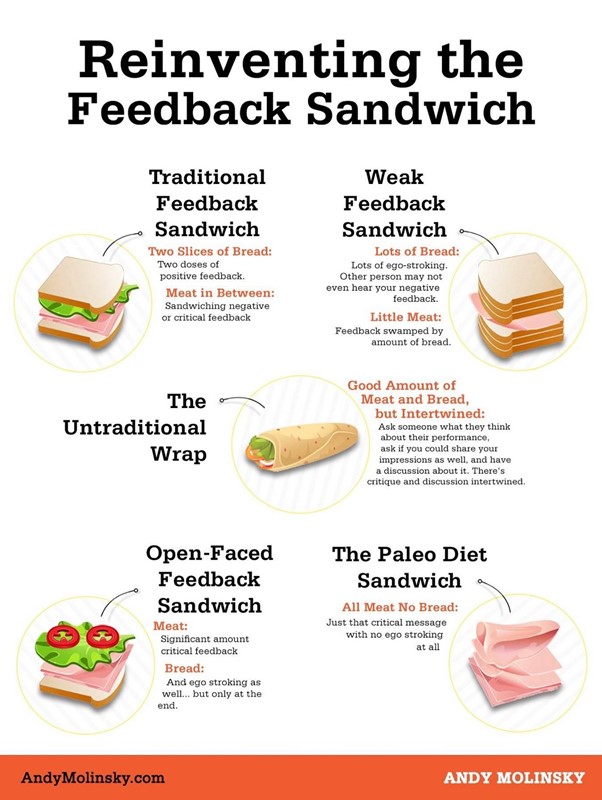
However, these do not function in most modern workplaces since people receive feedback quite differently, especially across cultures.
Because highly frank criticism is normal and widely accepted in French and Dutch cultures, the sandwich’s positives are perceived as inauthentic. Japanese and Indonesians, on the other hand, are accustomed to very mild negative feedback. ‘The areas for improvement’ are presented in their culture by complementing other aspects while purposefully excluding the one that needs improvement. For example, if your colleague from Jakarta had given you three reports, and report number two needed some work, you might remark “reports one and three were wonderful, thank you. The deadline is next week but I am delighted you showed me the reports ahead of time”. After a week, your Indonesian colleague will most likely get the message and hand you an enhanced version of the second report (the one that wasn’t coveted). Everyone will be pleased with the outcome of the conversation.
On the other hand, if this was your Rotterdam colleague, the line above would undoubtedly persuade him to believe he did an excellent job and that no additional action was required. A more acceptable message for most Dutch would be something along the lines of “thank you for the reports, the second one requires changes due to XYZ, could you work on it this week?” He or she will most likely appreciate your candor and know that they can rely on you in the future.
The feedback sandwich, in contrast to the culturally tailored interactions mentioned above, attempts to be a “one size fits all” solution. Regrettably, a French or Dutch worker may interpret the sandwich’s advantages as inauthentic and quit trusting you, whereas a Japanese or Indonesian may feel personally aggressed by the filling’s directness.
However, those are just a few examples; imagine leading a team of Namibians, Brazilians, Americans, and Russians to the realization that our Saturday night will be spent generating four distinct versions of the same email and fearing the ramifications of ever sending the wrong one to any of them.

Case Study
Consider Jens, a German executive assigned by his company’s German corporate headquarters to increase efficiency at the company’s manufacturing plant in Shanghai. Although being sent to increase plant efficiency, all of his efforts seemed to produce the exact opposite outcome. Jens’ Chinese staff appeared to be losing efficiency and effectiveness, and he couldn’t find out why. He was employing what he knew worked in Germany, particularly in terms of performance feedback. He made an extra effort to be as demanding and severe with his Chinese staff as he would have been in Germany. If his Chinese staff failed to provide what he required, Jens would be “on it,” providing fast feedback to get the process back on track. Yet there was a problem: this didn’t work. In fact, it was a colossal failure. Jens appeared to be decreasing production rather than increasing it, and his own corporate supervisors began to make calls. The entire scenario was deteriorating.
What worked in Germany in terms of strong, critical, to-the-point negative feedback was actually demotivating to Jens’ new Chinese employees, who were accustomed to a far milder feedback style. In Germany, specific accomplishments are not singled out or praised unless they are truly remarkable. Positive work practices are considered normal rather than exceptional in Germany. Workers are expected to perform a specific task, and when they do so, they are not required to be recognized. The culture in China was completely different, at least at this specific plant. Workers anticipated more positive reinforcement rather than plain criticism. These encouraging remarks encouraged them to boost output and exert that extra, discretionary effort.
Jens had to work hard to realize this difference and be willing to change his conduct to suit it, because such a motivational style seemed awkward and strange to him. He didn’t feel comfortable being so “soft” with his employees, and he was skeptical of its effectiveness. But, after much trial and error, Jens was able to establish a new feedback style that functioned in the Chinese context while also feeling acceptable (or acceptable enough) to his German mentality. That took time and work, but it was really effective in the end.
How to Foster a Feedback Culture at Work
If you’re interested in the advantages of a feedback culture, as described above, you might be asking how to get started. Here are some basic suggestions for developing a better feedback culture at your workplace.
• Encourage staff to provide feedback to you – You must “walk the walk” and “speak the talk” to encourage people to “buy in” to a workplace culture. That means that, as an HR manager or executive, you should encourage employees to provide feedback to you. You should also encourage staff to provide feedback to you; this fosters an open and honest environment.
• Encourage peer-to-peer feedback – One of the most crucial parts of a feedback culture is peer-to-peer feedback. Ideally, you want employees to provide each other constructive, positive feedback – as well as comments on areas for growth.
Peer-to-peer feedback can make individuals feel valued and is extremely useful for providing feedback to underperforming employees. Higher-performing employees can coach these people and provide them with success ideas.
• Nurture a growth attitude – Your entire firm should have a “growth mindset”. You should never be pleased with how well you are doing right now; instead, you should be looking ahead. Encourage a growth mentality by prioritizing employee training and continual learning, as well as providing staff with all of the resources they need to broaden their skill sets and capacities.
• Provide feedback training – This is critical. Feedback training should be required for all employees, especially when transitioning to a feedback culture.
Some employees may be better than others at providing constructive criticism and good comments. Those who lack feedback experience, or who are blunt and perhaps unpleasant, risk hurting the feelings of other, more sensitive colleagues.
Employees must be able to share honest, open feedback with one another without feeling personally attacked or injured by others in order for your feedback culture to thrive. Feedback training enables you to deliver this skill set to each employee, avoiding negativity.
• Use continuous feedback instead of periodic feedback – As you may have guessed, a continuous feedback process is essential for fostering a positive workplace feedback culture. Periodic feedback, such as yearly performance reviews, has no place in today’s feedback culture. They are antiquated and out of date.
Instead, prioritize continual feedback by holding shorter, more informal sessions every month or two, or by using a project-based performance review approach.
This consistent, beneficial feedback reinforces the need of a feedback culture in your staff. And as they continue to provide feedback to one another, they will become more at ease with the process. It will gradually become more natural.
• Promote openness and trust – For your feedback culture to flourish, everyone must feel comfortable speaking out. As a result, transparency and trust are crucial.
Employees should feel free to provide feedback to one another – and to the firm – without fear of retaliation or penalty. If you do not take actions to assure that this occurs, your culture will crumble.
Employees will be afraid to be honest, and your workplace environment may soon deteriorate. This will be exceedingly counterproductive, and employee performance may suffer as a result.
• Balance critical and positive feedback – Your feedback culture must tread carefully between honesty and negativity. If an employee is suffering, you should not be afraid to point out their flaws. Employees may feel insulted or hurt if you solely provide critical comments, and they may even leave the organization.
Positive and critical feedback should be included in every feedback session. Encourage employees and other HR managers to begin with the positives and to highlight areas where an employee excels. They can then provide helpful critical comments without feeling attacked personally.
• Normalize the feedback process – This is one of the most difficult obstacles that each business must overcome in order to develop a successful feedback culture, especially in the early days of the new policy.
In some circumstances, it will be difficult to standardize the procedure if your staff are not used to providing feedback to one another. You can overcome this by incorporating feedback into regular circumstances.
For example, suppose you have a team meeting once a month to discuss a current project. After the meeting, make it a practice to divide your employees into groups of two or three and hold a feedback session in which each person can be honest about what’s working well – and what may be improved.
That is only one example. Think about where you can integrate the feedback process – and how you can standardize it so that employees rapidly grow comfortable offering and receiving feedback on a regular basis.
• Emphasize personal accountability – For CEOs and HR managers, personal accountability for feedback is extremely vital. Your staff always take their cues “from the top”. That implies they are unlikely to believe you if you continually telling them how important feedback is but then skip every feedback session to accomplish other things. They will follow your example rather than your words.
Executives, managers, and other supervisors must hold themselves personally responsible for feedback. They can persuade workers below them to change by demonstrating their willingness to adapt to this new culture from the top down.
Furthermore, you and senior leaders should be continually soliciting – and receiving – feedback from everyone, even lower-level employees. This allows you to lead by example and encourage a more positive feedback culture.
• Make use of numerous feedback methods – Not everyone is at ease with one-on-one, face-to-face feedback sessions. Consider a variety of feedback methods, such as an online feedback platform, small group feedback meetings, or other alternatives.
By offering employees some leeway in submitting feedback, you’ll be able to accommodate to those who aren’t as comfortable talking with their colleagues, enhancing engagement with your program.
As you can see, establishing a feedback culture in your workplace will need some effort. These are just a few suggestions, but if you follow them, you will be successful.

Exercise 6.9: Feedback Mad Libs
Time:
Group Size:
Materials:
Project Studies
Project Study (Part 1) – Customer Service
The Head of this Department is to provide a detailed report relating to the Eagle Part 2 process that has been implemented within their department, together with all key stakeholders, as a result of conducting this workshop, incorporating process: planning; development; implementation; management; and review. Your process should feature the following 9 parts:
01. Importance Of Feedback
02. Feedback In Planning
03. Feedback System
04. Employee Feedback
05. Customer Feedback
06. Continuous Feedback
07. Outcomes of Tactical Planning
08. Formal Review
09. Feedback Culture
Please include the results of the initial evaluation and assessment.
Project Study (Part 2) – E-Business
The Head of this Department is to provide a detailed report relating to the Eagle Part 2 process that has been implemented within their department, together with all key stakeholders, as a result of conducting this workshop, incorporating process: planning; development; implementation; management; and review. Your process should feature the following 9 parts:
01. Importance Of Feedback
02. Feedback In Planning
03. Feedback System
04. Employee Feedback
05. Customer Feedback
06. Continuous Feedback
07. Outcomes of Tactical Planning
08. Formal Review
09. Feedback Culture
Please include the results of the initial evaluation and assessment.
Project Study (Part 3) – Finance
The Head of this Department is to provide a detailed report relating to the Eagle Part 2 process that has been implemented within their department, together with all key stakeholders, as a result of conducting this workshop, incorporating process: planning; development; implementation; management; and review. Your process should feature the following 9 parts:
01. Importance Of Feedback
02. Feedback In Planning
03. Feedback System
04. Employee Feedback
05. Customer Feedback
06. Continuous Feedback
07. Outcomes of Tactical Planning
08. Formal Review
09. Feedback Culture
Please include the results of the initial evaluation and assessment.
Project Study (Part 4) – Globalization
The Head of this Department is to provide a detailed report relating to the Eagle Part 2 process that has been implemented within their department, together with all key stakeholders, as a result of conducting this workshop, incorporating process: planning; development; implementation; management; and review. Your process should feature the following 9 parts:
01. Importance Of Feedback
02. Feedback In Planning
03. Feedback System
04. Employee Feedback
05. Customer Feedback
06. Continuous Feedback
07. Outcomes of Tactical Planning
08. Formal Review
09. Feedback Culture
Please include the results of the initial evaluation and assessment.
Project Study (Part 5) – Human Resources
The Head of this Department is to provide a detailed report relating to the Eagle Part 2 process that has been implemented within their department, together with all key stakeholders, as a result of conducting this workshop, incorporating process: planning; development; implementation; management; and review. Your process should feature the following 9 parts:
01. Importance Of Feedback
02. Feedback In Planning
03. Feedback System
04. Employee Feedback
05. Customer Feedback
06. Continuous Feedback
07. Outcomes of Tactical Planning
08. Formal Review
09. Feedback Culture
Please include the results of the initial evaluation and assessment.
Project Study (Part 6) – Information Technology
The Head of this Department is to provide a detailed report relating to the Eagle Part 2 process that has been implemented within their department, together with all key stakeholders, as a result of conducting this workshop, incorporating process: planning; development; implementation; management; and review. Your process should feature the following 9 parts:
01. Importance Of Feedback
02. Feedback In Planning
03. Feedback System
04. Employee Feedback
05. Customer Feedback
06. Continuous Feedback
07. Outcomes of Tactical Planning
08. Formal Review
09. Feedback Culture
Please include the results of the initial evaluation and assessment.
Project Study (Part 7) – Legal
The Head of this Department is to provide a detailed report relating to the Eagle Part 2 process that has been implemented within their department, together with all key stakeholders, as a result of conducting this workshop, incorporating process: planning; development; implementation; management; and review. Your process should feature the following 9 parts:
01. Importance Of Feedback
02. Feedback In Planning
03. Feedback System
04. Employee Feedback
05. Customer Feedback
06. Continuous Feedback
07. Outcomes of Tactical Planning
08. Formal Review
09. Feedback Culture
Please include the results of the initial evaluation and assessment.
Project Study (Part 8) – Management
The Head of this Department is to provide a detailed report relating to the Eagle Part 2 process that has been implemented within their department, together with all key stakeholders, as a result of conducting this workshop, incorporating process: planning; development; implementation; management; and review. Your process should feature the following 9 parts:
01. Importance Of Feedback
02. Feedback In Planning
03. Feedback System
04. Employee Feedback
05. Customer Feedback
06. Continuous Feedback
07. Outcomes of Tactical Planning
08. Formal Review
09. Feedback Culture
Please include the results of the initial evaluation and assessment.

Project Study (Part 9) – Marketing
The Head of this Department is to provide a detailed report relating to the Eagle Part 2 process that has been implemented within their department, together with all key stakeholders, as a result of conducting this workshop, incorporating process: planning; development; implementation; management; and review. Your process should feature the following 9 parts:
01. Importance Of Feedback
02. Feedback In Planning
03. Feedback System
04. Employee Feedback
05. Customer Feedback
06. Continuous Feedback
07. Outcomes of Tactical Planning
08. Formal Review
09. Feedback Culture
Please include the results of the initial evaluation and assessment.

Project Study (Part 10) – Production
The Head of this Department is to provide a detailed report relating to the Eagle Part 2 process that has been implemented within their department, together with all key stakeholders, as a result of conducting this workshop, incorporating process: planning; development; implementation; management; and review. Your process should feature the following 9 parts:
01. Importance Of Feedback
02. Feedback In Planning
03. Feedback System
04. Employee Feedback
05. Customer Feedback
06. Continuous Feedback
07. Outcomes of Tactical Planning
08. Formal Review
09. Feedback Culture
Please include the results of the initial evaluation and assessment.

Project Study (Part 11) – Logistics
The Head of this Department is to provide a detailed report relating to the Eagle Part 2 process that has been implemented within their department, together with all key stakeholders, as a result of conducting this workshop, incorporating process: planning; development; implementation; management; and review. Your process should feature the following 9 parts:
01. Importance Of Feedback
02. Feedback In Planning
03. Feedback System
04. Employee Feedback
05. Customer Feedback
06. Continuous Feedback
07. Outcomes of Tactical Planning
08. Formal Review
09. Feedback Culture
Please include the results of the initial evaluation and assessment.

Project Study (Part 12) – Education
The Head of this Department is to provide a detailed report relating to the Eagle Part 2 process that has been implemented within their department, together with all key stakeholders, as a result of conducting this workshop, incorporating process: planning; development; implementation; management; and review. Your process should feature the following 9 parts:
01. Importance Of Feedback
02. Feedback In Planning
03. Feedback System
04. Employee Feedback
05. Customer Feedback
06. Continuous Feedback
07. Outcomes of Tactical Planning
08. Formal Review
09. Feedback Culture
Please include the results of the initial evaluation and assessment.
Program Benefits
Production
- Work measurement
- Labor efficiency
- Constraints management
- Workload balance
- Methods standardization
- Manufacturing reporting
- Changeover completion
- Personnel assignment
- Cost reduction
- Capacity utilization
Operations
- Interactive research
- Project execution
- Quality management
- Continuous improvement
- Performance analysis
- Cost effective
- Time effective
- Process improvement
- Performance improvement
- Process decentralization
Human Resources
- Improve engagement
- Improve retention
- Mitigate burnout
- Foster wellbeing
- Human flourishing
- Inclusive environment
- Recover morale
- Inspire workforce
- Reduce absenteeism
- Employee satisfaction
Client Telephone Conference (CTC)
If you have any questions or if you would like to arrange a Client Telephone Conference (CTC) to discuss this particular Unique Consulting Service Proposition (UCSP) in more detail, please CLICK HERE.












